Method For Preparing Phosphorylated Keto Polyols, Derivatives Thereof And Uses Thereof
DE BERARDINIS; VERONIQUE ; et al.
U.S. patent application number 16/615427 was filed with the patent office on 2020-07-02 for method for preparing phosphorylated keto polyols, derivatives thereof and uses thereof. The applicant listed for this patent is COMMISSARIAT A L'ENERGIE ATOMIQUE ET AUX ENERGIES ALTERNATIVES CENTRE NATIONAL DE LA RECHERCHE SCIENTIFIQUE UNIVERSITE CLERMONT. Invention is credited to VERONIQUE DE BERARDINIS, CHRISTINE GUERARD-HELAINE, MARIELLE LEMAIRE, MARCEL SALANOUBAT.
| Application Number | 20200208181 16/615427 |
| Document ID | / |
| Family ID | 59054047 |
| Filed Date | 2020-07-02 |












View All Diagrams
| United States Patent Application | 20200208181 |
| Kind Code | A1 |
| DE BERARDINIS; VERONIQUE ; et al. | July 2, 2020 |
METHOD FOR PREPARING PHOSPHORYLATED KETO POLYOLS, DERIVATIVES THEREOF AND USES THEREOF
Abstract
The present invention relates to a method for preparing phosphorylated keto polyols by biocatalysis and uses thereof.
| Inventors: | DE BERARDINIS; VERONIQUE; (PARIS, FR) ; SALANOUBAT; MARCEL; (MALAKOFF, FR) ; LEMAIRE; MARIELLE; (CEYRAT, FR) ; GUERARD-HELAINE; CHRISTINE; (SAINT AMAND TALLENDE, FR) | ||||||||||
| Applicant: |
|
||||||||||
|---|---|---|---|---|---|---|---|---|---|---|---|
| Family ID: | 59054047 | ||||||||||
| Appl. No.: | 16/615427 | ||||||||||
| Filed: | May 22, 2018 | ||||||||||
| PCT Filed: | May 22, 2018 | ||||||||||
| PCT NO: | PCT/EP2018/063400 | ||||||||||
| 371 Date: | November 21, 2019 |
| Current U.S. Class: | 1/1 |
| Current CPC Class: | C12P 9/00 20130101; C12P 7/26 20130101; C12Y 401/02017 20130101; C12Y 401/0204 20130101; C12P 17/04 20130101; C07H 3/02 20130101; C07H 11/04 20130101; C07H 1/00 20130101; C12N 9/88 20130101; C12Y 401/02019 20130101; C12P 19/02 20130101; C07H 1/02 20130101; C07H 7/04 20130101; C12P 7/18 20130101; C07F 9/091 20130101 |
| International Class: | C12P 9/00 20060101 C12P009/00; C07F 9/09 20060101 C07F009/09; C07H 1/02 20060101 C07H001/02; C07H 3/02 20060101 C07H003/02; C07H 11/04 20060101 C07H011/04 |
Foreign Application Data
| Date | Code | Application Number |
|---|---|---|
| May 23, 2017 | EP | 17305604.5 |
Claims
1-18. (canceled)
19. A method for preparing a phosphorylated keto polyol of formula (I) ##STR00134## or a cyclic hemiketal isomer thereof, comprising a step of reacting dihydroxyacetone phosphate (DHAP) with a ketone of formula (III) selected from a 1,2-diketone and a ketone having a substituent X at a position alpha of the carbonyl group: ##STR00135## in the presence of a class II DHAP aldolase, wherein R.sup.1 and R.sup.2 are such that: the molecular weight of the ketone of formula (III) is less than 600 gmol.sup.-1, neither R.sup.1 nor R.sup.2 are H, and the carbonyl group shown in formula (III) is included in a moiety selected from: ##STR00136## wherein X is selected from the group consisting of OH, F, Cl, Br, I, --N.sub.3, cyano, nitro, --COOH, --SO.sub.3H, --C(F).sub.3, --C(Cl).sub.3, --C(Br).sub.3, --C(I).sub.3, --NHC(.dbd.O)R, --NHC(.dbd.O)OR, --OR, --SR, --SO.sub.2R, --C(.dbd.O)R, --C(.dbd.O)OR, --C(.dbd.O)NHR, --OC(.dbd.O)OR, --C(.dbd.O)SR, wherein R is a substituted or unsubstituted C.sub.1-C.sub.10 alkyl, a substituted or unsubstituted C.sub.5-C.sub.10 aryl or a substituted or unsubstituted C.sub.4-C.sub.10 heteroaryl group, --N(R.sup.3).sub.3.sup.+ wherein each R.sup.3 is independently selected from H, C.sub.1-C.sub.10 alkyl and C.sub.5-C.sub.10 aryl, OP(.dbd.O)(R.sup.4).sub.2 and P(.dbd.O)(R.sup.4).sub.2 wherein each R.sup.4 is independently selected from H, a substituted or unsubstituted C.sub.1-C.sub.10 alkyl, a substituted or unsubstituted C.sub.5-C.sub.10 aryl, a substituted or unsubstituted C.sub.4-C.sub.10 heteroaryl group, substituted or unsubstituted C.sub.1-C.sub.10 alkoxy and substituted or unsubstituted C.sub.5-C.sub.10 aryloxy.
20. The method of claim 19, wherein the ketone of formula (III) is characterized in that: R.sup.1 and R.sup.2 are independently selected from the group consisting of --(CH.sub.2).sub.p-Ph, --COOH, --C(.dbd.O)--R, --CH.sub.2--C(.dbd.O)--R, --C(.dbd.O)OR, and C.sub.1-C.sub.10, optionally substituted with at least one group selected from --OH, C.sub.1-C.sub.3 alkoxy, C.sub.1-C.sub.3 alkyl, --F, --Cl, --Br, --I, wherein: Ph is a phenyl optionally substituted by one or several substituents selected from halogens, --OH, C.sub.1-C.sub.6 alkyl, and C.sub.1-C.sub.6 alkoxy, p is an integer from 1 to 6, and R is a C.sub.1-C.sub.6 alkyl optionally substituted by one or several substituents selected from halogens, --OH, C.sub.1-C.sub.3 alkyl, and C.sub.1-C.sub.3 alkoxy, or R.sup.1 and R.sup.2 form together, with the carbonyl group, a C.sub.5-C.sub.6 ring bearing at least one group selected from --OH, --OCH.sub.3, --F, --Cl, --Br, --I, at position alpha of the carbonyl group or a second oxo group at position alpha or beta of the carbonyl group.
21. The method of claim 19, wherein the ketone of formula (III) is such that: R.sup.1 and R.sup.2 are independently selected from the group consisting of --(CH.sub.2).sub.p-Ph, wherein Ph is a phenyl, and p is 1 or 2; COOH; --CH.sub.2--C(.dbd.O)--R, --C(.dbd.O)--R wherein R is a C.sub.1-C.sub.3 alkyl; C.sub.1-C.sub.6 alkyl optionally substituted with at least one group selected from --OH, --OCH.sub.3 and --Cl, or R.sup.1 and R.sup.2 form together, with the carbonyl group, a C.sub.6 ring bearing at least one group selected from --OH, --OCH.sub.3, and --Cl at position alpha of the carbonyl group or bearing a second oxo group at position alpha or beta of the carbonyl group.
22. The method of claim 19, wherein the ketone of formula (III) is selected from ketones of formula (IIIa): ##STR00137## wherein X is selected from the group consisting of: OH, F, Cl, Br, I, --N.sub.3, cyano, nitro, --COOH, --SO.sub.3H, --C(F).sub.3, --C(Cl).sub.3, --C(Br).sub.3, --C(I).sub.3, --NHC(.dbd.O)R, --NHC(.dbd.O)OR, --OR, --SR, --SO.sub.2R, --C(.dbd.O)R, --C(.dbd.O)OR, C(.dbd.O)NHR, --OC(.dbd.O)OR, --C(.dbd.O)SR, wherein R is a substituted or unsubstituted C.sub.1-C.sub.10 alkyl, a substituted or unsubstituted C.sub.5-C.sub.10 aryl or a substituted or unsubstituted C.sub.4-C.sub.10 heteroaryl group, --N(R.sup.3).sub.3.sup.+ wherein each R.sup.3 is independently selected from H, C.sub.1-C.sub.10 alkyl and C.sub.5-C.sub.10 aryl, and OP(.dbd.O)(R.sup.4).sub.2 and P(.dbd.O)(R.sup.4).sub.2 wherein each R.sup.4 is independently selected from H, a substituted or unsubstituted C.sub.1-C.sub.10 alkyl, a substituted or unsubstituted C.sub.5-C.sub.10 aryl, a substituted or unsubstituted C.sub.4-C.sub.10 heteroaryl group, substituted or unsubstituted C.sub.1-C.sub.10 alkoxy and substituted or unsubstituted C.sub.5-C.sub.10 aryloxy, P(.dbd.O)(R.sup.4).sub.2 and P(.dbd.O)(R.sup.4).sub.2 wherein each R.sup.4 is independently selected from H, a substituted or unsubstituted C.sub.1-C.sub.10 alkyl, a substituted or unsubstituted C.sub.5-C.sub.10 aryl, a substituted or unsubstituted C.sub.4-C.sub.10 heteroaryl group, substituted or unsubstituted C.sub.1-C.sub.10 alkoxy and substituted or unsubstituted C.sub.5-C.sub.10 aryloxy, R.sup.1 and R.sup.5 are such that: R.sup.1 and R.sup.5 form together, with the moiety (a), a C.sub.5-C.sub.6 ring optionally bearing at least one additional substituent, said additional substituent being selected from NH.sub.2, OH, F, Cl, Br, I, --N.sub.3, cyano, nitro, SH, --CONH.sub.2, --COOH, --SO.sub.3H, --C(F).sub.3, C.sub.1-C.sub.3 alkyl, C.sub.1-C.sub.3 alkoxy, C.sub.1-C.sub.3 alkylamino, C.sub.1-C.sub.3 aminoalkyl, C.sub.1-C.sub.3 N,N-dialkylamino alkyl, C.sub.1-C.sub.3 N-alkylamino alkyl, OP(.dbd.O)(OH).sub.2, --SO.sub.3H, C.sub.1-C.sub.3 hydroxyalkyl, C.sub.1-C.sub.3 haloalkyl, C.sub.1-C.sub.3 alkylthio, and C.sub.1-C.sub.3 thioalkyl, or R.sup.1 and R.sup.5 are independently selected from the group consisting of H, --OH, --(CH.sub.2).sub.p-Ph, unsubstituted C.sub.1-C.sub.6 alkyl, and substituted C.sub.1-C.sub.6 alkyl wherein: R.sup.1 is not H, p is an integer from 1 to 6, Ph is a phenyl group optionally substituted by one or several groups selected from NH.sub.2, OH, F, Cl, Br, I, --N.sub.3, cyano, nitro, SH, --CONH.sub.2, --COOH, --SO.sub.3H, --C(F).sub.3, C.sub.1-C.sub.3 alkyl, C.sub.1-C.sub.3 alkoxy, C.sub.1-C.sub.3 alkylamino, C.sub.1-C.sub.3 aminoalkyl, C.sub.1-C.sub.3 N,N-dialkylamino alkyl, C.sub.1-C.sub.3 N-alkylamino alkyl, OP(.dbd.O)(OH).sub.2, --SO.sub.3H, C.sub.1-C.sub.3 hydroxyalkyl, C.sub.1-C.sub.3 haloalkyl, C.sub.1-C.sub.3 alkylthio, and C.sub.1-C.sub.3 thioalkyl, the substituted C.sub.1-C.sub.6 alkyl comprises at least one substituent selected from NH.sub.2, OH, F, Cl, Br, I, --N.sub.3, cyano, nitro, SH, --CONH.sub.2, --COOH, --SO.sub.3H, --C(F).sub.3, C.sub.1-C.sub.3 alkyl, C.sub.1-C.sub.3 alkoxy, C.sub.1-C.sub.3 alkylamino, C.sub.1-C.sub.3 aminoalkyl, C.sub.1-C.sub.3 N,N-dialkylamino alkyl, C.sub.1-C.sub.3 N-alkylamino alkyl, OP(.dbd.O)(OH).sub.2, --SO.sub.3H, C.sub.1-C.sub.3 hydroxyalkyl, C.sub.1-C.sub.3 haloalkyl, C.sub.1-C.sub.3 alkylthio, and C.sub.1-C.sub.3 thioalkyl.
23. The method of claim 22, wherein: X is selected from --OH, --OCH.sub.3, a halogen, and C(.dbd.O)CH.sub.3, R.sup.1 and R.sup.5 are independently selected from H, C.sub.1-C.sub.6 alkyl, C.sub.1-C.sub.6 alkyl substituted by 1 to 6 substituents selected from C.sub.1-C.sub.3 alkoxy, C.sub.1-C.sub.3 haloalkyl, F, Cl, Br, I and OH; and --CH.sub.2-Ph optionally bearing at least one substituent selected from F, Cl, Br, I, --OH, C.sub.1-C.sub.3 alkyl, C.sub.1-C.sub.3 haloalkyl, and C.sub.1-C.sub.3 alkoxy; with proviso that R.sub.1 is not H, or R.sup.1 and R.sup.5 form together with the moiety (a), a C.sub.5-C.sub.6 ring optionally bearing at least one additional substituent selected from --OH, C.sub.1-C.sub.3 alkyl, C.sub.1-C.sub.3 haloalkyl, F, Cl, Br, I and C.sub.1-C.sub.3 alkoxy.
24. The method of claim 19, wherein ketone of formula (III) is selected from ketones of formula (IIIb): ##STR00138## wherein: R.sup.1 and R.sup.6 are independently selected from the group consisting of --OH, C.sub.1-C.sub.6 alkyloxy, --(CH.sub.2).sub.p-Ph, unsubstituted C.sub.1-C.sub.6 alkyl, and substituted C.sub.1-C.sub.6 alkyl wherein: p is an integer from 1 to 6, Ph is a phenyl group optionally substituted by one or several substituents selected from NH.sub.2, OH, F, Cl, Br, I, --N.sub.3, cyano, nitro, SH, --CONH.sub.2, --COOH, --SO.sub.3H, --C(F).sub.3, C.sub.1-C.sub.3 alkyl, C.sub.1-C.sub.3 alkoxy, C.sub.1-C.sub.3 alkylamino, C.sub.1-C.sub.3 aminoalkyl, C.sub.1-C.sub.3 N,N-dialkylamino alkyl, C.sub.1-C.sub.3 N-alkylamino alkyl, OP(.dbd.O)(OH).sub.2, --SO.sub.3H, C.sub.1-C.sub.3 hydroxyalkyl, C.sub.1-C.sub.3 haloalkyl, C.sub.1-C.sub.3 alkylthio, and C.sub.1-C.sub.3 thioalkyl, the substituted C.sub.1-C.sub.6 alkyl comprises at least one substituent selected from NH.sub.2, OH, F, Cl, Br, I, --N.sub.3, cyano, nitro, SH, --CONH.sub.2, --COOH, --SO.sub.3H, --C(F).sub.3, C.sub.1-C.sub.3 alkyl, C.sub.1-C.sub.3 alkoxy, C.sub.1-C.sub.3 alkylamino, C.sub.1-C.sub.3 aminoalkyl, C.sub.1-C.sub.3 N,N-dialkylamino alkyl, C.sub.1-C.sub.3 N-alkylamino alkyl, OP(.dbd.O)(OH).sub.2, --SO.sub.3H, C.sub.1-C.sub.3 hydroxyalkyl, C.sub.1-C.sub.3 haloalkyl, C.sub.1-C.sub.3 alkylthio, and C.sub.1-C.sub.3 thioalkyl; or R.sup.1 and R.sup.6 forms, together with the moiety (b), a C.sub.5-C.sub.6 ring optionally bearing an additional substituent selected from NH.sub.2, OH, F, Cl, Br, I, --N.sub.3, cyano, nitro, SH, --CONH.sub.2, --COOH, --SO.sub.3H, --C(F).sub.3, C.sub.1-C.sub.3 alkyl, C.sub.1-C.sub.3 alkoxy, C.sub.1-C.sub.3 alkylamino, C.sub.1-C.sub.3 aminoalkyl, C.sub.1-C.sub.3 N,N-dialkylamino alkyl, C.sub.1-C.sub.3 N-alkylamino alkyl, OP(.dbd.O)(OH).sub.2, --SO.sub.3H, C.sub.1-C.sub.3 hydroxyalkyl, C.sub.1-C.sub.3 haloalkyl, C.sub.1-C.sub.3 alkylthio, and C.sub.1-C.sub.3 thioalkyl.
25. The method of claim 19, wherein the enzyme belongs to EC 4.1.2.19, to EC 4.1.2.17 or to EC 4.1.2.40.
26. The method of claim 25, wherein: the enzyme has RhaD aldolase activity and comprises a polynucleotide having at least 30% of sequence identity with an amino acid sequence selected from SEQ ID NOs:1-21, the enzyme has FucA aldolase activity and comprises a polynucleotide having at least 30% of sequence identity with an amino acid sequence selected from SEQ ID NO:22, SEQ ID NO:23 or SEQ ID NOs:26-34, or the enzyme has TagA aldolase activity and comprises a polynucleotide having at least 50% of sequence identity with SEQ ID NO:35.
27. The method of claim 25, wherein the enzyme is a purified enzyme, and/or is present in free form, and/or is immobilized on a solid support.
28. The method of claim 25, wherein the reaction medium contains a metallic divalent cation.
29. The method of claim 19, said method further comprising a step of recovering and/or purifying the phosphorylated keto polyol of formula (I).
30. A process for preparing a keto polyol of formula (II): ##STR00139## or a cyclic hemiketal isomer thereof, said process comprising preparing a phosphorylated keto polyol of formula (I) according to the method of claim 19 and dephosphorylating the phosphorylated keto polyol.
31. The process of claim 30, wherein the dephosphorylation step is performed by contacting the phosphorylated keto polyol with a phosphatase.
32. A compound selected from: a phosphorylated keto polyol of formula (I) ##STR00140## and a keto polyol of formula (II) ##STR00141## wherein R.sup.1 and R.sup.2 are such that the compound comprises a moiety selected from: ##STR00142## wherein X is selected from the group consisting of --OH, --OCH.sub.3, and a halogen, and R.sup.1 and R.sup.2 are independently selected from the group consisting of --(CH.sub.2).sub.p-Ph, --OH, --CH.sub.2--C(.dbd.O)--R, --COOH, --C(.dbd.O)--R, unsubstituted C.sub.1-C.sub.3 alkyl, C.sub.1-C.sub.3 alkyl substituted with at least one group selected from --OH, --OCH.sub.3, and a halogen; wherein Ph is a phenyl, p is 1 or 2, and R is a C.sub.1-C.sub.3 alkyl; or R.sub.1 and R.sub.2 form together, with the carbon bearing the tertiary alcohol function, a C.sub.6 ring bearing at least one group selected from --OH, --OCH.sub.3, and a halogen at position alpha of the carbonyl group or bearing a second carbonyl group at position alpha or beta of the carbonyl group, a salt thereof, and a cyclic hemiketal isomer thereof, with proviso that said compound is not the compound (1b) or (2b) as shown in table 4, or a cyclic hemiketal isomer or salt thereof.
33. The compound of claim 32, wherein the compound is selected from compounds (1)-(12) and (3b)-(12b) as shown in tables 4 and 5.
34. A process for preparing a compound of interest comprising: preparing a keto polyol of formula (II) by the process as defined in claim 30 and using the resulting keto polyol keto polyol for producing the compound of interest.
35. The process of claim 34, wherein the compound of interest is a building block for chemical synthesis or a drug.
36. A process for preparing a compound of interest comprising: preparing a phosphorylated keto polyol of formula (II) by the process as defined in claim 19 and using the resulting phosphorylated keto polyol for producing the compound of interest.
37. The process of claim 36, wherein the compound of interest is a building block for chemical synthesis or a drug.
38. A method for promoting the reaction of dihydroxyacetone phosphate (DHAP) with a ketone selected from a 1,2-diketone and a ketone having, at a position alpha of the carbonyl group, a substituent selected from the group consisting of: OH, F, Cl, Br, I, azido, cyano, nitro, --COOH, --SO.sub.3H, --C(F).sub.3, --C(Cl).sub.3, --C(Br).sub.3, --C(I).sub.3, --NHC(.dbd.O)R, --NHC(.dbd.O)OR, --OR, --SR, --SO.sub.2R, --C(.dbd.O)R, --C(.dbd.O)NHR, --OC(.dbd.O)OR, --C(.dbd.O)OR, --C(.dbd.O)SR, wherein R is a substituted or unsubstituted C.sub.1-C.sub.10 alkyl, a substituted or unsubstituted C.sub.5-C.sub.10 aryl or a substituted or unsubstituted C.sub.4-C.sub.10 heteroaryl group, --N(R.sup.3).sub.3.sup.+ wherein each R.sup.3 is independently selected from H, C.sub.1-C.sub.10 alkyl and C.sub.5-C.sub.10 aryl, OP(.dbd.O)(R.sup.4).sub.2 and P(.dbd.O)(R.sup.4).sub.2 wherein each R.sup.4 is independently selected from H, a substituted or unsubstituted C.sub.1-C.sub.10 alkyl, a substituted or unsubstituted C.sub.5-C.sub.10 aryl, a substituted or unsubstituted C.sub.4-C.sub.10 heteroaryl group, substituted or unsubstituted C.sub.1-C.sub.10 alkoxy and substituted or unsubstituted C.sub.5-C.sub.10 aryloxy, which comprises a step of reacting DHAP with the ketone in the presence of a class II DHAP aldolase selected from an enzyme having a RhaD activity, a FucA activity or a TagA activity.
Description
FIELD OF THE INVENTION
[0001] The present invention relates to the preparation of phosphorylated keto polyols by biocatalysis and uses thereof.
BACKGROUND OF THE INVENTION
[0002] Chiral compounds are key intermediates for the synthesis of valuable compounds, especially in the pharmaceutical field wherein chirality plays a crucial role in biological activity. Due to the multitude of biological pathways controlled by carbohydrates and sugar mimics, efforts have been directed toward de novo syntheses of rare sugars. Rare monosaccharides have been extensively evaluated for biological and functional uses. These compounds can interact with a number of biological receptors that have a wide range of potential chemotherapeutic uses (Nakajima et al., Cancer Res. 2004, 64, 1794-1801). Branched sugars and other keto or aldo polyol derivatives are molecular platforms of interest which can give access of new therapeutic compounds such as antibiotics and also represent promising biological compounds of interest in the medical field. These compounds are also valuable starting and intermediary compounds in biofuel and chemical industries.
[0003] Unfortunately, an important factor restricting the use of rare sugars as well as other keto or aldo polyol derivatives is their limited availability, due to the limited available synthetic methods. Indeed, the inherent multifunctionality of sugars and analogs thereof is a challenge for organic chemists. Traditional synthesis of aldo or keto polyols generally requires many protection and deprotection steps. Moreover, the compounds may comprise several stereo-centers. The control of the configuration of these stereo-centers requires very sophisticated synthesis and purification strategies which are expensive, time-consuming and suffer from limited yields.
[0004] An alternative to traditional chemical synthesis is biocatalysis. The use of enzymes offers the main advantages of stereospecificity, regioselectivity and enantioselectivity while allowing mild conditions of reaction and minimizing the use of protective groups and products, such as organic solvents, potentially harmful to environment. Enzymes can also give access to compounds which are very difficult to prepare in few steps by traditional chemistry. Therefore, there is a need of new methods for producing ketol polyols and derivatives thereof by biocatalysis.
SUMMARY OF THE INVENTION
[0005] The invention relates to the use of a class II DHAP aldolase such as an enzyme having a RhaD activity, a FucA activity, or TagA activity, optionally a RhaD activity or a FucA activity for promoting the reaction of dihydroxyacetone phosphate (DHAP) with a ketone selected from a 1,2-diketone and a ketone having, at a position alpha of the carbonyl group, a substituent selected from the group consisting of: [0006] OH, F, Cl, Br, I, azido, cyano, nitro, --COOH, --SO.sub.3H, --C(F).sub.3, --C(Cl).sub.3, --C(Br).sub.3, --C(I).sub.3, [0007] --NHC(.dbd.O)R, --NHC(.dbd.O)OR, --OR, --SR, --SO.sub.2R, --C(.dbd.O)R, --C(.dbd.O)NHR, --OC(.dbd.O)OR, --C(.dbd.O)OR, --C(.dbd.O)SR, wherein R is a substituted or unsubstituted C.sub.1-C.sub.10 alkyl, a substituted or unsubstituted C.sub.5-C.sub.10 aryl or a substituted or unsubstituted C.sub.4-C.sub.10 heteroaryl group, [0008] N(R.sup.3).sub.3.sup.+ wherein each R.sup.3 is independently selected from H, C.sub.1-C.sub.10 alkyl and C.sub.5-C.sub.10 aryl, [0009] OP(.dbd.O)(R.sup.4).sub.2 and P(.dbd.O)(R.sup.4).sub.2 wherein each R.sup.4 is independently selected from H, a substituted or unsubstituted C.sub.1-C.sub.10 alkyl, a substituted or unsubstituted C.sub.5-C.sub.10 aryl, a substituted or unsubstituted C.sub.4-C.sub.10 heteroaryl group, substituted or unsubstituted C.sub.1-C.sub.10 alkoxy and substituted or unsubstituted C.sub.5-C.sub.10 aryloxy, preferably in the preparation of a phosphorylated keto polyol.
[0010] The invention also relates to a method for preparing a phosphorylated keto polyol of formula (I)
##STR00001##
or a cyclic hemiketal isomer thereof, said method comprising a step of reacting dihydroxyacetone phosphate (DHAP) with a ketone of formula (III):
##STR00002##
selected from a 1,2-diketone and a ketone having a substituent X at a position alpha of the carbonyl group, in the presence of a class II DHAP aldolase such as an enzyme having a RhaD activity, a FucA activity, or a TagA activity wherein R.sup.1 and R.sup.2 are such that: [0011] The molecular weight of the ketone of formula (III) is less than 600 gmol.sup.-1, [0012] neither R.sup.1 nor R.sup.2 are H, and [0013] the carbonyl shown in formula (III) is included in a moiety selected from:
[0013] ##STR00003## wherein X is selected from the group consisting of: [0014] OH, F, Cl, Br, I, --N.sub.3, cyano, nitro, --COOH, --SO.sub.3H, --C(F).sub.3, --C(Cl).sub.3, --C(Br).sub.3, --C(I).sub.3, [0015] --NHC(.dbd.O)R, --NHC(.dbd.O)OR, --OR, --SR, --SO.sub.2R, --C(.dbd.O)R, --C(.dbd.O)OR, --C(.dbd.O)NHR, --OC(.dbd.O)OR, --C(.dbd.O)SR, wherein R is a substituted or unsubstituted C.sub.1-C.sub.10 alkyl, a substituted or unsubstituted C.sub.5-C.sub.10 aryl or a substituted or unsubstituted C.sub.4-C.sub.10 heteroaryl group, [0016] --N(R.sup.3).sub.3.sup.+ wherein each R.sup.3 is independently selected from H, C.sub.1-C.sub.10 alkyl and C.sub.5-C.sub.10 aryl, [0017] OP(.dbd.O)(R.sup.4).sub.2 and P(.dbd.O)(R.sup.4).sub.2 wherein each R.sup.4 is independently selected from H, a substituted or unsubstituted C.sub.1-C.sub.10 alkyl, a substituted or unsubstituted C.sub.5-C.sub.10 aryl, a substituted or unsubstituted C.sub.4-C.sub.10 heteroaryl group, substituted or unsubstituted C.sub.1-C.sub.10 alkoxy and substituted or unsubstituted C.sub.5-C.sub.10 aryloxy.
[0018] In some embodiments, the method of the invention is such that the ketone of formula (III) is characterized in that: [0019] R.sup.1 and R.sup.2 are independently selected from the group consisting of --(CH.sub.2).sub.p-Ph, --COOH, --C(.dbd.O)--R, --CH.sub.2--C(.dbd.O)--R, --C(.dbd.O)OR, and C.sub.1-C.sub.10, preferably C.sub.1-C.sub.6 alkyl optionally substituted with at least one group (e.g. at least 2, 3, 4 or 5) selected from --OH, C.sub.1-C.sub.3 alkoxy, C.sub.1-C.sub.3 alkyl, --F, --Cl, --Br, --I, wherein: [0020] Ph is a phenyl optionally substituted by one or several substituents preferably selected from halogens, --OH, C.sub.1-C.sub.6 alkyl, and C.sub.1-C.sub.6 alkoxy [0021] p is an integer from 1 to 6, preferably 1, 2 or 3, and [0022] R is a C.sub.1-C.sub.6 alkyl optionally substituted by one or several substituents preferably selected from halogens, --OH, C.sub.1-C.sub.3 alkyl, and C.sub.1-C.sub.3 alkoxy, or [0023] R.sup.1 and R.sup.2 form together, with the carbonyl group, a C.sub.5-C.sub.6 ring bearing at least one group selected from --OH, --OCH.sub.3, --F, --Cl, --Br, --I, at position alpha of the carbonyl group or a second oxo group at position alpha or beta of the carbonyl group.
[0024] In some other embodiments, the ketone of formula (III) is such that: [0025] R.sup.1 and R.sup.2 are independently selected from the group consisting of --(CH.sub.2).sub.p-Ph, wherein Ph is a phenyl, and p is 1 or 2; COOH; --CH.sub.2--C(.dbd.O)--R, --C(.dbd.O)--R wherein R is a C.sub.1-C.sub.3 alkyl; C.sub.1-C.sub.6 alkyl optionally substituted with at least one group selected from --OH, --OCH.sub.3 and --Cl, or [0026] R.sup.1 and R.sup.2 form together, with the carbonyl group, a C.sub.6 ring bearing at least one group selected from --OH, --OCH.sub.3, and --Cl at position alpha of the carbonyl group or bearing a second oxo group at position alpha or beta of the carbonyl group.
[0027] In some embodiments of the method or the use of the invention, the enzyme belongs to EC 4.1.2.19, to EC 4.1.2.17 or to EC 4.1.2.40, optionally EC 4.1.2.19 or to EC 4.1.2.17. For instance, the enzyme is an enzyme having a RhaD aldolase activity and comprising a polynucleotide having at least 30%, preferably, at least 60% of sequence identity with an amino acid sequence selected from SEQ ID NO:1-SEQ ID NO:21. As a further example, the enzyme has a FucA activity and comprises a polynucleotide having at least 30%, preferably at least 60% of sequence identity with an amino acid sequence selected from SEQ ID NO:22, SEQ ID NO:23 and SEQ ID NO:26-SEQ ID NO:34. As a further example, the enzyme has a TagA activity and comprises a polynucleotide having at least 50%, preferably at least 60% of sequence identity with an amino acid sequence selected from SEQ ID NO:35.
[0028] The aldolase having the RhaD, FucA or TagA activity, optionally RhaD or FucA activity, may be a purified enzyme, present in free form or immobilized on a solid support. In some embodiments, the reaction medium contains a metallic divalent cation, preferably Co.sup.2+.
[0029] The method of the invention may further comprise a step of recovering and/or purifying the phosphorylated keto polyol of formula (I).
[0030] The present invention also relates to a process for preparing a keto polyol of formula (II):
##STR00004##
or a cyclic hemiketal isomer thereof, wherein R.sup.1 and R.sup.2 are as described above, said process comprises the steps of: [0031] iii. Preparing a phosphorylated keto polyol of formula (I) as defined above, by implementing the method of the invention, and [0032] iv. Dephosphorylating the phosphorylated keto polyol obtained in step (i), so as to obtain the keto polyol of formula (II) or a cyclic hemiketal isomer thereof.
[0033] In some embodiments of the process of the invention, step (ii) is performed by contacting the phosphorylated keto polyol with a phosphatase.
[0034] The invention also relates to a compound selected from: [0035] a phosphorylated keto polyol of formula (I)
##STR00005##
[0035] and [0036] a keto polyol of formula (II)
##STR00006##
[0036] wherein R.sup.1 and R.sup.2 are such that [0037] said compound comprises a moiety selected from:
[0037] ##STR00007## [0038] wherein X is selected from the group consisting of --OH, --OCH.sub.3, and a halogen, and [0039] R.sup.1 and R.sup.2 are independently selected from the group consisting of --(CH.sub.2).sub.p-Ph, --OH, --CH.sub.2--C(.dbd.O)--R, --COOH, --C(.dbd.O)--R, unsubstituted C.sub.1-C.sub.3 alkyl, C.sub.1-C.sub.3 alkyl substituted with at least one group selected from --OH, --OCH.sub.3, and a halogen; wherein Ph is a phenyl, p is 1 or 2, and R is a C.sub.1-C.sub.3 alkyl; or [0040] R.sub.1 and R.sub.2 form together, with the carbon bearing the tertiary alcohol function, a C.sub.6 ring bearing at least one group selected from --OH, --OCH.sub.3, and a halogen at position alpha of the carbonyl group or bearing a second carbonyl group at position alpha or beta of the carbonyl group, [0041] A salt thereof, and [0042] a cyclic hemiketal isomer thereof, with proviso that said compound is not the compound (1b) or (2b) as shown in table 4, or a cyclic hemiketal isomer or salt thereof.
[0043] For instance, the compound of the invention may be selected from compounds (1)-(12) and (3b)-(12b) as shown in tables 4 and 5.
[0044] In another aspect, the invention relates to a process for preparing a compound of interest comprising: [0045] preparing a keto polyol of formula (II) by the process as defined above or a phosphorylated keto polyol of formula (I) by the method as defined above and [0046] using the resulting keto polyol, or the resulting phosphorylated keto polyol for producing the compound of interest.
[0047] The compound of interest may be a building block for chemical synthesis such as a polyol, an amino polyol, and a furfural derivative or a drug, for instance an antibiotic.
DETAILED DESCRIPTION OF THE INVENTION
[0048] Rhamnulose-1-phosphate aldolases (RhaD aldolases) are metal-dependent class II aldolases which reversibly catalyze the asymmetric addition of dihydroxyacetone phosphate (DHAP) to (S)-lactaldehyde (L-Lac) to give L-rhamnulose-1-phosphate (L-R1P). This group of enzymes corresponds to the enzyme class E.C 4.1.2.19.
[0049] RhaD of E. coli was shown to accept a variety of aldehydes as acceptor substrates (Fessner et al., Angew. Chem. Int. Ed. Engl, 1991, 30, 555-558) while being restrictive with respect to the donor substrate, namely DHAP. To the knowledge of the Inventors, the prior art does not describe any acceptor substrate other than aldehydes for class II DHAP aldolases, in particular for RhaD aldolases. As of today, only certain pyruvate aldolases has been described as accepting certain ketones as acceptor substrates for aldol reaction wherein the donor substrate is pyruvic acid, and not DHAP.
[0050] The Inventors surprisingly showed that Rhamnulose-1-phosphate aldolases of EC 4.1.2.19 are able to catalyze the reaction between DHAP as donor and an activated ketone as acceptor.
[0051] In particular, the Inventors showed that RhaD aldolase from Bacteroides thetaiotaomicron (SEQ ID NO:10) was able to catalyze the reaction between DHAP and dihydroxyacetone (DHA) to give phosphorylated dendroketose, which can isomerize into a hemiketal cyclic isomer:
##STR00008##
[0052] The Inventors also showed that other RhaD aldolases, namely RhaD of SEQ ID NO: 1 to NO:9 and SEQ ID NO:11 to SEQ ID NO:21 were able to catalyze the same reaction. Noteworthy, these enzymes display a high degree of dispersity in terms of amino acid sequence. The Inventors further showed that L-fuculose-1-phosphate aldolase (FucA) from E. coli (SEQ ID NO:22), from Haemophilus influenzae (SEQ ID NO:26) and FucA from Kyrpidia tusciae (SEQ ID NO:23) were able to catalyze the reaction of DHAP with dihydroxyacetone (DHA), so as the tested similar sequences of SEQ ID NO:27-SEQ ID NO:34. The Inventors also further showed that D-tagatose-1,6 biphosphate aldolase (TagA) from E. coli (SEQ ID NO:35) is able to catalyze the reaction of DHAP with dihydroxyacetone (DHA).
[0053] Taken together, these results suggest that the ability to catalyze the reaction between DHAP and an activated ketone as acceptor substrate may be a specific feature of class II DHAP aldolases, in particular DHAP aldolases of EC 4.1.2.19 family (RhaD), EC 4.1.2.17 family (FucA), and EC 4.1.2.40 family (TagA), especially EC 4.1.2.19 family (RhaD) and EC 4.1.2.17 family (FucA). To that respect, the Inventors tested several aldolases which did not belong to class II DHAP aldolases, such as DHA aldolases (i.e. FSA of E. coli), deoC aldolase, class I DHAP aldolases and pyruvate aldolases (enzymes belonging to Pfam family PF03328) which all failed to catalyze the reaction between DHA and DHAP.
[0054] The Inventors also investigated the substrate spectrum of the RhaD aldolases with respect to ketones. The Inventors demonstrated that RhaD of various microorganisms including E. coli were unable to catalyze the reaction of DHAP with non-activated ketones such as acetone, butanone, and cyclopentanone. In contrast, high rates of conversion were obtained with 1,3-diketones (.beta.-diketones), 1,2-diketones (.alpha.-diketones) and more generally with ketones having an activating group at an alpha position of the carbonyl group. Such electrophile substrates encompass alpha-hydroxy ketones, alpha-keto acids, alpha-halogenated ketones and derivatives thereof. The resulting products are phosphorylated keto polyols comprising a tertiary alcohol resulting from the nucleophilic attack of the DHAP to the carbonyl group of the ketone. In certain cases, said phosphorylated keto polyols can spontaneously turn into cyclic hemiketal isomers.
[0055] The resulting product of the reaction of DHAP and an activated ketone catalyzed by a class II DHAP aldolase is a phosphorylated keto polyol comprising at least one asymmetric carbon corresponding to the carbon bearing the hydroxy group, at position alpha of the keto group. Without to be bound by any theory, the Inventors are of the opinion that the reaction catalyzed by the RhaD aldolases may be enantioselective, whereby the resulting product is obtained enantiomerically pure or with an enantiomeric excess with respect to this asymmetric carbon. The resulting phosphorylated keto polyols can be dephosphorylated to lead to keto polyols. Said keto polyols can be used as building blocks, in particular as chiral synthons, for the synthesis of a molecule of interest, such as therapeutic ingredients, or as feedstock in fuel and chemical industries. The instant invention thus relates, among others, to a method for preparing phosphorylated keto polyols and their uses in chemical industry as synthons and/or starting material.
Definitions
[0056] DHAP aldolase: As used herein, a DHAP aldolase is a lyase able to catalyze in vitro the reversible aldolization reaction between a donor substrate, which is DHAP, and an acceptor substrate which is an aldehyde. Class II DHAP aldolases are metal-dependent aldolases which encompass rhamnulose-1-phosphate aldolase and fuculose-1-phosphate aldolase (natural acceptor substrate: L-Lac for L-lactaldehyde), D-fructose 1,6-bisphosphate aldolase and tagatose-1,6-bisphosphate aldolase (natural acceptor substrate: D-G3P for D-glyceraldehyde 3-phosphate).
[0057] RhaD aldolase: As used herein, a RhaD aldolase, also called herein rhamnulose-1-phosphate aldolase, is a class II DHAP aldolase which is able to catalyze in vitro the asymmetric addition of DHAP to (S)-Lac to give L-rhamnulose-1-phosphate (L-R1P):
##STR00009##
[0058] The RhaD aldolase may belong to EC 4.1.2.19 family. Examples of bacterial RhaD aldolases include, without limited to, enzymes of SEQ ID NO: 1-21.
[0059] An enzyme having a RhaD activity refers to metal-dependent aldolase able to reversibly catalyze in vitro the asymmetric addition of DHAP to (S)-Lac to give L-rhamnulose-1-phosphate (L-R1P)
[0060] Assessment of RhaD aldolase activity: As used herein "RhaD aldolase activity" refers to the ability of a given enzyme to reversibly catalyze in vitro the asymmetric addition of dihydroxyacetone phosphate (DHAP) with (S)-lactaldehyde to give L-R1P.
[0061] The reaction preferably takes place in the presence of a divalent metallic cation as cofactor. The divalent metallic cation may be selected among Mg.sup.2+, Zn.sup.2+, Co.sup.2+ and Mn.sup.2+, preferably Co.sup.2+.
[0062] The ability of an enzyme to display RhaD activity can be assessed in vitro by contacting the enzyme with the substrates, namely DHAP as donor and (S)-lactaldehyde as acceptor in conditions conducive for the enzyme activity and for detecting the formation of the L-R1P. In vitro conditions for assessing the potential RhaD activity of an enzyme may comprise contacting the enzyme and the substrate(s) in the presence of a divalent metallic cation, preferably Co.sup.2+. RhaD activity may be also assessed in vitro by contacting the enzyme with L-R1P and detecting the release of DHAP (retro-aldol direction). The latter is assayed by adding the glycerolphosphate dehydrogenase (GPDH) and NADH disappearance is monitored, for instance by spectrophotometry as shown below. One unit (U) for RhaD aldolase is defined as the amount of enzyme that converts 1 .mu.mole of the substrate (L-R1P) per min under standard conditions.
##STR00010##
[0063] Typically, the enzymatic reaction can be implemented in a buffer at a pH ranging from 6.5 to 8, at a temperature ranging from 15.degree. C. to 30.degree. C.
[0064] An appropriate method is disclosed in details in F. Camps Bres, et al. J. Mol. Catal. B: Enzym. 2015, 114, 50-57 or in I. Oroz-Guinea et al. Appl. Microbiol. Biotechnol. 2015, 99, 3057-3068. For instance, the assessment of the RhAD activity can be implemented in the following conditions: [0065] 969 .mu.L GlyGly buffer (50 mM, pH 8) [0066] 20 .mu.L NADH (12 mg/mL) [0067] 4 .mu.L L-R1P (32 mM) [0068] 2 .mu.L glycerolphosphate dehydrogenase, and [0069] 5 .mu.L of purified aldolase.
[0070] FucA aldolase: As used herein, FucA, also called herein L-fuculose-1-phosphate aldolase, is a class II DHAP aldolase which is able to catalyze in vitro the asymmetric addition of DHAP to L-lactaldehyde to give L-Fuculose-1-phosphate:
##STR00011##
[0071] FucAs have the same natural substrates as RhaDs, but lead to a different diastereoisomer even if an high level of similarities between their respective active sites have been described (Higgins et al., J Mol Biol. 2014 Apr. 3; 426(7):1469-82).
[0072] The FucA may belong to EC 4.1.2.17 family. Examples of bacterial FucA aldolases include, without limited to, enzymes of SEQ ID NO:22-23.
[0073] An enzyme having a FucA activity refers to a metal-dependent aldolase able to reversibly catalyze in vitro the asymmetric addition of DHAP to (S)-Lac to give L-Fuculose-1-phosphate.
[0074] Assessment of FucA aldolase activity: as used herein "FucA aldolase activity" refers to the ability of a given enzyme to reversibly catalyze in vitro the asymmetric addition of dihydroxyacetone phosphate (DHAP) with (S)-Lactaldehyde to give L-fuculose-1-phosphate (L-F1P).
[0075] The reaction preferably takes place in the presence of a divalent metallic cation as cofactor. FucA activity may be assessed in vitro as shown above for RhaD activity, except that L-F1P is used instead of L-R1P.
[0076] TagA aldolase: As used herein, TagA, also called herein tagatose-1,6-bisphosphate aldolase, is a class II DHAP aldolase which is able to catalyze in vitro the asymmetric addition of DHAP to D-glyceraldehyde 3-phosphate to give D-tagatose-1,6-biphosphate:
##STR00012##
[0077] The TagA may belong to EC 4.1.2.40. Examples of bacterial TagA aldolases include, without limited to, enzymes of SEQ ID NO:35.
[0078] An enzyme having a TagA activity refers to a metal-dependent aldolase able to reversibly catalyze in vitro the asymmetric addition of DHAP to D-G3P to give D-tagatose-1,6-bisphosphate aldolase.
[0079] Assessment of TagA aldolase activity: as used herein "TagA aldolase activity" refers to the ability of a given enzyme to reversibly catalyze in vitro the conversion of D-tagatose-1,6-bisphosphate to DHAP and D-glyceraldehyde 3-phosphate.
[0080] The reaction preferably takes place in the presence of a divalent metallic cation as cofactor.
[0081] TagA activity may be assessed in vitro as shown above for RhaD activity, except that L-T1,6biP is used instead of L-R1P.
[0082] Ketone: as used herein, a ketone refers to a carbonyl-containing compound having the following formula:
##STR00013##
in which R.sup.1 and R.sup.2 are not H.
[0083] Thus, "ketones" do not encompass aldehydes, i.e. a compound wherein at least one of R.sup.1 and R.sup.2 are H.
[0084] As used herein, the "ketone" may be a polyketone, namely comprises at least two carbonyl groups of the ketone type. In the context of the invention, the ketone is devoid of any formyl group, namely: --C(.dbd.O)--H.
[0085] Activated ketone: as used herein, an activated ketone refers to a ketone bearing a group able to increase the reactivity of its carbonyl group with respect to a nucleophile agent, as compared to a similar ketone devoid of said group. As used herein, "activated ketones" encompass 1,3-diketones, 1,2-diketones and ketones bearing an activating group at position alpha of the carbonyl group, preferably an electron withdrawal group (EWG).
[0086] In the context of the invention, an activated ketone is a ketone of formula (III)
##STR00014##
wherein R.sup.1 and R.sup.2 contain at least one activating group at position alpha of the carbonyl group. R.sup.1 and R.sup.2 can be of any type. R.sup.1 and R.sup.2 can be selected from the group consisting of carboxyl, substituted or unsubstituted alkyl, substituted or unsubstituted aryl alkyl, substituted or unsubstituted heteroaryl alkyl, unsubstituted or substituted alkoxycarbonyl, substituted or unsubstituted alkylcarbonyl alkyl, and substituted or unsubstituted alkyl carbonyl. R.sup.1 and R.sup.2 can also form together a cycle or a heterocycle. Further details about preferred R.sup.1 and R.sup.2 according to the invention are detailed further below.
[0087] The activated ketone preferably comprises one of the following moieties:
##STR00015##
Wherein X is selected from the group consisting of: [0088] OH, F, Cl, Br, I, --N.sub.3, cyano, nitro, --COOH, --SO.sub.3H, --C(F).sub.3, --C(Cl).sub.3, --C(Br).sub.3, --C(I).sub.3, [0089] --NHC(.dbd.O)R, --NHC(.dbd.O)OR, --OR, --SR, --SO.sub.2R, --C(.dbd.O)R, --C(.dbd.O)NHR, --OC(.dbd.O)OR--C(.dbd.O)OR, --C(.dbd.O)SR, wherein R is a substituted or unsubstituted C.sub.1-C.sub.10 alkyl, a substituted or unsubstituted C.sub.5-C.sub.10 aryl or a substituted or unsubstituted C.sub.4-C.sub.10 heteroaryl group, [0090] --N(R.sup.3).sub.3.sup.+ wherein each R.sup.3 is independently selected from H, C.sub.1-C.sub.10 alkyl and C.sub.5-C.sub.10 aryl, [0091] --OP(.dbd.O)(R.sup.4).sub.2 and --P(.dbd.O)(R.sup.4).sub.2 wherein each R.sup.4 is independently selected from H, a substituted or unsubstituted C.sub.1-C.sub.10 alkyl, a substituted or unsubstituted C.sub.5-C.sub.10 aryl, a substituted or unsubstituted C.sub.4-C.sub.10 heteroaryl group, substituted or unsubstituted C.sub.1-C.sub.10 alkoxy and substituted or unsubstituted C.sub.5-C.sub.10 aryloxy.
[0092] A particular example of moiety (a) is moiety (c):
##STR00016##
[0093] In such a case, the activated ketone corresponds to a 1,3-diketone.
[0094] In the context of the invention, examples of activated ketones of interest encompass 1,2-diketones, 1,3-diketones, .alpha.-hydroxy ketones, .alpha.-halogeno ketones, .alpha.-keto acids, and derivatives thereof.
[0095] Keto polyol: as used herein, a keto polyol (also called herein "polyhydroxy ketone") refers to a compound comprising at least one ketone group and at least two hydroxyl groups. In the context of the invention, at least one hydroxyl present in the keto polyol is a tertiary alcohol function. As shown below, in the context of the invention, said tertiary alcohol function results from the nucleophilic attack of the DHAP (which is activated in the form of an enolate in the catalytic site of the RhaD aldolase) on the carbonyl group of the ketone. In some embodiments, the keto polyol may comprise several carbonyl groups, such as 2 carbonyl groups, in particular 2 ketone groups. The keto polyol may be in equilibrium with a cyclic isomer (cyclic hemiketal). Said cyclic hemiketal isomer results from the intramolecular reaction of the ketone group with one of the hydroxyl groups of the keto polyol. As used herein, the term "keto polyol" encompass the keto polyol per se as well as any hemiketal isomers thereof.
[0096] For illustration, examples of "keto polyol" are ketoses, cyclic isomers of ketoses, and analogues or derivatives thereof.
[0097] Ketose: as used herein, a ketose is a monosaccharide comprising a ketone group. Examples of ketoses encompass ketopentoses such as ribulose and xylulose and ketohexoses such as psicose, fructose, sorbose and tagatose. The term ketose also encompasses hemiketal isomers of the monosaccharide, in particular cyclic hemiketal isomers.
[0098] Phosphorylated keto polyol: as used herein, a phosphorylated keto polyol is a keto polyol wherein at least one of the hydroxyl groups is phosphorylated. The term "phosphorylated keto polyol" refers to phosphorylated keto polyol per se and cyclic hemiketal isomers thereof.
[0099] In the context of the invention, a preferred phosphorylated keto polyol refers to the product resulting from the reaction of DHAP with an activated ketone of formula R.sup.1C(.dbd.O)R.sup.2 in the presence of a class II DHAP aldolase, preferably a RhaD aldolase, a FucA aldolase or a TagA aldolase, optionally a RhaD aldolase or a FucA aldolase, more preferably a RhaD aldolase:
##STR00017##
[0100] Noteworthy, said phosphorylated keto polyol generally comprises at least one asymmetric carbon, which bears a tertiary alcohol function.
[0101] In the context of the invention, preferred "keto polyols" are those obtained from the dephosphorylation of phosphorylated keto polyol of formula (I), which corresponds to a keto polyol of formula (II):
##STR00018##
and cyclic hemiketal isomers thereof.
[0102] Alkyl: as used herein, an alkyl refers to any straight or branched chain or cyclic chain hydrocarbon radical wherein carbon-carbon bonds are simple bonds. A C.sub.1-C.sub.6 alkyl encompasses, without being limited to, methyl, ethyl, propyl, isopropyl, cyclopropyl, butyl, isobutyl, tert-butyl, cyclobutyl, pentyl, cyclopentyl, hexyl, and cyclohexyl. The alkyl group may be substituted or unsubstituted.
[0103] Haloalkyl or halogenoalkyl: a haloalkyl refers to an alkyl bearing at least one (e.g. 1, 2, 3 or 4) halogen as substituent. The halogen may be F, Cl, Br and I, preferably F or Cl.
[0104] Alkoxy: an "alkoxy" refers to a radical of formula Alk-O-- wherein Alk represents an alkyl group.
[0105] Aryl: an aryl refers to an aromatic ring system which has 5-14 ring atoms and at least one ring having a conjugated pi electron system. An aryl may contain more than one aromatic ring such as fused ring systems or an aryl group substituted with another aryl group. Aryl encompass, without being limited to, phenyl, anthracyl, naphtyl, and biphenyl. An aryl may be substituted or unsubstituted. A preferred aryl group is phenyl optionally substituted.
[0106] Aryloxy: an "aryloxy" refers to a radical of formula Ar--O-- wherein Ar represents an aryl group.
[0107] Heteroaryl: as used herein, "heteroaryl group" refers to a chemical group having 5-14 ring atoms wherein 1 to 4 heteroatoms are ring atoms in the aromatic ring and the remainder of the ring atoms being carbon atoms. Suitable heteroatoms include oxygen, sulfur, nitrogen, and selenium. Heteroaryl groups include, without being limited to, furanyl, thienyl, pyridyl, pyrrolyl, N-alkyl pyrrolyl, pyridyl-N-oxide, pyrimidyl, pyrazinyl, imidazolyl, benzimidazolyl, benzofuranyl, benzothiophenyl, quinazolinyl, quinolinyl, and the like. The heteroaryl group may be substituted or unsubstituted. A preferred heteroaryl group is pyridyl optionally substituted.
[0108] Heteroaryloxy: a "heteroaryloxy" refers to a radical of formula Het-O-- wherein Het represents a heteroaryl group.
[0109] Aryl alkyl: as used herein, an "aryl alkyl" refers to a radical of formula Ar-Alk- wherein Ar is an aryl group and Alk is an alkyl. An example of aryl alkyl is Ph-(CH.sub.2).sub.p-- wherein Ph is a substituted or unsubstituted phenyl and p is an integer from 1 to 6.
[0110] Heteroaryl alkyl: as used herein, a "heteroaryl alkyl" refers to a radical of formula HetAr-Alk- wherein HetAr is a heteroaryl group and Alk is an alkyl.
[0111] Alkoxy or aryloxy or heteroaryloxycarbonyl: as used herein, an "alkoxy/aryloxy/heteroalkoxy carbonyl" refers to a radical of formula:
##STR00019##
wherein Alk is an alkyl, Het is a heteroaryl and Ar is an aryl.
[0112] Alkyl or aryl or heterocarbonyl: as used herein, an "alkyl carbonyl" (also called "alkanoyl") refers to a radical of formula:
##STR00020##
wherein Alk is an alkyl, Het is a heteroaryl and Ar is an aryl.
[0113] Alkyl, aryl and Het carbonyl alkyl: As used herein, an "alkyl carbonyl alkyl" is a radical of formula
##STR00021##
wherein Alk.sup.1 and Alk.sup.2 are alkyl groups, Ar is an aryl group and Het is an heteroaryl group. As used herein, a "C.sub.3-C.sub.20 alkyl, aryl or heteroaryl carbonyl alkyl" refers to a compound wherein the sum of the backbone carbon atoms in Alk.sup.2 and in Alk.sup.1, Het, or Ar is from 2 to 19, preferably from 2 to 10. Preferred "alkyl, aryl or heteroaryl carbonyl alkyls" are Alk.sup.1(C.dbd.O)--CH.sub.2--, Ar(C.dbd.O)--CH.sub.2-- and Het(C.dbd.O)--CH.sub.2--.
[0114] Substituted: as used herein, a substituted group refers to groups substituted by one or several substituents, typically 1, 2, 3, 4, 5 or 6 substituents. For instance, the substituents may be independently selected from C.sub.1-C.sub.6 alkyl, aryl group, C.sub.3-C.sub.6 cycloalkyl, C.sub.2-C.sub.6 heterocycloalkyl, C.sub.1-C.sub.6 alkoxy, C.sub.1-C.sub.6 alkylamino, C.sub.1-C.sub.6 aminoalkyl, C.sub.1-C.sub.6 N,N-dialkylamino alkyl, C.sub.1-C.sub.6 N-alkylamino alkyl, --N.sub.3, --NH.sub.2, --F, --I, --Br, --OH, --Cl, --SH, C.sub.1-C.sub.6 alkanoyl, C.sub.1-C.sub.6 carboxy esters, C.sub.1-C.sub.6 acylamino, --COOH, --CONH.sub.2, --NO.sub.2, OP(.dbd.O)(OH).sub.2, --SO.sub.3H, C.sub.1-C.sub.6 hydroxyalkyl, C.sub.1-C.sub.6haloalkyl, C.sub.1-C.sub.6 alkylthio, C.sub.2-C.sub.10 alkoxy alkyl, C.sub.2-C.sub.6 alkoxy carbonyloxy, --CN, and --CF.sub.3. In particular, the substituent(s) may be selected among halogens, in particular F or Cl, --OH, C.sub.1-C.sub.6alkoxy, C.sub.1-C.sub.6 alkyl, C.sub.1-C.sub.6 hydroxyalkyl, and C.sub.1-C.sub.6 halogenoalkyl.
[0115] The wording "optionally substituted" can be replaced by the wording "substituted or unsubstituted" throughout this application.
[0116] Expression: the term "expression" includes any step involved in the production of a polypeptide including, but not limited to, transcription, post-transcriptional modification, translation, post-translational modification, and secretion.
[0117] Isolated: the term "isolated" means a substance in a form or environment that does not occur in nature. Non-limiting examples of isolated substances include (1) any non-naturally occurring substance, (2) any substance including, but not limited to, any enzyme, variant, nucleic acid, protein, peptide or cofactor, that is at least partially removed from one or more or all of the naturally occurring constituents with which it is associated in nature; (3) any substance modified by the hand of man relative to that substance found in nature; or (4) any substance modified by increasing the amount of the substance relative to other components with which it is naturally associated (e.g., multiple copies of a gene encoding the substance; use of a stronger promoter than the promoter naturally associated with the gene encoding the substance).
[0118] Recombinant: recombinant refers to a nucleic acid construct, a vector and a protein produced by genetic engineering or to a cell which has been genetically modified with the nucleic construct or the vector, e.g. so as to express a heterologous gene.
[0119] Heterologous: in the context of a host cell, a vector or a nucleic acid construct, it designates a coding sequence for the enzyme introduced into the host cell, the vector or the nucleic acid construct by genetic engineering. In the context of an host cell, it can mean that the coding sequence for the enzyme originates from a source different from the cell in which it is introduced. Alternatively, it can also mean that the coding sequence for the enzyme comes from the same species as the cell in which it is introduced but it is considered heterologous due to its environment which is not natural, for example because it is under the control of a promoter which is not its natural promoter, or is introduced at a location which differs from its natural location.
[0120] Nucleic acid construct: the term "nucleic acid construct" means a nucleic acid molecule, either single- or double-stranded, which is modified to contain segments of nucleic acids in a manner that would not otherwise exist in nature or which is synthetic, which comprises one or more control sequences.
[0121] Operably linked: the term "operably linked" means a configuration in which a control sequence is placed at an appropriate position relative to a coding sequence, in such a way that the control sequence directs expression of the coding sequence.
[0122] Amino acid modifications or changes: as used herein, by "amino acid modification" is meant a change in the amino acid sequence of a polypeptide. "Amino acid modifications" which may be also termed "amino acid changes", herein include amino acid mutations such as substitution, insertion, and/or deletion in a polypeptide sequence. By "amino acid substitution" or "substitution" herein is meant the replacement of an amino acid at a particular position in a parent polypeptide sequence with another amino acid. By "amino acid insertion" or "insertion" is meant the addition of an amino acid at a particular position in a parent polypeptide sequence.
[0123] By "amino acid deletion" or "deletion" is meant the removal of an amino acid at a particular position in a parent polypeptide sequence.
[0124] Parent enzyme or polypeptide: as used herein, it is meant an unmodified enzyme that is subsequently modified to generate a variant.
[0125] Variant: as used herein, a variant refers to a polypeptide sequence that differs from that of a parent polypeptide sequence by virtue of at least one amino acid modification. Typically, a variant comprises from 1 to 50 amino acid modifications, preferably from 1 to 40 amino acid modifications. In particular, the variant may have from 1 to 20 amino acid changes, e.g. 1, 2, 3, 4, 5, 6, 7, 8, 9, 10, 11, 12, 13, 14, 15, 16, 17, 18, 19, or 20 amino acid modifications as compared to its parent. The sequence of a variant may comprise one or several amino acid substitutions, and/or, one or several amino acid insertions, and/or one or several amino acid deletions as compared to the sequence of its parent. In some embodiments, the amino acid modifications are conservative, preferably conservative substitutions. In other words, the amino acid modifications present in the variant do not significantly change its properties as compared to its parent. Conservative substitutions and the corresponding rules are well-described in the state of the art. Examples of conservative substitutions are within the groups of basic amino acids (arginine, lysine and histidine), acidic amino acids (glutamic acid and aspartic acid), polar amino acids (glutamine and asparagine), hydrophobic amino acids (leucine, isoleucine and valine), aromatic amino acids (phenylalanine, tryptophan and tyrosine), and small amino acids (glycine, alanine, serine, threonine and methionine). Amino acid substitutions that do not generally alter specific activity are known in the art and are described, for example, by H. Neurath and R. L. Hill (1979, In, The Proteins, Academic Press, New York). Common substitutions are the followings Ala/Ser, Val/Ile, Asp/Glu, Thr/Ser, Ala/Gly, Ala/Thr, Ser/Asn, Ala/Val, Ser/Gly, Tyr/Phe, Ala/Pro, Lys/Arg, Asp/Asn, Leu/Ile, LeuA al, Ala/Glu, and Asp/Gly. Alternatively, the amino acid modifications are of such a nature that the physico-chemical properties of the polypeptides are altered. For example, amino acid modifications may improve the thermal stability of the polypeptide, alter the substrate specificity, change the pH optimum, and the like. Essential amino acids in a polypeptide can be identified according to procedures known in the art, such as site-directed mutagenesis or alanine-scanning mutagenesis (Cunningham and Wells, 1989, Science 244: 1081-1085). The active site of the enzyme or other biological interaction can also be determined by physical analysis of structure, as determined by such techniques as nuclear magnetic resonance, crystallography, electron diffraction, or photoaffinity labeling, in conjunction with mutation of putative contact site amino acids. See, for instance, de Vos et al., 1992, Science 255: 306-312; Smith et al., 1992, J. Mol. Biol. 224: 899-904; Wlodaver et al., 1992, FEBS Lett. 309: 59-64. The identity of essential amino acids can also be inferred from an alignment with a related polypeptide. Single or multiple amino acid substitutions, deletions, and/or insertions can be made and tested using known methods of mutagenesis, recombination, and/or shuffling, followed by a relevant screening procedure. Other methods that can be used include error-prone PCR, phage display, and region-directed mutagenesis.
[0126] Sequence identity: the sequence identity between two amino acid sequences is described by the parameter "percentage of identity". For purposes of the present invention, the "percentage of identity" between two amino acid sequences (A) and (B) is determined by comparing the two sequences aligned in an optimal manner, through a window of comparison. Said alignment of sequences can be carried out by well-known methods, for instance, using the algorithm for global alignment of Needleman-Wunsch. Protein analysis software matches similar sequences using measures of similarity assigned to various substitutions, deletions and other modifications, including conservative amino acid substitutions. Once the total alignment is obtained, the percentage of identity may be obtained by dividing the full number of identical amino acid residues aligned by the full number of residues contained in the longest sequence between the sequence (A) and (B). Sequence identity is typically determined using sequence analysis software. For comparing two amino acid sequences, one may use, for example, the tool "Emboss needle" for pairwise sequence alignment of proteins providing by EMBL-EBI and available on www.ebi.ac.uk/Tools/services/web/toolform.ebi?tool=embos s_needle&context=protein, using default settings: (I) Matrix: BLOSUM62, (ii) Gap open: 10, (iii) gap extend: 0.5, (iv) output format: pair, (v) end gap penalty: false, (vi) end gap open: 10, (vii) end gap extend: 0.5.
[0127] Method for Preparing a Phosphorylated Keto Polyol (Also Called a Polyhydroxy Ketone) to the Invention
[0128] The invention relates to the use of an enzyme belonging to a class II DHAP aldolase able to catalyze the aldol reaction of DHAP with a ketone. More specifically, the invention relates to the use of an enzyme having RhaD activity, FucA activity or TagA activity, optionally RhaD activity or FucA activity, and able to catalyze the reaction of DHAP with an activated ketone.
[0129] The activated ketone is a 1,2-ketone or a ketone comprising an activating group at position alpha of its carbonyl group. The activating group at position alpha may be selected from the group consisting of: [0130] OH, F, Cl, Br, I, azido, cyano, nitro, --COOH, --SO.sub.3H, --C(F).sub.3, --C(Cl).sub.3, --C(Br).sub.3, --C(I).sub.3, [0131] --NHC(.dbd.O)R, --NHC(.dbd.O)OR, --OR, --SR, --SO.sub.2R, --C(.dbd.O)R, --C(.dbd.O)NHR, --OC(.dbd.O)OR, --C(.dbd.O)OR, --C(.dbd.O)SR, wherein R is a substituted or unsubstituted C.sub.1-C.sub.10 alkyl, a substituted or unsubstituted C.sub.5-C.sub.10 aryl or a substituted or unsubstituted C.sub.4-C.sub.10 heteroaryl group, [0132] --N(R.sup.3).sub.3.sup.+ wherein each R.sup.3 is independently selected from H, C.sub.1-C.sub.10 alkyl and C.sub.5-C.sub.10 aryl, [0133] OP(.dbd.O)(R.sup.4).sub.2 and P(.dbd.O)(R.sup.4).sub.2 wherein each R.sup.4 is independently selected from H, a substituted or unsubstituted C.sub.1-C.sub.10 alkyl, a substituted or unsubstituted C.sub.5-C.sub.10 aryl, a substituted or unsubstituted C.sub.4-C.sub.10 heteroaryl group, substituted or unsubstituted C.sub.1-C.sub.10 alkoxy and substituted or unsubstituted C.sub.5-C.sub.10 aryloxy.
[0134] Thus, examples of activated ketones of interest encompass, without being limited to, 1,2-diketones, 1,3-diketones, .alpha.-hydroxy ketones, .alpha.-halogeno ketones, .alpha.-keto acids, and derivatives thereof.
[0135] The product of the reaction catalyzed by the enzyme is a phosphorylated keto polyol. The phosphorylated keto polyol comprises a tertiary alcohol function which results from the nucleophilic attack of the DHAP (activated as an enolate in the catalytic site of the enzyme) on a carbonyl group of the ketone.
[0136] In a certain aspect, the invention relates to a method for preparing a phosphorylated keto polyol of formula (I):
##STR00022##
or a cyclic hemiketal isomer thereof. said method comprises a step of reacting dihydroxyacetone phosphate (DHAP) with a ketone of formula (III)
##STR00023##
in the presence of an enzyme having a class II DHAP activity, preferably a RhaD activity, a FucA activity or a TagA activity, optionally a RhaD activity or a FucA activity, more preferably a RhaD activity, wherein R.sup.1 and R.sup.2 are such that: [0137] The molecular weight of the ketone of formula (III) is less than 600 gmol.sup.-1, [0138] neither R.sup.1 nor R.sup.2 are H, and [0139] the ketone of in formula (III) comprises at least one a moiety selected from:
##STR00024##
[0139] wherein X is selected from the group consisting of: [0140] OH, F, Cl, Br, I, --N.sub.3, cyano, nitro, --COOH, --SO.sub.3H, --C(F).sub.3, --C(Cl).sub.3, --C(Br).sub.3, --C(I).sub.3, [0141] --NHC(.dbd.O)R, --NHC(.dbd.O)OR, --OR, --SR, --SO.sub.2R, --C(.dbd.O)R, --C(.dbd.O)OR, --C(.dbd.O)NHR, --OC(.dbd.O)OR, --C(.dbd.O)SR, wherein R is a substituted or unsubstituted C.sub.1-C.sub.10 alkyl, a substituted or unsubstituted C.sub.5-C.sub.10 aryl or a substituted or unsubstituted C.sub.4-C.sub.10 heteroaryl group, [0142] --N(R.sup.3).sub.3.sup.+ wherein each R.sup.3 is independently selected from H, C.sub.1-C.sub.10 alkyl and C.sub.5-C.sub.10 aryl, [0143] OP(.dbd.O)(R.sup.4).sub.2 and P(.dbd.O)(R.sup.4).sub.2 wherein each R.sup.4 is independently selected from H, a substituted or unsubstituted C.sub.1-C.sub.10 alkyl, a substituted or unsubstituted C.sub.5-C.sub.10 aryl, a substituted or unsubstituted C.sub.4-C.sub.10 heteroaryl group, substituted or unsubstituted C.sub.1-C.sub.10 alkoxy and substituted or unsubstituted C.sub.5-C.sub.10 aryloxy.
[0144] In the context of the invention, the carbonyl group shown in formula (III) corresponds to the activated carbonyl which reacts with DHAP to give the compound of formula (I). As fully described herein, said carbonyl group shown in formula (III) is included in a 1,2-diketone moiety or has an activating group at position alpha, preferably an electron withdrawal group (EWG).
[0145] The Ketone of Formula (III)
[0146] As mentioned above, the enzyme with the class II DHAP activity is able to catalyze the reaction of DHAP with a ketone of formula (III)
##STR00025##
wherein R.sub.2 and R.sub.1 are such that: [0147] at least one oxo group is present at position alpha of the carbonyl group (e.g. the activated ketone is a 1,2 diketone), and/or [0148] at least one activating group is present at position alpha of the carbonyl group, said activating group being, for instance, an electron withdrawal group. Preferably, the at least one activating group is selected from the group consisting of: [0149] OH, F, Cl, Br, I, --N.sub.3, cyano, nitro, --COOH, --SO.sub.3H, --C(F).sub.3, --C(Cl).sub.3, --C(Br).sub.3, --C(I).sub.3, [0150] NHC(.dbd.O)R, --NHC(.dbd.O)OR, --OR, --SR, --SO.sub.2R, --C(.dbd.O)R, --C(.dbd.O)NHR, --OC(.dbd.O)OR, --C(.dbd.O)OR, --C(.dbd.O)SR, wherein R is a substituted or unsubstituted C.sub.1-C.sub.10 alkyl, a substituted or unsubstituted C.sub.5-C.sub.10 aryl or a substituted or unsubstituted C.sub.4-C.sub.10 heteroaryl group, [0151] --N(R.sup.3).sub.3.sup.+ wherein each R.sup.3 is independently selected from H, C.sub.1-C.sub.10 alkyl and C.sub.5-C.sub.10 aryl, [0152] OP(.dbd.O)(R.sup.4).sub.2 and P(.dbd.O)(R.sup.4).sub.2 wherein each R.sup.4 is independently selected from H, a substituted or unsubstituted C.sub.1-C.sub.10 alkyl, a substituted or unsubstituted C.sub.5-C.sub.10 aryl, a substituted or unsubstituted C.sub.4-C.sub.10 heteroaryl group, substituted or unsubstituted C.sub.1-C.sub.10 alkoxy and substituted or unsubstituted C.sub.5-C.sub.10 aryloxy, R, R.sup.3 and R.sup.4 groups may comprise one or several substituents (e.g. 1, 2, 3 or 4 substituents). Said possible substituent(s) present in the R, R.sup.3 and R.sup.4 groups may be of any type as described above in the section entitled "Definitions". For instance, said possible substituents may be independently selected from NH.sub.2, OH, F, Cl, Br, I, --N.sub.3, cyano, nitro, SH, --CONH.sub.2, --COOH, --SO.sub.3H, --C(F).sub.3, C.sub.1-C.sub.6 alkyl, C.sub.1-C.sub.6 alkoxy, C.sub.1-C.sub.6 alkylamino, C.sub.1-C.sub.6 aminoalkyl, C.sub.1-C.sub.6 N,N-dialkylamino alkyl, C.sub.1-C.sub.6 N-alkylamino alkyl, OP(.dbd.O)(OH).sub.2, --SO.sub.3H, C.sub.1-C.sub.6 hydroxyalkyl, C.sub.1-C.sub.6 haloalkyl, C.sub.1-C.sub.6 alkylthio, C.sub.1-C.sub.6 thioalkyl, C.sub.2-C.sub.10 alkoxy alkyl, and C.sub.2-C.sub.6 alkoxy carbonyloxy. In particular, the substituent(s) may be selected among halogens, in particular F or Cl, --OH, C.sub.1-C.sub.6 alkoxy, C.sub.1-C.sub.6 alkyl, C.sub.1-C.sub.6 hydroxyalkyl, and C.sub.1-C.sub.6 halogeno alkyl.
[0153] It goes without saying that neither R.sub.1 or R.sub.2 are H.
[0154] In some embodiments, R.sup.1 and R.sup.2 are such that the ketone of formula (III) comprises a moiety of formula (b):
##STR00026##
[0155] In some other embodiments, R.sup.1 and R.sup.2 are such that the ketone of formula (III) comprises a moiety of formula (a):
##STR00027##
[0156] Wherein X is selected from the group consisting of: [0157] OH, F, Cl, Br, I, --N.sub.3, cyano, nitro, --COOH, --SO.sub.3H, --C(F).sub.3, --C(Cl).sub.3, --C(Br).sub.3, --C(I).sub.3, [0158] NHC(.dbd.O)R, --NHC(.dbd.O)OR, --OR, --SR, --SO.sub.2R, --C(.dbd.O)R, --C(.dbd.O)OR, --C(.dbd.O)NHR, --OC(.dbd.O)OR, --C(.dbd.O)SR, wherein R is a substituted or unsubstituted C.sub.1-C.sub.10 alkyl, a substituted or unsubstituted C.sub.5-C.sub.10 aryl or a substituted or unsubstituted C.sub.4-C.sub.10 heteroaryl group, [0159] --N(R.sup.3).sub.3.sup.+ wherein each R.sup.3 is independently selected from H, C.sub.1-C.sub.10 alkyl and C.sub.5-C.sub.10 aryl, [0160] OP(.dbd.O)(R.sup.4).sub.2 and P(.dbd.O)(R.sup.4).sub.2 wherein each R.sup.4 is independently selected from H, a substituted or unsubstituted C.sub.1-C.sub.10 alkyl, a substituted or unsubstituted C.sub.5-C.sub.10 aryl, a substituted or unsubstituted C.sub.4-C.sub.10 heteroaryl group, substituted or unsubstituted C.sub.1-C.sub.10 alkoxy and substituted or unsubstituted C.sub.5-C.sub.10 aryloxy.
[0161] R, R.sup.3 and R.sup.4 groups may comprise one or several substituents (e.g. 1, 2, 3 or 4 substituents) as described above. Said possible substituent(s) present in the R, R.sup.3 and R.sup.4 groups may be of any type as described above. For instance, the substituent(s) may be selected among halogens, --OH, C.sub.1-C.sub.6 alkoxy, C.sub.1-C.sub.6 alkyl, C.sub.1-C.sub.6 hydroxyalkyl, and C.sub.1-C.sub.6 halogeno alkyl.
[0162] It goes without saying that the carbonyl group shown in formula (III) is included in the moiety of formula (a) or (b) and that the compound of formula (I) results from the reaction of said carbonyl group with DHAP in the presence of the enzyme.
[0163] In some embodiments, R.sup.1 and R.sup.2 are such that the ketone of formula (III) comprises a moiety of formula (a):
##STR00028##
wherein X is selected from the group consisting of OH, F, Cl, Br, I, --N.sub.3, cyano, nitro, --COOH, --SO.sub.3H, --C(F).sub.3, --C(Cl).sub.3, --C(Br).sub.3, --C(I).sub.3, --NHC(.dbd.O)R, --NHC(.dbd.O)OR, --OR, --SR, --C(.dbd.O)R, --C(.dbd.O)OR, --C(.dbd.O)SR, wherein R is a substituted or unsubstituted C.sub.1-C.sub.10 alkyl, a substituted or unsubstituted C.sub.5-C.sub.10 aryl or a substituted or unsubstituted C.sub.4-C.sub.10 heteroaryl group.
[0164] For instance, X may be selected from of OH, F, Cl, Br, I, --N.sub.3, cyano, nitro, --SO.sub.3H, --C(F).sub.3, --COOH, --OR, --C(.dbd.O)R, and --C(.dbd.O)OR, wherein R is a C.sub.1-C.sub.10, e.g. C.sub.1-C.sub.6 alkyl optionally substituted by at least one (for instance at least 2, 3, or 4) groups selected from OH, C.sub.1-C.sub.3 alkyl, halogen, C.sub.1-C.sub.3 alkoxy, C.sub.1-C.sub.3 hydroxyalkyl, and C.sub.1-C.sub.3 halogenoalkyl.
[0165] As a further example, X may be --C(.dbd.O)R with R as described above, whereby the ketone comprising the following moiety (c):
##STR00029##
[0166] In other words, the activated ketone may be a 1,3-diketone.
[0167] R.sup.1 and R.sup.2 may be of any type with proviso that the ketone of formula (III) comprises one of the moieties (a), and (b) as shown above. Typically, R.sup.1 and R.sup.2 are such that the molecular weight of the ketone of formula (III) is less than 700 gmol.sup.-1, for instance less than 600, 500, 400, 350, 300, 250 or 200 gmol.sup.-1. Typically R.sup.1 and R.sup.2 may each comprise from 1 to 20 carbon atoms, for instance from 1 to 15 carbon atoms or from 1 to 10 carbon atoms such that 1, 2, 3, 4, 5, 6, 7, 8 or 9 carbon atoms.
[0168] R.sup.1 and R.sup.2 may be separate groups or may form together a ring. The ketone of formula (III) may thus be cyclic or acyclic. R.sup.1 and R.sup.2 may be independently aliphatic groups or may comprise an aromatic moiety, for instance an aryl or an heteroaryl moiety. R.sup.1 and R.sup.2 may further comprise one or several heteroatoms in their backbone and may bear one or several substituents, which may also contain one or several heteroatoms. Said substituents may be selected from the groups as defined for the X group above, as well as among groups such that NH.sub.2, SH, --CONH.sub.2, C.sub.1-C.sub.6 alkyl, C.sub.1-C.sub.6 alkylamino, C.sub.1-C.sub.6 aminoalkyl, C.sub.1-C.sub.6 N,N-dialkylamino alkyl, C.sub.1-C.sub.6 N-alkylamino alkyl, C.sub.1-C.sub.6 hydroxyalkyl, C.sub.1-C.sub.6 haloalkyl, and C.sub.1-C.sub.6 thioalkyl. The backbone of R.sup.1 and R.sup.2 may be saturated, or may be unsaturated, namely having one or several double or triple bonds.
[0169] In some embodiments, R.sup.1 and R.sup.2 may be independently selected from the group consisting of --(CH.sub.2).sub.s--COOH with s an integer from 0 to 3, substituted or unsubstituted C.sub.1-C.sub.10 alkyl, substituted or unsubstituted C.sub.6-C.sub.10 aryl alkyl, substituted or unsubstituted C.sub.6-C.sub.10 heteroaryl alkyl, unsubstituted or substituted C.sub.2-C.sub.10 alkoxycarbonyl, substituted or unsubstituted C.sub.3-C.sub.10 alkylcarbonyl alkyl, and substituted or unsubstituted C.sub.2-C.sub.10 alkyl carbonyl. The substituent(s) present in R.sup.1 and/or R.sup.2 may be independently selected from the groups as defined for the X group above as well as among NH.sub.2, SH, --CONH.sub.2, C.sub.1-C.sub.6 alkyl, C.sub.1-C.sub.6 alkylamino, C.sub.1-C.sub.6 aminoalkyl, C.sub.1-C.sub.6 N,N-dialkylamino alkyl, C.sub.1-C.sub.6 N-alkylamino alkyl, C.sub.1-C.sub.6 hydroxyalkyl, C.sub.1-C.sub.6 haloalkyl, and C.sub.1-C.sub.6 thioalkyl.
[0170] The optionally substituted C.sub.6-C.sub.10 aryl alkyl may be of formula Ar--(CH.sub.2).sub.r-- with r is an integer from 1 to 6, preferably 1, 2 or 3, and Ar an aryl, for instance a phenyl which is optionally substituted. The optionally substituted heteroaryl alkyl may be of formula HetAr--(CH.sub.2).sub.r-- with r is an integer from 1 to 6, preferably 1, 2 or 3, and HetAr is an heteroaryle, for instance, a pyridyl which is optionally substituted.
[0171] Alternatively, R.sup.1 and R.sup.2 can form together, with the carbonyl group, a C.sub.4-C.sub.8 ring bearing a second oxo group at position alpha of the carbonyl and/or substituted at position alpha of the carbonyl by a group selected from: [0172] OH, F, Cl, Br, I, --N.sub.3, cyano, nitro, --COOH, --SO.sub.3H, --C(F).sub.3, --C(Cl).sub.3, --C(Br).sub.3, --C(I).sub.3, [0173] --NHC(.dbd.O)R, --NHC(.dbd.O)OR, --OR, --SR, --SO.sub.2R, --C(.dbd.O)R, --C(.dbd.O)OR, --C(.dbd.O)NHR, --OC(.dbd.O)OR, --C(.dbd.O)SR, wherein R is a substituted or unsubstituted C.sub.1-C.sub.10 alkyl, a substituted or unsubstituted C.sub.5-C.sub.10 aryl or a substituted or unsubstituted C.sub.4-C.sub.10 heteroaryl group, [0174] --N(R.sup.3).sub.3.sup.+ wherein each R.sup.3 is independently selected from H, C.sub.1-C.sub.10 alkyl and C.sub.5-C.sub.10 aryl, [0175] OP(.dbd.O)(R.sup.4).sub.2 and P(.dbd.O)(R.sup.4).sub.2 wherein each R.sup.4 is independently selected from H, a substituted or unsubstituted C.sub.1-C.sub.10 alkyl, a substituted or unsubstituted C.sub.5-C.sub.10 aryl, a substituted or unsubstituted C.sub.4-C.sub.10 heteroaryl group, substituted or unsubstituted C.sub.1-C.sub.10 alkoxy and substituted or unsubstituted C.sub.5-C.sub.10 aryloxy.
[0176] R, R.sup.3 and R.sup.4 groups may comprise one or several substituents (e.g. 1, 2, or 3 substituents) as described above. Said possible substituent(s) present in the R, R.sup.3 and R.sup.4 groups may be of any type as described above. For instance, the substituent(s) may be selected among halogens, in --OH, C.sub.1-C.sub.6 alkoxy, C.sub.1-C.sub.6 alkyl, C.sub.1-C.sub.6 hydroxyalkyl, and C.sub.1-C.sub.6 halogeno alkyl.
[0177] The C.sub.4-C.sub.8 ring may comprise one or several ring heteroatoms selected from O, N and S. The C.sub.4-C.sub.8 may also bear one or several (e.g. 1, 2 or 3) additional substituents, which may be selected from OH, C.sub.1-C.sub.3 alkyl, halogen, C.sub.1-C.sub.3 alkoxy, C.sub.1-C.sub.3 hydroxyalkyl, and C.sub.1-C.sub.3 halogenoalkyl. For illustration only, the ketone of formula (III) may be a substituted cyclohexanone such as a 2-hydroxycyclohexanone, a substituted cyclopentanone such as a 2-hydroxycyclopentanone, a substituted or unsubstituted 1,3-cyclohexanedione, a substituted or unsubstituted 1,2-cyclohexanedione.
[0178] In some embodiments, the ketone of formula (III) is such that: [0179] R.sup.1 and R.sup.2 are independently selected from the group consisting of --(CH.sub.2).sub.p-Ph, --COOH, --C(.dbd.O)--R, --CH.sub.2--C(.dbd.O)--R, --C(.dbd.O)OR, and C.sub.1-C.sub.10, preferably C.sub.1-C.sub.6 alkyl optionally substituted with at least one group (e.g. at least 2, 3, 4 or 5) selected from --OH, C.sub.1-C.sub.3 alkoxy, C.sub.1-C.sub.3 alkyl, --F, --Cl, --Br, --I, wherein: [0180] Ph is a phenyl optionally substituted by one or several substituents preferably selected from halogens, --OH, C.sub.1-C.sub.6 alkyl, and C.sub.1-C.sub.6 alkoxy [0181] p is an integer from 1 to 6, preferably 1, 2 or 3, and [0182] R is a C.sub.1-C.sub.6 alkyl optionally substituted by one or several substituents preferably selected from halogens, --OH, C.sub.1-C.sub.3 alkyl, and C.sub.1-C.sub.3 alkoxy. [0183] R.sup.1 and R.sup.2 form together, with the carbonyl group, a C.sub.5-C.sub.6 ring bearing at least one group selected from --OH, --OCH.sub.3, --F, --Cl, --Br, --I, at position alpha of the carbonyl group or a second oxo group at position alpha or beta of the carbonyl group.
[0184] In another embodiment, the ketone of formula (III) is such that: [0185] R.sup.1 and R.sup.2 are independently selected from the group consisting of --(CH.sub.2).sub.p-Ph, wherein Ph is a phenyl, and p is 1 or 2; COOH; --CH.sub.2--C(.dbd.O)--R, --C(.dbd.O)--R wherein R is a C.sub.1-C.sub.3 alkyl; unsubstituted C.sub.1-C.sub.6, preferably C.sub.1-C.sub.3 alkyl, and C.sub.1-C.sub.6, preferably C.sub.1-C.sub.3 alkyl substituted with at least one (e.g. at least 2, 3 or 4) group selected from --OH, --OCH.sub.3 and --Cl, such as --CH.sub.2OH, --CH(OH)--CH.sub.3 or --CH(OH)--CH.sub.2OH; [0186] or [0187] R.sup.1 and R.sup.2 form together, with the carbonyl group, a C.sub.6 ring bearing at least one group selected from --OH, --OCH.sub.3, and --Cl at position alpha of the carbonyl group or bearing a second oxo group at position alpha or beta of the carbonyl group.
[0188] It goes without saying that, in all the above embodiments, R.sup.1 and R.sup.2 are selected so that the ketone of formula (III) comprises a moiety selected from moiety (a), and (b) as described above. Moreover, R.sup.1 and R.sup.2 in the resulting phosphorylated keto polyol of formula (I) correspond to the R.sup.1 and R.sup.2 in the starting ketone of formula (III).
[0189] In some embodiments of the method or the use according to the invention, the ketone is selected from the group consisting of 1,2-diketones, 1,3-diketones, .alpha.-hydroxy ketones, .alpha.-halogeno ketones, .alpha.-keto acids, and derivatives thereof.
[0190] In a particular embodiment of the invention, the ketone comprises the moiety (a), whereby the resulting phosphorylated keto polyol comprises the moiety (a'):
##STR00030##
[0191] In some embodiments, the ketone is of formula (IIIa):
##STR00031##
[0192] Wherein X is selected from the group consisting of: [0193] OH, F, Cl, Br, I, --N.sub.3, cyano, nitro, --COOH, --SO.sub.3H, --C(F).sub.3, --C(Cl).sub.3, --C(Br).sub.3, --C(I).sub.3, [0194] --NHC(.dbd.O)R, --NHC(.dbd.O)OR, --OR, --SR, --SO.sub.2R, --C(.dbd.O)R, --C(.dbd.O)OR, C(.dbd.O)NHR, [0195] --OC(.dbd.O)OR, --C(.dbd.O)SR, wherein R is a substituted or unsubstituted C.sub.1-C.sub.10 alkyl, a substituted or unsubstituted C.sub.5-C.sub.10 aryl or a substituted or unsubstituted C.sub.4-C.sub.10 heteroaryl group, [0196] --N(R.sup.3).sub.3.sup.+ wherein each R.sup.3 is independently selected from H, C.sub.1-C.sub.10 alkyl and C.sub.5-C.sub.10 aryl, and [0197] OP(.dbd.O)(R.sup.4).sub.2 and P(.dbd.O)(R.sup.4).sub.2 wherein each R.sup.4 is independently selected from H, a substituted or unsubstituted C.sub.1-C.sub.10 alkyl, a substituted or unsubstituted C.sub.5-C.sub.10 aryl, a substituted or unsubstituted C.sub.4-C.sub.10 heteroaryl group, substituted or unsubstituted C.sub.1-C.sub.10 alkoxy and substituted or unsubstituted C.sub.5-C.sub.10 aryloxy. Preferably X is selected from --OH, --OCH.sub.3, --C(.dbd.O)CH.sub.3 and Cl. [0198] R.sup.1 and R.sup.5 are such that: [0199] R.sup.1 and R.sup.5 form together, with the moiety (a), a C.sub.5-C.sub.6 ring optionally bearing at least one (e.g. 1, 2 or 3) additional substituent, said additional substituent being preferably selected from NH.sub.2, OH, F, Cl, Br, I, --N.sub.3, cyano, nitro, SH, --CONH.sub.2, --COOH, --SO.sub.3H, --C(F).sub.3, C.sub.1-C.sub.3 alkyl, C.sub.1-C.sub.3 alkoxy, C.sub.1-C.sub.3 alkylamino, C.sub.1-C.sub.3 aminoalkyl, C.sub.1-C.sub.3 N,N-dialkylamino alkyl, C.sub.1-C.sub.3 N-alkylamino alkyl, OP(.dbd.O)(OH).sub.2, --SO.sub.3H, C.sub.1-C.sub.3 hydroxyalkyl, C.sub.1-C.sub.3 haloalkyl, C.sub.1-C.sub.3 alkylthio, and C.sub.1-C.sub.3 thioalkyl. [0200] or [0201] R.sup.1 and R.sup.5 are independently selected from the group consisting of H, --OH, --(CH.sub.2).sub.p-Ph, unsubstituted C.sub.1-C.sub.6 alkyl, and substituted C.sub.1-C.sub.6 alkyl wherein: [0202] R.sup.1 is not H, [0203] p is an integer from 1 to 6, preferably 1, 2 or 3, [0204] Ph is a phenyl group optionally substituted by one or several (e.g. 1, 2 or 3) groups preferably selected from NH.sub.2, OH, F, Cl, Br, I, --N.sub.3, cyano, nitro, SH, --CONH.sub.2, --COOH, --SO.sub.3H, --C(F).sub.3, C.sub.1-C.sub.3 alkyl, C.sub.1-C.sub.3 alkoxy, C.sub.1-C.sub.3 alkylamino, C.sub.1-C.sub.3 aminoalkyl, C.sub.1-C.sub.3 N,N-dialkylamino alkyl, C.sub.1-C.sub.3 N-alkylamino alkyl, OP(.dbd.O)(OH).sub.2, --SO.sub.3H, C.sub.1-C.sub.3 hydroxyalkyl, C.sub.1-C.sub.3 haloalkyl, C.sub.1-C.sub.3 alkylthio, and C.sub.1-C.sub.3 thioalkyl, [0205] The substituted C.sub.1-C.sub.6 alkyl comprises at least one (e.g 1, 2, 3, 4, 5, or 6) substituent preferably selected from NH.sub.2, OH, F, Cl, Br, I, --N.sub.3, cyano, nitro, SH, --CONH.sub.2, --COOH, --SO.sub.3H, --C(F).sub.3, C.sub.1-C.sub.3 alkyl, C.sub.1-C.sub.3 alkoxy, C.sub.1-C.sub.3 alkylamino, C.sub.1-C.sub.3 aminoalkyl, C.sub.1-C.sub.3 N,N-dialkylamino alkyl, C.sub.1-C.sub.3 N-alkylamino alkyl, OP(.dbd.O)(OH).sub.2, --SO.sub.3H, C.sub.1-C.sub.3 hydroxyalkyl, C.sub.1-C.sub.3 haloalkyl, C.sub.1-C.sub.3 alkylthio, and C.sub.1-C.sub.3 thioalkyl.
[0206] In a particular embodiment, the ketone is a compound of formula (IIIa) wherein: [0207] X is selected from --OH, --OCH.sub.3, a halogen preferably Cl or F, and C(.dbd.O)CH.sub.3, [0208] R.sup.1 and R.sup.5 are independently selected from H, C.sub.1-C.sub.6 alkyl, C.sub.1-C.sub.6 alkyl substituted by 1 to 6 (e.g. 1, 2, 3 or 4) substituents selected from C.sub.1-C.sub.3 alkoxy, C.sub.1-C.sub.3 haloalkyl, F, Cl, Br, I and OH; and --CH.sub.2-Ph optionally bearing at least one (e.g. 1, 2 or 3) substituent selected from F, Cl, Br, I, --OH, C.sub.1-C.sub.3 alkyl, C.sub.1-C.sub.3 haloalkyl, and C.sub.1-C.sub.3 alkoxy; [0209] with proviso that R.sub.1 is not H, or [0210] R.sup.1 and R.sup.5 form together with the moiety (a), a C.sub.5-C.sub.6 ring optionally bearing at least one additional substituent selected from --OH, C.sub.1-C.sub.3 alkyl, C.sub.1-C.sub.3 haloalkyl, F, Cl, Br, I and C.sub.1-C.sub.3 alkoxy.
[0211] For instance, the ketone may be a compound of formula (IIIa) wherein: [0212] X is --OH, --OCH.sub.3, Cl, or C(.dbd.O)CH.sub.3 and [0213] R.sup.1 and R.sup.5 are independently selected from H, --CH.sub.2-Ph with Ph is a phenyl group, C.sub.1-C.sub.3 alkyl such as methyl, ethyl or propyl, C.sub.1-C.sub.6 alkyl substituted by one or several (e.g. 1,2 or 3) --OH or --OCH.sub.3 such as --(CH.sub.2).sub.2OH, --CH(OH)--CH.sub.2OH, and --CH.sub.2OH; with proviso that R.sub.1 is not H, or [0214] R.sup.1 and R.sup.5 form together, with the moiety (a), a C.sub.5-C.sub.6 ring.
[0215] As another example, the ketone may be a compound of formula (IIIa) wherein: [0216] X is --OH, --OCH.sub.3, Cl, or C(.dbd.O)CH.sub.3 [0217] R.sup.1 is selected from --CH.sub.2-Ph with Ph is a phenyl group, C.sub.1-C.sub.3 alkyl such as methyl, ethyl or propyl, C.sub.1-C.sub.6 alkyl substituted by one or several (e.g. 1,2 or 3) --OH or --OCH.sub.3 such as --(CH.sub.2).sub.2OH, --CH(OH)--CH.sub.2OH, and --CH.sub.2OH; and R.sup.5 is selected from H, C.sub.1-C.sub.3 alkyl such as methyl, ethyl or propyl, C.sub.1-C.sub.6 alkyl substituted by one or several (e.g. 1, 2 or 3) --OH or --OCH.sub.3 such as --(CH.sub.2).sub.2OH, --CH(OH)--CH.sub.2OH, and --CH.sub.2OH, or [0218] R.sup.1 and R.sup.5 form together, with the moiety (a), a C.sub.5-C.sub.6 ring.
[0219] The phosphorylated keto polyol obtained by the method of the invention from a ketone of formula (IIIa) is of formula (Ia):
##STR00032##
or cyclic hemiketal isomers thereof, wherein R.sup.1, R.sup.5 and X are as defined in Formula (IIIa).
[0220] It goes without saying R.sup.1, R.sup.5 and X in the resulting phosphorylated keto polyol of formula (Ia) correspond to the R.sup.1, R.sup.5 and X present in the starting ketone of formula (IIIa).
[0221] Examples of ketones of formula (IIIa) and the corresponding phosphorylated keto polyols of formula (Ia) are shown in the below table 1:
TABLE-US-00001 TABLE 1 Examples of ketones of formula (IIIa) and corresponding phosphorylated keto polyols. Corresponding phosphorylated keto polyol of Ketone of formula (IIIa) formula (Ia) in non-cyclic form ##STR00033## ##STR00034## ##STR00035## ##STR00036## ##STR00037## ##STR00038## ##STR00039## ##STR00040## ##STR00041## ##STR00042## ##STR00043## ##STR00044## ##STR00045## ##STR00046## ##STR00047## ##STR00048## ##STR00049## ##STR00050##
[0222] As mentioned above, certain phosphorylated keto polyols can isomerize into cyclic hemiketal isomers, which are also included in the scope of the present invention.
[0223] In another embodiment, the ketone comprises the moiety (b). The phosphorylated keto polyol thus comprises the moiety of formula (b')
##STR00051##
[0224] Accordingly, the ketone is of formula of:
##STR00052##
wherein [0225] R.sup.1 and R.sup.6 are independently selected from the group consisting of --OH, C.sub.1-C.sub.6 alkyloxy, --(CH.sub.2).sub.p-Ph, unsubstituted C.sub.1-C.sub.6 alkyl, and substituted C.sub.1-C.sub.6 alkyl wherein: [0226] p is an integer from 1 to 6, preferably 1, 2 or 3, [0227] Ph is a phenyl group optionally substituted by one or several (e.g. 2 or 3) substituents preferably selected from NH.sub.2, OH, F, Cl, Br, I, --N.sub.3, cyano, nitro, SH, --CONH.sub.2, --COOH, --SO.sub.3H, --C(F).sub.3, C.sub.1-C.sub.3 alkyl, C.sub.1-C.sub.3 alkoxy, C.sub.1-C.sub.3 alkylamino, C.sub.1-C.sub.3 aminoalkyl, C.sub.1-C.sub.3 N,N-dialkylamino alkyl, C.sub.1-C.sub.3 N-alkylamino alkyl, OP(.dbd.O)(OH).sub.2, --SO.sub.3H, C.sub.1-C.sub.3 hydroxyalkyl, C.sub.1-C.sub.3 haloalkyl, C.sub.1-C.sub.3 alkylthio, and C.sub.1-C.sub.3 thioalkyl, [0228] The substituted C.sub.1-C.sub.6 alkyl comprises at least one (e.g 1, 2, 3, 4, 5, or 6) substituents preferably selected from NH.sub.2, OH, F, Cl, Br, I, --N.sub.3, cyano, nitro, SH, --CONH.sub.2, --COOH, --SO.sub.3H, --C(F).sub.3, C.sub.1-C.sub.3 alkyl, C.sub.1-C.sub.3 alkoxy, C.sub.1-C.sub.3 alkylamino, C.sub.1-C.sub.3 aminoalkyl, C.sub.1-C.sub.3 N,N-dialkylamino alkyl, C.sub.1-C.sub.3 N-alkylamino alkyl, OP(.dbd.O)(OH).sub.2, --SO.sub.3H, C.sub.1-C.sub.3 hydroxyalkyl, C.sub.1-C.sub.3 haloalkyl, C.sub.1-C.sub.3 alkylthio, and C.sub.1-C.sub.3 thioalkyl; or [0229] R.sup.1 and R.sup.6 forms, together with the moiety (b), a C.sub.5-C.sub.6 ring optionally bearing an additional substituent preferably selected from NH.sub.2, OH, F, Cl, Br, I, --N.sub.3, cyano, nitro, SH, --CONH.sub.2, --COOH, --SO.sub.3H, --C(F).sub.3, C.sub.1-C.sub.3 alkyl, C.sub.1-C.sub.3 alkoxy, C.sub.1-C.sub.3 alkylamino, C.sub.1-C.sub.3 aminoalkyl, C.sub.1-C.sub.3 N,N-dialkylamino alkyl, C.sub.1-C.sub.3 N-alkylamino alkyl, OP(.dbd.O)(OH).sub.2, --SO.sub.3H, C.sub.1-C.sub.3 hydroxyalkyl, C.sub.1-C.sub.3 haloalkyl, C.sub.1-C.sub.3 alkylthio, and C.sub.1-C.sub.3 thioalkyl.
[0230] Preferably R.sup.1 and R.sup.6 are not together --OR or --OH.
[0231] In a particular embodiment, R.sup.1 is selected from C.sub.1-C.sub.6 alkyl such as ethyl or methyl, and C.sub.1-C.sub.6 alkyl substituted with at least one (for instance 1, 2, 3, 4, 5 or 6) hydroxyl or methoxy group and R.sup.6 is selected from --OH, C.sub.1-C.sub.6 alkoxy such as methoxy, and C.sub.1-C.sub.6 alkyl such as methyl or ethyl.
[0232] The phosphorylated keto polyol obtained by the method of the invention from a ketone of formula (IIIb) is of formula (Ib):
##STR00053##
or cyclic hemiketal isomers thereof wherein R.sup.1 and R.sup.6 are as defined above for ketone of formula (IIIb)
[0233] It goes without saying R.sup.1 and R.sup.6 in the resulting phosphorylated keto polyol of formula (Ic) correspond to the R.sup.1 and R.sup.6 present in the starting ketone of formula (IIIb).
[0234] Examples of ketone of formula (IIIb) and the corresponding phosphorylated keto polyol of formula (Ib) are shown in the below table 2:
TABLE-US-00002 TABLE 2 Examples of ketones of formula (IIIb) and corresponding phosphorylated keto polyol Ketone of formula Corresponding phosphorylated keto polyol (IIIb) of formula (Ib) in non-cyclic form ##STR00054## ##STR00055## ##STR00056## ##STR00057## ##STR00058## ##STR00059##
[0235] The ketone may be added in the reaction medium in the form of a hemiketal or a dimer thereof as in the case of dihydroxyacetone which may be added as a cyclic dimer.
[0236] The Resulting Phosphorylated Keto Polyol of Formula (I)
[0237] R.sup.1 and R.sup.2 in the phosphorylated keto polyol are the same as R.sup.1 and R.sup.2 groups in the starting ketone of formula (III). In some embodiments, the phosphorylated keto polyol is a compound of formula (Ia) and (Ib) or a cyclic hemiketal isomer thereof, as described above.
[0238] The phosphorylated keto polyol may spontaneously isomerize into a hemiketal cyclic isomer. Such isomer results from the intramolecular reaction between a hydroxyl group and a carbonyl group of the compound. The resulting cyclic isomer generally comprises a tetrahydrofuran or a tetrahydropyran ring.
[0239] The phosphorylated keto polyol comprises at least one asymmetric carbon (corresponding to the carbon atoms bearing OH at position alpha of the carbonyl in formula (I)), whereby the compound exists in two enantiomers or several diastereoisomers if the molecule comprises at least one additional asymmetric carbon. Without to be bound by any theory, the Inventors believe that the method of the invention is enantio- or diastereo-selective, which means that one enantiomer or one diastereomer of the phosphorylated keto polyol is formed in preference to another. In some embodiments, said diastereomer or said enantiomer represents more than 50%, preferably more than 60%, 70%, 80%, 90%, 95% or 98% by mole of the resulting phosphorylated keto polyol, the percentage referring to the total molar amount of phosphorylated keto polyol formed by reaction of DHAP with the ketone according to the invention.
[0240] The Enzyme Used According to the Invention
[0241] The enzyme used in the method of the invention may be a class II DHAP aldolase, preferably a class II DHAP aldolase having a RhaD activity, a FucA activity or a TagA activity, optionally a RhaD activity or a FucA activity.
[0242] In some embodiments, the enzyme has a FucA activity. Said enzyme may be any metal-dependent aldolase of class II able to catalyze in vitro the reaction of dihydroxyacetone phosphate (DHAP) with (S)-lactaldehyde to give L-fuculose-1-P, under conditions appropriate to observe the enzymatic reaction, for instance as described in the above "definitions" section. Enzymes having FucA activity are well-known in the prior art and preferably belong to E.C. 4.1.2.17. The skilled artisan may carry out the method of the invention with any enzyme belonging to EC 4.1.2.17 or identified as belonging to said class.
[0243] Appropriate enzymes with a FucA activity may be also identified from microorganisms having a FucA activity, such as bacteria and fungi. The enzyme may be identified and obtained from microorganisms isolated from nature (e.g., soil, composts, water, etc.). Alternatively, the enzyme may be obtained by screening a genomic DNA, cDNA library from microorganisms, a mixed DNA sample or DNA samples obtained directly from natural materials (e.g., soil, composts, water, etc.).
[0244] In some embodiments, the enzyme has a FucA activity and comprising a polypeptide having at least 30, 35, 40, 45, 50, 55 or 60% of sequence identity with an amino acid sequence selected from SEQ ID NO:22, SEQ ID NO:23 and SEQ ID NO:26-SEQ ID NO:34, preferably with an amino acid sequence selected from SEQ ID NO:22, SEQ ID NO:23 and SEQ ID NO:26, optionally with an amino acid sequence of SEQ ID NO:22 or of SEQ ID NO:23.
[0245] In another embodiment, the enzyme has a RhaD activity. The enzyme having a RhaD activity is used as a catalyst in the reaction of DHAP with the ketone of formula (III). Said enzyme may be any metal-dependent aldolase of class II able to catalyze in vitro the reaction of dihydroxyacetone phosphate (DHAP) with (S)-lactaldehyde to give L-R1P, under conditions appropriate to observe the enzymatic reaction, for instance as described in the above "definitions" section.
[0246] Enzymes having RhaD activity are well-known in the prior art and preferably belong to E.C. 4.1.2.19. The skilled artisan may carry out the method of the invention with any enzyme belonging to EC 4.1.2.19. Examples of RhaD are for instance described in P. Clapes, X. Garrabou, Adv. Synth. Catal. 2011, 353, 2263-2283 the disclosure of which being incorporated herein by reference. Appropriate enzymes with a RhaD activity may be also identified from microorganisms having a RhaD activity, such as bacteria and fungi. The enzyme may be identified and obtained from microorganisms isolated from nature (e.g., soil, composts, water, etc.). Alternatively, the enzyme may be obtained by screening a genomic DNA, cDNA library from microorganisms, a mixed DNA sample or DNA samples obtained directly from natural materials (e.g., soil, composts, water, etc.).
[0247] In some embodiments, the enzyme of the invention is an enzyme having a RhaD activity and comprising a polypeptide having at least 30, 35, 40, 45, 50, 55 or 60% of sequence identity with an amino sequence selected from SEQ ID NO:1, SEQ ID NO:2, SEQ ID NO:3, SEQ ID NO:4, SEQ ID NO:5, SEQ ID NO:6, SEQ ID NO:7, SEQ ID NO:9, SEQ ID NO:10, SEQ ID NO:11, SEQ ID NO:12, SEQ ID NO:13, SEQ ID NO:14, SEQ ID NO:15, SEQ ID NO:16, SEQ ID NO17, SEQ ID NO:18, SEQ ID NO:19, SEQ ID NO:20 SEQ ID NO:21.
[0248] In some embodiments, the enzyme has a TagA activity. Said enzyme may be any metal-dependent aldolase of class II able to catalyze in vitro the cleavage of D-tagatose-1,6-bisphosphate to give dihydroxyacetone phosphate (DHAP) DHAP and D-glyceraldehyde 3-phosphate, under conditions appropriate to observe the enzymatic reaction, for instance as described in the above "definitions" section. Enzymes having TagA activity are well-known in the prior art and preferably belong to E.C. 4.1.2.40. The skilled artisan may carry out the method of the invention with any enzyme belonging to EC 4.1.2.40 or identified as belonging to said class.
[0249] Appropriate enzymes with a TagA activity may be also identified from microorganisms having a TagA activity, such as bacteria and fungi. The enzyme may be identified and obtained from microorganisms isolated from nature (e.g., soil, composts, water, etc.). Alternatively, the enzyme may be obtained by screening a genomic DNA, cDNA library from microorganisms, a mixed DNA sample or DNA samples obtained directly from natural materials (e.g., soil, composts, water, etc.).
[0250] In some embodiments, the enzyme has a TagA activity and comprising a polypeptide having at least 50, 55 or 60% of sequence identity with an amino acid sequence selected from SEQ ID NO:35.
[0251] "At least 60% of sequence identity" encompasses a percentage of sequence identity of at least 65%, 70%, 75%, 80%, 85%, 90%, 95%, 96%, 97%, 98% and 99%. "At least 30% of sequence identity" encompasses a percentage of sequence identity of at least 35%, 40%, 45%, 50%, 55%, 60%, 65%, 70%, 75%, 80%, 85%, 90%, 95%, 96%, 97%, 98% and 99%.
[0252] In some embodiments, the enzyme has a RhaD activity and comprises a polypeptide having at least 60%, preferably at least 70%, 80%, 85%, 90% or 95%, of sequence identity with SEQ ID NO:10.
[0253] The enzyme having a class II DHAP activity, for instance a RhaD activity, a FucA activity or a TagA activity, optionally a RhaD activity or a FucA activity, may be a wild-type isolated enzyme, namely an isolated naturally-occurring enzyme, a variant of a wild-type enzyme, or a hybrid polypeptide.
[0254] In some embodiments, the enzyme of the invention is a wild-type enzyme originating from a microorganism such as a bacterium. For instance, the enzyme having the RhaD activity of the invention may be a wild-type enzyme from a microorganism which belongs to a genus selected from Enterobacteriaceae as Escherichia, Serratia, Silicibacter and Providencia, from Firmicutes as Lactobacillus, Listeria, Clostridium, Marvinbryantia, Mitsuokella, Streptococcus, Pediococcus, Carnobacterium, Geobacillus, Eubacterium, Acetonema and from Bacteroides, CFB group bacteria as Parabacteroides, and Fusobacteria. For instance, FucA of the invention may be a wild-type enzyme from a microorganism which belongs to a genus selected from Enterobacteriaceae as Escherichia, Shigella, Salmonella, Edwardsiella, from Firmicutes as Clostridia, Abiotrophia, Lachnoanaerobaculum, Paenibacillus and Streptococcus, and from Proteobacteria as Actinobacteria, Haemophilus, Sodalis, Mannheimia and Rhodospirillum. TagA of the invention may be a wild-type enzyme from a microorganism which belongs to a genus selected from Enterobacteriaceae as Escherichia, Shigella, Edwardsiella, Enterobacter, Salmonella, Pectobacterium, Providencia from Enterobacterales as Citrobacter, Yersinia, Photorhabdus, from Vibrionales as Vibrio, Photobacterium, from Aeromonadales as Aeromonas, from Firmicutes as Clostridia.
[0255] In some other embodiments, the enzyme of the invention is a variant of a wild-type enzyme. Said wild-type enzyme comprises an amino acid sequence preferably selected from the group consisting of SEQ ID NO:1, SEQ ID NO:2, SEQ ID NO:3, SEQ ID NO:4, SEQ ID NO:5, SEQ ID NO:6, SEQ ID NO:7, SEQ ID NO:9, SEQ ID NO: 10, SEQ ID NO: 11, SEQ ID NO: 12, SEQ ID NO:13, SEQ ID NO:14, SEQ ID NO:15, SEQ ID NO:16, SEQ ID NO17, SEQ ID NO:18, SEQ ID NO:19, SEQ ID NO:20, SEQ ID NO:21, SEQ ID NO:22, SEQ ID NO:23, SEQ ID NO:26, SEQ ID NO:27, SEQ ID NO:28, SEQ ID NO:29, SEQ ID NO:30, SEQ ID NO:31, SEQ ID NO:32, SEQ ID NO:33, SEQ ID NO:34 and SEQ ID:35, optionally from the group consisting of SEQ ID NO:1, SEQ ID NO:2, SEQ ID NO:3, SEQ ID NO:4, SEQ ID NO:5, SEQ ID NO:6, SEQ ID NO:7, SEQ ID NO:9, SEQ ID NO: 10, SEQ ID NO: 11, SEQ ID NO: 12, SEQ ID NO:13, SEQ ID NO:14, SEQ ID NO:15, SEQ ID NO:16, SEQ ID NO17, SEQ ID NO:18, SEQ ID NO: 19, SEQ ID NO:20, SEQ ID NO:21, SEQ ID NO:22, and SEQ ID NO:23. In some embodiments, the enzyme is a variant of a wildtype enzyme. For instance, the enzyme may be variant having an amino acid sequence which differs from an amino acid sequence selected from SEQ ID NO:1, SEQ ID NO:2, SEQ ID NO:3, SEQ ID NO:4, SEQ ID NO:5, SEQ ID NO:6, SEQ ID NO:7, SEQ ID NO:9, SEQ ID NO:10, SEQ ID NO:11, SEQ ID NO:12, SEQ ID NO:13, SEQ ID NO:14, SEQ ID NO:15, SEQ ID NO:16, SEQ ID NO17, SEQ ID NO:18, SEQ ID NO:19, SEQ ID NO:20, SEQ ID NO:21, SEQ ID NO:22, SEQ ID NO:23, SEQ ID NO:26, SEQ ID NO:27, SEQ ID NO:28, SEQ ID NO:29, SEQ ID NO:30, SEQ ID NO:31, SEQ ID NO:32, SEQ ID NO:33, SEQ ID NO:34 and SEQ ID:35 in virtue of 1 to 40 amino acid modifications, preferably from 1 to 20 amino acid modifications, namely by 1, 2, 3, 4, 5, 6, 7, 8, 9, 10, 11, 12, 13, 14, 15, 16, 17, 18, 19 or 20 amino acid modifications, optionally from the group consisting of SEQ ID NO:1, SEQ ID NO:2, SEQ ID NO:3, SEQ ID NO:4, SEQ ID NO:5, SEQ ID NO:6, SEQ ID NO:7, SEQ ID NO:9, SEQ ID NO: 10, SEQ ID NO: 11, SEQ ID NO: 12, SEQ ID NO:13, SEQ ID NO:14, SEQ ID NO:15, SEQ ID NO:16, SEQ ID NO17, SEQ ID NO:18, SEQ ID NO:19, SEQ ID NO:20, SEQ ID NO:21, SEQ ID NO:22, and SEQ ID NO:23. As mentioned above in the "definition section", amino acid modifications encompass insertion, deletion and substitution. In some embodiments, the amino acid modifications are conservative whereby the properties of the mutant are similar to those of its parent. In some other embodiments, the variant displays modified properties as compared to its parent enzyme, for example a modified solubility in aqueous medium and/or in solvent medium, an improved stability to pH, temperature and/or organic solvent, an improved class II DHAP activity, for instance an improved RhaD activity, an improved FucA activity, or an improved TagA activity, optionally an improved RhaD activity or an improved FucA activity, and/or a modified regioselectivity or stereoselectivity as compared to the parent enzyme. The methods for obtaining variants of a given enzyme are well-known in the art. Some of them are cited herein in the "Definition" section.
[0256] In some further embodiments, the enzyme of the invention is a hybrid polypeptide which means that said enzyme comprises a first polypeptide having the enzymatic activity of interest, e.g. a RhaD activity, a FucA activity or a TagA activity, optionally a RhaD activity or a FucA activity, which is fused or conjugated to another chemical or biochemical entity. The chemical or biochemical entity can be fused or conjugated to the N- or C-terminus region of the first polypeptide.
[0257] In some embodiments, the hybrid enzyme comprises a first polypeptide having the enzymatic activity of interest which is fused to an additional polypeptide. Said additional polypeptide can be selected in order to enhance the stability of the enzyme, to promote the secretion (such as a N-terminal hydrophobic signal peptide) of the hybrid enzyme from a cell (such as a bacterial cell or a yeast cell), or to assist in the purification of the hybrid enzyme. More particularly, the additional region can be a tag useful for purification or immobilization of the hybrid enzyme. Such a tag is well-known by the person skilled in the art, for instance a His tag (His.sub.6), a FLAG tag, a HA tag (epitope derived from the Human influenza protein haemagglutinin), a maltose-binding protein (MPB), a MYC tag (epitope derived from the human proto-oncoprotein MYC), streptavidin or avidin, or a GST tag (small glutathione-S-transferase).
[0258] A conjugated polypeptide refers to a polypeptide wherein the amino acid sequence has been conjugated by chemical means to at least one chemical or biochemical entity. Techniques for conjugating an amino acid sequence to another chemical or biochemical entity are well-known in the art. The additional entity and the polypeptide having the enzymatic activity of interest may be covalently linked to each other directly or via a spacer. The spacer can be any standard linker commonly used for the preparation of polypeptide constructs. In some embodiments, the linker is a polypeptides comprising from 1 to 50 amino acid residues. Some preferred examples are Gly-Ser linkers such as tetraglycyl-seryl-triglycyl-serine peptide or polyalanine linkers.
[0259] The additional chemical or biochemical entities may be of any type. For instance, the additional or biochemical entities may be a mean useful for immobilizing the enzyme, e.g. a biotin or a reactive functional group, a mean for detecting the enzyme, a label and the like.
[0260] The enzyme having the enzymatic activity of interest, e.g. the RhaD activity, the FucA activity or the TagA activity, optionally the RhaD activity or the FucA activity, can be added in the reaction medium in a purified form or in a pre-purified form, for instance in the form of a clarified supernatant.
[0261] The enzyme may be present in a free state or immobilized on an appropriate support. After being isolated and purified, the enzyme of interest can be immobilized on a support by any appropriate method described in the state in the art, for instance, by covalent binding, adsorption, entrapment or membrane confinement. A wide variety of supports may be used for immobilizing the enzyme. Convenient supports encompass, without being limited to, plastic, metal, inorganic support such as glass, silica, alumina, bentonite, hydroxyapatite, nickel/nickel oxide, titanium, zirconia, polymeric supports and the like. The support may be in the form of a surface, a powder, micro- or nanobeads, a gel, a solvent-swelling or water-swelling gel or matrix, a reticulated matrix or gel, a membrane, a fibrous support, a porous support and the like. In a particular embodiment, the support is selected among inorganic matrices and polymeric matrices. For instance, supports useful for the invention encompass resins or matrices comprising or consisting in polyoside such as cellulose, carboxymethylcellulose, diethylaminocellulose (DEAE), dextran, cross-linked dextran such as Sephadex.RTM., agarose, cross-linked agarose such as Sepharose.RTM., starches, alginate, chitosan, a synthetic polymer such as polyaminoacids, polyacrylamides, polymers and copolymers based on acrylic acid and derivatives thereof, polyamides, polystyrene, organopolysiloxanes, polyacrylate, polyvinyls polyacrilin, inorganic compounds such as hydroxyapatite, silica or bentonite, and the like. Such supports are commercially available.
[0262] For illustration, the enzyme may be entrapped in a polymeric matrix, for instance a matrix of alginate or chitosan. As an alternative, the enzyme may be covalently linked to the support. Typically, the support may contain functional groups able to react directly, or after activation, with an amino acid present in the enzyme so as to create a covalent bound. As another alternative, the enzyme may be absorbed on the support. The interactions between the support and the enzyme may be then stabilized by cross-linking with a bifunctional agent such as glutaraldehyde.
[0263] Once prepared, the support comprising the immobilized enzyme having the enzymatic activity of interest can be directly used in the reaction medium. In other words, the support with the immobilized enzyme may be merely added in the reaction medium. When the support is solvent-swelling, the solvent of the reaction may be selected so as to provide an appropriate swelling of the support to render accessible the immobilized enzyme without impairing the catalytic activity of the enzyme.
[0264] Alternatively, the enzyme of the invention can be produced in situ, namely in the reaction medium, by a cell able to express said enzyme. The cell may naturally express the enzyme of interest or may have been recombinantly modified to express said enzyme of interest, whereby the cell is a host cell. The methods for introducing a foreign gene and inducing its expression in a host cell are well-known in the prior art.
[0265] In some embodiments, the cell secretes the enzyme of interest in the reaction medium. In other embodiments, the reaction of the invention, namely the reaction of DHAP with the ketone of formula (III) in the presence of the RhaD, the FucA or the TagA enzyme, optionally of the RhaD or FucA enzyme, is performed in cellulo. The cell may be of any type. In some embodiments, the cell is a recombinant prokaryotic or eukaryotic host cell. For instance, the host cell may be any Gram-negative or Gram-positive bacterium useful to produce homologous orheterologous RhaD, FucA or TagA enzyme of interest, optionally the RhaD or FucA enzyme. The host cell may also be a eukaryotic cell such as a mammalian, insect, plant, or fungal cell, in particular yeast cell. Host cells may be selected from E. coli, Pseudomonas putida, Corynebacterium glutamicum, Bacillus subtilis, Lactobacillus plantarum, Streptomyces lividans, Acinetobacter baylyi ADP1, Kluyveromyces lactis, Saccharomyces cerevisiae, Pichia pastoris, baculovirus- and infected insect cells.
[0266] In some other embodiments, the host cell overproduces DHAP. Several microorganisms are known to, or have been modified so as to, overproduce DHAP. For illustration, one can refer to M. Wei et al. ACS Catal. 2015, 5, 4060-4065, the disclosure of which being incorporated herein by reference.
[0267] In some other or alternate embodiments, the host cell produces, or has been modified to produce, an additional enzyme of interest, depending on the final product which is sought. Such enzyme may be selected among phosphatases, aldose isomerases or dehydrogenases.
[0268] In some other embodiments, the expression of the enzyme having the class II DHAP aldolase activity may be done by in vitro protein expression (also known as in vitro translation, cell-free protein expression, cell-free translation, or cell-free protein synthesis). In vitro protein expression systems based on E. coli, RRL (Rabbit Reticulose Lysate), wheat germ extracts and insect cells can be used.
[0269] DHAP
[0270] DHAP refers to dihydroxy acetone phosphate having the following formula:
##STR00060##
[0271] DHAP, is commercially available and can be added in the reaction medium or can be generated in situ. For instance, DHAP can be produced in situ from L-glycerol 3-phosphate by glycerol phosphate oxidase (GPO) or from fructose 1,6 biphosphate by fructose 1,6 biphosphate aldolase (FBA). Alternatively, DHAP can be prepared from dihydroxyacetone by reaction with a dihydroxyacetone kinase in the presence of ATP (see for instance R. Mahdi et al., ChemCatChem 2015, 7, 3110-3115). In situ production of DHAP is for instance described in Li et al. Biorganic & Medicinal Chemistry Letters, 2011, 21, 7081-7084 and in M. Wei, et al. ACS Catal. 2015, 5, 4060-4065.
[0272] When the enzyme of interest, e.g. the enzyme having a RhaD, a FucA or a TagA activity, optionally a RhaD or a FucA activity, is produced in situ by a host cell which is able to overproduce DHAP, the addition of external DHAP in the reaction medium may not be required.
[0273] In some embodiments, when the enzyme is added in the reaction medium, an analogue of DHAP may be used. For instance, DHAP may be replaced by adding, in the medium, dihydroxy acetone (DHA) with an anion able to mimic phosphate such as borate, arsenate and vanadate, phosphonate or methyl phosphate, preferably DHA in the presence of borate. Typically, DHA may be used instead of DHAP, in the presence of borate ester as described in Sugiyama, 2006, Adv. Synth. Catal., 348, 2555-2559. In such a case, the product of the reaction is not phosphorylated and thus corresponds to the dephosphorylated derivative of the compound of formula (I) or a cyclic hemiketal isomer thereof.
[0274] In a preferred embodiment, DHAP is added in the reaction medium.
[0275] Conditions to Implement the Reaction
[0276] As mentioned above, the enzyme having a class II DHAP aldolase activity, e.g. a RhaD aldolase activity, a FucA activity or the TagA activity, optionally a RhaD aldolase activity or a FucA activity, may be used in any appropriate forms, in particular those described herein. For instance, the enzyme may be provided in a free state, for example in an isolated form, in an enriched form, in a purified form or in a semi-purified form. For instance, said enzyme may be present in a supernatant or in a supernatant extract recovered from a culture. The enzyme may be provided as a cell lysate. Alternatively, the enzyme may be formulated in a composition. In some embodiments, the enzyme is immobilized on a support as described herein. In some other embodiments, the enzyme may be expressed in situ by a host cell, or by a cell which is able to endogenously express said enzyme.
[0277] In some embodiments, the method of the invention comprises: [0278] (a) providing a product selected among the group consisting of an enzyme having a RhaD activity, a FucA activity or a TagA activity, optionally a RhaD activity or a FucA activity, a composition comprising said enzyme, a support on which an said enzyme is immobilized, and a cell or a host cell able to express said enzyme or a cell lysate thereof, [0279] (b) contacting the product provided in step (a) with the DHAP and the ketone of formula (III), such as a ketone of (IIIa), or (IIIb), so as to promote the reaction of DHAP with the ketone to obtain the phosphorylated keto polyol, and [0280] (c) optionally recovering and/or purifying the resulting phosphorylated keto polyol.
[0281] The running conditions may vary, among others, depending on the source of the enzyme which is used. When the enzyme is used in a free state, the pH, the temperature and the solvent are selected so as to promote enzymatic activity. When the enzyme is expressed in situ by a cell or a host cell, the running conditions may be conducive for the expression of the enzyme by said cell or host cell.
[0282] In some embodiments, the method of the invention is performed by adding the enzyme having RhaD, FucA or TagA activity in the reaction medium, optionally RhaD or FucA activity. Typically, the enzyme is contacting with DHAP and the ketone in conditions suitable for the enzyme activity. The enzyme may be in free state or immobilized on an appropriate support. DHAP may be added in the medium or generated in situ as described above. The reaction with DHAP, the ketone of formula (III) and the RhaD enzyme may be performed in the presence of a metallic divalent cation, such as Co.sup.2+, Zn.sup.2+, Mn.sup.2+ or Mg.sup.2+. Preferably the divalent cation is Co.sup.2+. The divalent cation can be added in the medium as a salt such as cobalt chloride (CoCl.sub.2). The solvent of the reaction may be any solvent convenient to perform the reaction and compatible with the enzyme. Typically the reaction may be performed in aqueous buffered solution or only in water. The pH of the aqueous buffered solution is typically from 6.5 to 8.5, for instance about 7.5.
[0283] Depending on the solubility of the ketone, the ketone may be firstly dissolved in an appropriate solvent such as DMF or DMSO and then added in the reaction medium.
[0284] The reagents, namely the enzyme, DHAP and the ketone, can be added in any order in the reaction medium. Preferably, the enzyme can be added at last. The ketone may be added in the reaction medium in the form of a hemiketal or a dimer thereof as in the case of dihydroxyacetone which may be added as a cyclic dimer. The molecular ratio of ketone to DHAP may be from 0.5 to 20 such as 1 to 15.
[0285] In some embodiments, the reaction may be performed under inert conditions, for instance under argon or nitrogen. Oxygen naturally dissolved in solutions may be removed prior to start the reaction, for instance when RhaD is used.
Additional Steps of the Method According of the Invention
[0286] The method of the invention may comprise one or several additional steps. For instance, the method of the invention may comprise a step of recovering the phosphorylated keto polyol of formula (I). The method may also comprise a step of purifying said phosphorylated keto polyol. Said compound may be purified by any method of purification known in the art such as precipitation, filtration, extraction, preparative chromatography, recrystallization and combinations thereof. In some particular embodiments, a chiral chromatography may be performed in order to eliminate unwanted stereoisomers. In an additional or alternate embodiment, the method of the invention may comprise a step of isomerizing the phosphorylated keto polyol into its cyclic hemiketal isomer. Typically, said isomerization can be performed spontaneously in aqueous solution.
[0287] The method of the invention may also comprise one or several steps prior to the step of reacting DHAP with the ketone in the presence of the RhaD aldolase, the FucA aldolase or the Tag aldolase, optionally the RhaD aldolase or the FucA aldolase. The method may comprise a step of preparing DHAP, for instance from DHA or L-glycerol-1-phosphate as described above, a step of providing the ketone of formula (III) and/or a step of providing the enzyme. The ketone of formula (III) may be commercially available or prepared by standard synthesis method. The enzyme may be prepared by any conventional methods, for instance by expression in a host cell followed by purification.
[0288] Uses of the Phosphorylated Keto Polyols of the Invention
[0289] The resulting phosphorylated keto polyols can be dephosphorylated so as to obtain keto polyols. Said keto polyols can be used as building blocks, in particular as chiral synthons, for the synthesis of a molecule of interest, such as pharmaceutical active ingredients. Indeed, the keto polyols of the invention comprise asymmetric carbons and a tertiary alcohol which are of high interest in the synthesis of pharmaceutical ingredients such as antibiotics. The keto polyols of the invention can also be used as starting materials or feedstock in fuel or chemical industries. The present invention thus also relates to a process for preparing a keto polyol of formula (II):
##STR00061##
or a cyclic hemiketal isomer thereof, wherein R.sup.1 and R.sup.2 are as described above, said process comprises the steps of: [0290] i. preparing a phosphorylated keto polyol of formula (I) thereof as described above, namely by reacting DHAP with a ketone of formula (III) in the presence of an enzyme with RhaD aldolase activity, a FucA aldolase activity or a TagA activity, optionally an enzyme with RhaD aldolase activity or a FucA aldolase activity [0291] ii. Dephosphorylating the phosphorylated keto polyol of formula (I).
[0292] Typically, the step (i) corresponds to the method for preparing the phosphorylated keto polyol of formula (I) according to the invention, as fully described above. Preferred embodiments of step (i) thus correlate with those disclosed herein for the method for preparing the phosphorylated keto polyol of formula (I). In step (i), the phosphorylated keto polyol may be obtained as an acyclic compound, a cyclic hemiketal isomer, and mixtures thereof.
[0293] The step (ii) of dephosphorylation may be performed by any method known by the skilled artisan. In a preferred embodiment, step (ii) is performed by reacting the phosphorylated keto polyol obtained in step (i) with a phosphatase.
[0294] As used herein, "a phosphatase" refers to an enzyme, more precisely a hydrolase, able to remove a phosphate group from its substrate by hydrolysis, whereby a phosphate ion is released and the phosphate group in the substrate is replaced by a hydroxyl group. Phosphatases (EC 3.1.3.) encompass, without being limited to, sugar phosphatases (EC 3.1.3.23), acid phosphatases (EC 3.1.3.2) and alkaline phosphatases (EC 3.1.3.1).
[0295] For an article concerning phosphatases, one can refer to P. Clapes, X. Garrabou, Adv. Synth. Catal. 2011, 353, 2263-2283 or to Godinho L. M., de Sa-Nogueira I. FEBS J. 278:2511-2524 (2011), the disclosure of which being incorporated by reference.
[0296] In some embodiments, the phosphatase may be a naturally-occurring phosphatase isolated from any kind of organisms such as for instance E. coli, potato, wheat germ, calf intestine, bovine, porcine, human, sweet potato, shrimp, guinea pig, or may be a variant thereof.
[0297] In some particular embodiments, step (ii) of the process according to the invention is performed by reacting the phosphorylated keto polyol with a phosphatase, preferably with an acid phosphatase or a sugar phosphatase.
[0298] For illustration only, step (ii) may be performed by reacting the phosphorylated keto polyol of step (i) with an enzyme having a phosphatase activity and comprising a polypeptide having a sequence identity of at least 70%, with one of SEQ ID NO: 24 or SEQ ID NO:25. For instance, said enzyme comprises a polypeptide having at least 80%, 85%, 90%, 95% or 99% of sequence identity with SEQ ID NO: 24 or SEQ ID NO:25.
[0299] It goes without saying that in step (ii), the phosphatase may be used in any form known by the skilled artisan. The phosphatase may be provided in a free state, for example in an isolated form, in an enriched form, in a purified form or in a semi-purified form. For instance, the phosphatase may be present in a supernatant or in a supernatant extract recovered from a culture. The enzyme may be provided as a cell lysate. Alternatively, the phosphatase may be formulated in a composition. In some embodiments, the phosphatase is immobilized on a support as described herein for the enzyme having the RhaD activity, FucA activity or the TagA activity, optionally having the RhaD activity or the FucA activity. In some other embodiments, the enzyme may be produced in situ by a wild-type cell or a recombinant cell. It goes without saying that step (ii) is performed in conditions conducive for the phosphatase activity, for instance at an acidic pH.
[0300] Furthermore, the process for preparing a keto polyol according to the invention may comprise one or several additional steps. To that respect, said process may comprise one or several steps of purification which may be performed between step (i) and step (ii) or after step (iii). For instance, the process may comprise a step of separating the potential diastereoisomers or enantiomers of the phosphorylated keto polyol or those of the final keto polyol, and recovering the diastereoisomer or enantiomer of interest. Such a step may be performed by any standard purification process such as chromatography, chiral chromatography or recrystallization. Additionally and/or alternatively, the process may comprise one or several additional reaction steps occurring before step (i) (e.g. so as to prepare the ketone of formula (III) or so as to prepare DHAP in situ) and/or after step (ii).
[0301] In some embodiments, the keto polyol is selected from keto polyols of formula (IIa) and (IIb) as follows:
##STR00062##
wherein R.sup.1, R.sup.5 and X are as defined above in formula (IIIa) and (Ia), and
##STR00063##
wherein R.sup.1 and R.sup.6 are as defined above in formula (IIIb) or in formula (Ib).
[0302] The resulting keto polyol of formula (II), (IIa) or (IIb) and its phosphorylated precursor of formula (I), (Ia) or (Ib) can be used as building blocks or chiral synthons for preparing a compound of interest.
[0303] Thus, the invention also relates to a process for preparing a compound of interest comprising: [0304] i. preparing a keto polyol of formula (II), a phosphorylated keto polyol of formula (I), or a hemiketal cyclic isomer thereof, said compound being prepared as described above and [0305] ii. using the resulting keto polyol, the resulting phosphorylated keto polyol, the resulting hemiketal isomer thereof for producing the compound of interest.
[0306] The compound of interest may be of any type. The compound of interest may be a final product such as a drug. Alternatively, the compound of interest may be a building block or a synthesis intermediate which may be used for the synthesis of other molecules. For instance, the compound of interest may be a polyol, an amino polyol or a furfural derivative. The compound of interest may comprise at least one asymmetric carbon. In some embodiments, the process of the invention is preferably enantioselective or diastereoselective, this means that said method enables to obtain the compound of the interest in an enriched-enantiomeric or diastereoisomeric form, which means that a single enantiomer or diastereoisomer of the compound of interest is mostly obtained. Said diastereoisomer or enantiomer may account for at least 55%, 60%, 70%, 80%, 90%, 95%, 99%, even 99.9% in moles of the resulting compound of interest.
[0307] In some embodiments, step (i) comprises the preparation of a keto polyol of formula (II) or a cyclic hemiketal isomer thereof. Step (ii) may comprise several reaction sub-steps. For instance, in step (ii), the keto polyol of formula (II) or its isomer may undergo one or several of the following reaction steps: [0308] The reduction of one or several carbonyl groups present in the keto polyol into hydroxyl groups. Said step may be performed enzymatically with a dehydrogenase. Such a reaction may result in a polyol devoid of any carbonyl group. [0309] The reductive amination of the carbonyl group(s) of the keto polyol into amino groups. Such a step may be performed enzymatically by using a transaminase or an amino-oxidase. Such a step may lead to an amino polyol. [0310] The conversion of the keto polyol into an aldol by using an aldolase isomerase. [0311] The epimerization of the keto polyol so as to obtain a new diastereoisomer, by using for instance an epimerase, and [0312] The dehydration of the keto polyol so as to obtain a furfural derivative.
[0313] The invention also relates to a method for preparing a furfural derivative from a keto polyol of the invention by dehydration. Furfural derivatives, such as 4-hydroxymethylfurfural, can find uses in the preparation of liquid fuel. Indeed, 4-hydroxymethylfurfural is an intermediary in the liquid fuel for biomass. Furfural derivatives are also important building blocks and can be used as molecular platform to prepare a large variety of chemical compounds.
[0314] Thus, in another aspect, the invention relates to a method for preparing a furfural derivative of formula (IV):
##STR00064##
wherein R.sub.7 is H, OH or CH.sub.3,
[0315] Said method comprising: [0316] (i) The preparation a phosphorylated keto polyol of formula (Ia1)
##STR00065##
[0316] or its cyclic hemiketal isomer, by reacting a ketone of formula (IIIa1)
##STR00066## with DHAP in the presence of an enzyme having a RhaD, FucA, TagA aldolase activity, optionally having a RhaD or FucA aldolase activity, [0317] (ii) The dephosphorylation of the compound obtained in step (i) so as to obtain the keto polyol of formula (IIa1)
##STR00067##
[0317] or its cyclic hemiketal isomer [0318] (iii) The dehydration of the compound of step (ii) so as to obtain the furfural derivative of formula (IV).
[0319] Steps (i) and (ii) are performed as described above.
[0320] The process may comprise an additional step aiming at isomerizing the compound of formula (Ia1) or (IIa1) into a cyclic hemiketal isomer, namely:
##STR00068##
[0321] Alternatively, the process is devoid of such a step.
[0322] Step (iii) may be performed by any method of dehydration of keto polyols, in particular ketoses known in the art. The dehydration may be performed under acid condition, for instance by reacting the compound with sulfuric acid or acidic resin. For illustration, one can refer to patent application CN 103709127 or to Cui, et al. 2016, ACS Sustainable Chem. Eng., 4, 1707-1714.
[0323] The Phosphorylated Keto Polyols and the Derivatives Thereof
[0324] The invention also relates to the phosphorylated keto polyols of formula (I), (Ia) and (Ib) and cyclic hemiketal isomers thereof as described herein, per se, and to the keto polyols obtained from the dephosphorylation of said compounds.
[0325] In a particular embodiment, the compound of the invention is selected from: [0326] a phosphorylated keto polyol of formula (I)
[0326] ##STR00069## [0327] a keto polyol of formula (II)
[0327] ##STR00070## [0328] wherein R.sup.1 and R.sup.2 are such that [0329] the compound comprises a moiety (a') or (b') as defined above and [0330] R.sup.1 and R.sup.2 are independently selected from the group consisting of --(CH.sub.2).sub.p-Ph, --OH, --CH.sub.2--C(.dbd.O)--R, --COOH, --C(.dbd.O)--R, unsubstituted C.sub.1-C.sub.3 alkyl, C.sub.1-C.sub.3 alkyl substituted with at least one group selected from --OH,--OCH.sub.3, and a halogen; wherein Ph is a phenyl, p is 1 or 2, and R is a C.sub.1-C.sub.3 alkyl; or [0331] R.sub.1 and R.sub.2 form together, with the carbon bearing the tertiary alcohol function, a C.sub.6 ring bearing at least one group selected from --OH, --OCH.sub.3, and a halogen at position alpha of the carbonyl group or bearing a second carbonyl group at position alpha or beta of the carbonyl group.
[0332] Preferred halogens are Cl and F.
[0333] In some embodiments, the invention relates to a compound selected from phosphorylated keto polyols of formula (I), (Ia) and (Ib), keto polyols of formula (II), (IIa) and (IIb), and cyclic hemiketal isomers thereof as well as salts thereof, with proviso that the compound is not the compound (1b) or (2b) or a cyclic hemiketal isomer thereof, as shown in Table 4 below.
[0334] In a particular embodiment, the invention relates to a keto polyol of formula (IIa) as defined above, or a cyclic hemiketal isomer or salt thereof with proviso that said keto polyol is not the compound (1b) or (2b) as shown in table 4 below.
[0335] In other embodiments, the invention relates to a compound selected from the compounds shown in the below table 4 and table 5, and cyclic hemiketal isomers thereof:
TABLE-US-00003 TABLE 4 examples of compounds of the invention Particular phosphorylated keto polyol of formula (Ia) Particular keto polyols of formula (IIa) ##STR00071## ##STR00072## ##STR00073## ##STR00074## ##STR00075## ##STR00076## ##STR00077## ##STR00078## ##STR00079## ##STR00080## ##STR00081## ##STR00082## ##STR00083## ##STR00084## ##STR00085## ##STR00086## ##STR00087## ##STR00088##
TABLE-US-00004 TABLE 5 examples of compounds of the invention Particular phosphorylated keto polyols of formula (Ib) Particular keto polyols of formula (IIb) ##STR00089## ##STR00090## ##STR00091## ##STR00092## ##STR00093## ##STR00094##
[0336] Preferred compounds are compounds (1)-(12) and (3b)-(12b), in particular compounds (1), (2), (3), (6), (10), and cyclic hemiketal isomers and salts thereof
[0337] Kits According to the Invention
[0338] In another aspect, the invention relates to a kit for preparing a phosphorylated keto polyol of formula (I), said kit comprising: [0339] A ketone of formula (III) as defined above, [0340] An enzyme having a RhaD activity, a FucA activity or a TagA activity, optionally having a RhaD activity or a FucA activity, or a cell producing said enzyme thereof, [0341] Optionally, DHAP or a system to produce DHAP in situ.
[0342] In a further aspect, the invention relates to a kit for preparing a keto polyol of formula (II), said kit comprising: [0343] A ketone of formula (III) as defined above, [0344] An enzyme having a RhaD, aFucA, TagA activity, optionally having a RhaD activity or a FucA activity or a cell or a host cell producing said enzyme thereof, [0345] Optionally, DHAP or a system to produce in situ DHAP, and [0346] Optionally a phosphatase, preferably an acid phosphatase as sweet potato phosphatase or other sugar phosphatase.
[0347] The kits of the invention may comprise any additional component useful to carry out the enzymatic reaction, such as a solvent, a salt of a divalent metallic cation such as CoCl.sub.2, a buffer, compounds required for culturing the cell or the host cell and the like. The kit may also comprise a mean for detecting or quantifying the progress of the reaction and/or written instructions, for instance, relating to the running conditions for preparing the compounds of interest.
[0348] The enzyme may be present in any form, preferably in purified form. The enzyme may be in free state or immobilized on an appropriate support as described above.
[0349] The kits of the invention are suitable to implement the method for preparing a phosphorylated keto polyol, or the process for preparing a keto polyol, according to the invention.
[0350] Further aspects and advantages of the present invention will be disclosed in the following experimental section, which should be regarded as illustrative and not limiting the scope of the present application.
List of Sequences
TABLE-US-00005 [0351] SEQ ID NO: Enzymes 1 Rhamnulose-1-phosphate aldolase (Uniprot Id: P32169) from Escherichia coli (strain K12) 2 Rhamnulose-1-phosphate aldolase (Uniprot Id: A0AFI3) from Listeria welshimeri serovar 6b (strain ATCC 35897/DSM 20650/SLCC5334) 3 Rhamnulose-1-phosphate aldolase (Uniprot Id: C0C0W7) from [Clostridium] hylemonae DSM 15053 4 Rhamnulose-1-phosphate aldolase (Uniprot Id: C2JUR4) from Lactobacillus rhamnosus LMS2-1 5 Rhamnulose-1-phosphate aldolase (Uniprot Id: D4E7Y8) from Serratia odorifera DSM 4582 6 Rhamnulose-1-phosphate aldolase (Uniprot Id: C9Y4L9) from Siccibacter turicensis (strain DSM 18703/LMG 23827/z3032) 7 Rhamnulose-1-phosphate aldolase (Uniprot Id: D4BYG5) from Providencia rettgeri DSM 1131 8 Rhamnulose-1-phosphate aldolase (Uniprot Id: C6LDG8) from Marvinbryantia formatexigens DSM 14469 9 Rhamnulose-1-phosphate aldolase (Uniprot Id: C9KN12) from Mitsuokella multacida DSM 20544 10 Rhamnulose-1-phosphate aldolase (Uniprot Id: Q8A1A0) from Bacteroides thetaiotaomicron (strain ATCC 29148/DSM 2079/NCTC 10582/E50/ VPI-5482) 11 Rhamnulose-1-phosphate aldolase (Uniprot Id: I2B3W1) from Shimwellia blattae (strain ATCC 29907/DSM 4481/JCM 1650/NBRC 105725/CDC 9005-74) 12 Rhamnulose-1-phosphate aldolase (Uniprot Id: S0S6V8) from Enterococcus avium ATCC 14025 13 Rhamnulose-1-phosphate aldolase (Uniprot Id: S0FM06) from Clostridium termitidis CT1112 14 Rhamnulose-1-phosphate aldolase (Uniprot Id: U4TTI4) from Lactobacillus shenzhenensis LY-73 15 Rhamnulose-1-phosphate aldolase (Uniprot Id: C6C3E9) from Dickeya dadantii (strain Ech703) 16 Rhamnulose-1-phosphate aldolase (Uniprot Id: A0A0B2WAC5) from Pectobacterium carotovorum subsp. actinidiae 17 Rhamnulose-1-phosphate aldolase (Uniprot Id: A0A127N812) from Obesumbacterium proteus DSM 2777 18 Rhamnulose-1-phosphate aldolase (Uniprot Id: D3ADK3) from Hungatella hathewayi DSM 13479 19 Rhamnulose-1-phosphate aldolase (Uniprot Id: D4KG04) from Megamonas hypermegale ART12/1 20 Rhamnulose-1-phosphate aldolase (Uniprot Id: A0A011A6N3) from Prevotella oryzae DSM 17970 21 Rhamnulose-1-phosphate aldolase (Uniprot Id: Q9X0G1) from Thermotoga maritima 22 L-fuculose-1-phosphate aldolase (Uniprot Id: P0AB87) from Escherichia coli (strain K12) 23 L-fuculose-1-phosphate aldolase (Uniprot Id: D5WVW4) from Kyrpidia tusciae DSM 2912 24 Phosphatase (Uniprot Id: Q6FBP6) from Acinetobacter baylyi ADP1 25 Phosphatase (Uniprot Id: P77475) from Escherichia coli (strain K12) 26 L-fuculose phosphate aldolase (Uniprot Id: P44777) from Haemophilus influenzae (strain ATCC 51907/DSM 11121/KW20/Rd) 27 Putative fuculose phosphate aldolase (Uniprot Id: C6JPX0) from Fusobacterium varium ATCC 27725 28 Putative fuculose phosphate aldolase (Uniprot Id: D5U5S5) from Brachyspira murdochii (strain ATCC 51284/DSM 12563/56-150) 29 Putative fuculose phosphate aldolase (Uniprot Id: E3PVF1) from Acetoanaerobium sticklandii (strain ATCC 12662/DSM 519/JCM 1433/ NCIMB 10654) 30 Putative fuculose phosphate aldolase (Uniprot Id: C0CS44) from Blautia hydrogenotrophica DSM 10507 31 Putative fuculose phosphate aldolase (Uniprot Id: R2XFS7) from Enterococcus gilvus ATCC BAA-350 32 Putative fuculose phosphate aldolase (Uniprot Id: B8ENG0) from Methylocella silvestris (strain BL2/DSM 15510/NCIMB 13906) 33 Putative fuculose phosphate aldolase (Uniprot Id: F7Z9Q2) from Roseobacter litoralis (strain ATCC 49566/DSM 6996/JCM 21268/NBRC 15278/ OCh149) 34 Putative fuculose phosphate aldolase (Uniprot Id: Q3J3W1) from Rhodobacter sphaeroides (strain ATCC 17023/2.4.1/NCIB 8253/ DSM158) 35 D-tagatose-1,6-bisphosphate aldolase subunit KbaY (Uniprot Id: P0AB74) from Escherichia coli (strain K12)
EXAMPLES
Material and Methods
[0352] Cloning, Production and Purification of Enzymes
[0353] Genes were cloned and protein overexpressed in E. coli as previously described (Vergne-Vaxelaire et al., Adv. Synth. Catal. 2013, 355, 1763-1779). Each expression plasmid was transformed into E. coli (for example E. coli BL21-CodonPlus (DE3)-RIPL). Cell culture, isopropyl .beta.-D-thiogalactopyranoside (IPTG) induction of protein production and cell lysis were conducted as previously published (C. Guerard-Helaine et al. ChemCatChem 2015, 7, 1871-1879).
[0354] The soluble fraction was applied totally to a Ni-NTA-agarose gel column according to the manufacturer's instructions (Qiagen) from 400 mL culture. After washing out any unbound proteins using buffer A, the adsorbed protein was eluted using buffer B (50 mM NaH.sub.2PO.sub.4, 300 mM NaCl, 250 mM imidazole pH 8). Samples were analyzed by SDS-PAGE using the NuPAGE system (Invitrogen). Protein concentrations were determined by the Bradford method, with bovine serum albumin as the standard (Bio-Rad). The fractions in which aldolase activity were grouped and dialyzed at 4.degree. C. overnight against water. The dialyzed solution containing the protein was then lyophilized.
[0355] Detection of RhaD Aldolase Activity
[0356] Analytical assays (NADH) were performed as previously described. (I. Sanchez-Moreno et al. Adv. Synth. Catal. 2012, 354, 1725-1730 and F. Camps Bres et al. J. Mol. Catal. B: Enzym. 2015, 114, 50-57), so as to check that the tested enzymes had RhaD activity. Aldolase activity using R1P as a substrate was measured under the following conditions: Reaction conditions: 50 mM Glygly (pH 8.0), 32 mM L-R1P, 0.2 mM NADH, 30 U GPDH, and 5 .mu.L of aldolase in solution (2 mg/mL), optical absorbance at 340 nm measured at 30.degree. C.
[0357] Detection of FucA Aldolase Activity
[0358] Analytical assays (NADH) were performed so as to check that the tested enzymes had FucA activity. Aldolase activity using L-F1P as a substrate was measured under the following conditions: Reaction conditions: 50 mM Glygly (pH 8.0), 32 mM L-F1P, 0.2 mM NADH, 30 U GPDH, and 5 .mu.L of aldolase in solution (2 mg/mL), optical absorbance at 340 nm measured at 30.degree. C.
[0359] Detection of TagA Aldolase Activity
[0360] Analytical assays (NADH) were performed so as to check that the tested enzymes had TagA activity. Aldolase activity using D-T1.6biP as a substrate was measured under the following conditions: Reaction conditions: 50 mM Glygly (pH 8.0), 32 mM D-T1.6biP, 0.2 mM NADH, 30 U GPDH, and 5 .mu.L of aldolase in solution (2 mg/mL), optical absorbance at 340 nm measured at 30.degree. C.
[0361] General Protocols for Ketones Screening and Results
[0362] Class II DHAP aldolases were produced and assayed as previously described (stock solution >50 mM, pH 2.5). I. Sanchez-Moreno, V. Helaine, N. Poupard, F. Charmantray, B. Legeret, L. Hecquet, E. Garcia-Junceda, R. Wohlgemuth, C. Guerard-Helaine, M. Lemaire, Adv. Synth. Catal. 2012, 354, 1725-1730.
Example 1: Assessment of Various RhaD Aldolases, FucA and TagA Aldolases for their Ability to Promote the Aldol Reaction of DHAP with Dihydroxyacetone (DHA)
[0363] Protocol for Assessing the Condensation Activity of the Enzyme
[0364] Aldolases were tested with DHAP as donor and DHA as acceptor. Cobalt ion (CoCl.sub.2) to was added to optimize the activity. Conversion of the reactions was determined by assaying DHAP disappearance using triose-phosphate-isomerase coupled with .alpha.-glycerophosphate dehydrogenase enzymes. In addition the products of those reactions were analyzed by mass spectrometry. When the data from the two systems are in agreement, DHA is considered to be substrate of the enzyme.
[0365] Protocol (Analytical Scale Syntheses)
[0366] 1 mg of aldolase (RhaD, FucA or TagA), 8 .mu.mol of DHAP (123 .mu.L of 65 mM solution), 8 .mu.L CoCl.sub.2 (10 mM), 10 eq of DHA and water to reach 200 .mu.L final volume were added in a vial. The pH was adjusted to 7.5. The reaction mixture was gently stirred at RT for 5 h. DHAP disappearance was followed spectrophotometrically. The aldolase was removed by filtration over ultra-centrifugal filter unit (Amicon, 10 kDa). The reaction medium was directly analyzed by mass spectrometry (liquid chromatography (Alliance 2695--Waters) coupled to high resolution mass spectrometry (Micromass Q-TOF--Waters)).
[0367] Results
[0368] All the RhaD aldolases tested, namely aldolases of SEQ ID NO:1 to SEQ ID NO:21 were able to catalyse the reaction between DHAP and DHA to give a phosphorylated keto polyol of formula:
##STR00095##
or its cyclic hemiketal isomer.
[0369] Noteworthy, these RhaD enzymes of SEQ ID NO: 1-21 displayed a high degree of dispersity in terms of amino acid sequence.
[0370] The same results were obtained with L-fuculose-1-phosphate aldolase (FucA) of SEQ ID NO:22-23, and 26-34. The same results were obtained with L-tagatose 1.6 biP aldolase (TagA) of SEQ ID NO:35.
[0371] Several aldolases which did not belong to class II DHAP aldolases, such as DHA aldolases (i.e. FSA of E. coli), deoc aldolase, class I DHAP aldolases and pyruvate aldolases (enzymes belonging to Pfam family PF03328) were also tested. Contrary to the RhaD aldolases, the FucA aldolases and the TagA aldolase these enzymes failed to catalyze the reaction between DHA and DHAP (data not shown).
[0372] Taken together, these results suggest that the ability to catalyze the reaction between DHAP and an activated ketone as acceptor substrate may be a specific feature of DHAP aldolases of EC 4.1.2.19 class (RhaD), EC 4.1.2.17 class (FucA) and EC 4.1.2.40 class (TagA).
Example 2: Screening of Ketones
[0373] Enzyme corresponding to SEQ ID No 10 was purified for deeper characterization and a scale up was performed to analyze the new branched sugars. This aldolase was tested with DHAP as donor and various ketones under argon conditions to avoid oxidation of DHAP and cobalt ion (CoCl2) to optimize the activity. Conversion of the various reactions was determined by assaying DHAP disappearance using triose-phosphate-isomerase coupled with ca-glycerophosphate dehydrogenase enzymes. In addition the products of those reactions were analyzed by mass spectrometry. When the data from the two systems are in agreement, the compound is considered to be substrate of the enzyme.
[0374] Protocol (Analytical Scale Syntheses)
[0375] Prior to the reaction, all the solutions and solids were degased by bubbling or circulating Ar. Under an Ar atmosphere, 1 mg of aldolase (SEQ ID NO: 10, 6.5 U), 8 .mu.mol of DHAP (123 .mu.L of 65 mM solution), 8 .mu.L CoCl.sub.2 (10 mM), 10 eq of electrophile (selected ketone) and water to reach 200 .mu.L final volume were added in a vial. The pH was adjusted to 7.5. The reaction mixture was gently stirred at RT for 5 h. DHAP disappearance was followed spectrophotometrically. The aldolase was removed by filtration over ultra-centrifugal filter unit (Amicon, 10 kDa). The reaction medium was directly analyzed by mass spectrometry (liquid chromatography (Alliance 2695--Waters) coupled to high resolution mass spectrometry (Micromass Q-TOF--Waters)).
[0376] Results
[0377] The results are shown in the below tables:
TABLE-US-00006 TABLE 6 Examples of non-activated ketones which are not substrates. DHAP Expected disappearance mass Measured Acceptor (%) (g/mol) mass (g/mol) ##STR00096## 0 227.0326 Not determined-- no reaction ##STR00097## 0 241.0483 Not determined-- no reaction ##STR00098## 0 253.0483 Not determined-- no reaction ##STR00099## 0 254.0432 Not determined-- no reaction
TABLE-US-00007 TABLE 7 Reaction of DHAP with various acceptor substrates (activated ketones) using SEQ ID No 10. DHAP Expected Measured disappearance mass mass ketone product (%) (g/mol) (g/mol) ##STR00100## ##STR00101## 100 259.0224 259.0219 ##STR00102## ##STR00103## 95 243.0275 243.0286 ##STR00104## ##STR00105## 84 257.0426 257.0427 ##STR00106## ##STR00107## 84 283.0588 283.0573 ##STR00108## ##STR00109## 96 257.0426 257.0270 ##STR00110## ##STR00111## 100 289.0325 289.0296 ##STR00112## ##STR00113## 71 319.06 319.0545 ##STR00114## ##STR00115## 83 269.0426 269.0404 ##STR00116## ##STR00117## 92 273.0012 273.0004 ##STR00118## ##STR00119## 75 257.0062 257.0079 ##STR00120## ##STR00121## 100 255.0270 255.0271 ##STR00122## ##STR00123## 72 294.9541 294.9539 ##STR00124##
[0378] This biochemical assays with SEQ ID NO: 10 revealed that 11 carbonyl compounds were acceptors when DHAP was the donor, with a structural variability in terms of chain (alicyclic, cyclic or aromatic) and functional groups (ketone, acid and alcohol). Moreover, these results further show that ketones devoid of any activating group at position alpha such as acetone, butanone, cyclopentanone, 4-hydroxybutan-2-one, were not acceptors of the enzymes.
Example 3: Small Scale Syntheses of Phosphorylated Keto Polyols and Characterization Thereof
[0379] Protocol
[0380] The protocol described in Example 2 was applied with the following quantities: 15 mg of aldolase (SEQ ID NO: 10, 93 U), 0.200 mmol of DHAP (3.1 mL, 65 mM), 200 .mu.L CoCl.sub.2 (10 mM), 5 eq (dihydroxyacetone, hydroxypyruvate or L-erythrulose) or 15 eq (hydroxyacetone or 1-hydroxybutanone) of electrophile and water to reach 5 mL final volume were mixed in a flask.
[0381] After 5 h, the phosphorylated keto polyol was purified directly by elution through an anionic resin (Dowex 1.times.8, bicarbonate form). After pouring the reaction medium on the column, the resin was first washed by 4 volumes of water. Then the aldol was eluted with 4 volumes of 0.33 M of NH.sub.4HCO.sub.3 except for the one bearing a carboxylic acid function (obtained from hydroxypyruvate) for which the elution was followed by 4 volumes of 0.66 M of NH.sub.4HCO.sub.3. The fractions were evaporated and washed with water and evaporated several times to remove NH.sub.4HCO.sub.3. TLC conditions were NH.sub.4OH/EtOH 4/5.
[0382] Results.
[0383] The following products were isolated and characterized:
TABLE-US-00008 TABLE 8 Structure Yield Product Formula (mixtures of anomers and/or isomers (%) (1) C6H12O9P ##STR00125## 90 (2) C.sub.6H.sub.12O.sub.8P ##STR00126## 85 ##STR00127## (3) C.sub.7H.sub.14O.sub.8P ##STR00128## 76 (6) C.sub.7H.sub.14O.sub.10P ##STR00129## 92 (10) NaC.sub.6H.sub.9O.sub.10 ##STR00130## 95
[0384] DHA+DHAP: Product (1), Mixture of Anomers, the Major One is Described
[0385] .sup.1H NMR (400 MHz, D.sub.2O) .delta. 3.95 (s, 1H, H3), 3.88 (m, 2H, H6), 3.75 (m, 2H, H1), 3.55 (s, 2H, H5).
[0386] .sup.13C NMR (101 MHz, D.sub.2O) .delta. 102.44 (d, J=9 Hz, C2), 78.01 (C4), 72.86 (C6), 70.96 (C3), 65.68 (d, J=4 Hz, Cl), 63.88 (C5).
[0387] HRMS ESI-: m/z calcd. for [C.sub.6H.sub.12O.sub.9P]=259.0219; found 259.0278.
[0388] Hydroxyacetone+DHAP: Product (2), Mixture of Two Diastereoisomers
[0389] .sup.1H NMR (400 MHz, D.sub.2O, pH 6.6) .delta.0 4.04-3.63 (m, 5H), 1.32 (s, 3H).
[0390] .sup.13C NMR (101 MHz, D.sub.2O, pH 6.6) .delta. 102.98 (d, J=8.9 Hz, C2'), 101.99 (d, J=10.3 Hz, C2), 78.70 (C4'), 77.90 (C3'), 76.11 (C4), 75.98 (C5), 75.61 (C5'), 74.24 (C3), 67.15 (d, J=4.4 Hz, C1'), 65.90 (d, J=4.6 Hz, C1), 20.93 (C6), 19.09 (C6').
[0391] HRMS ESI-: m/z calcd. for [C.sub.6H.sub.1O.sub.8P]=243.0270; found 243.0286.
[0392] Ratio between the two isomers determined by NMR on the dephosphorylated sample (Isomer 3R,4R (65%)/Isomer 3R,4S(35%).
[0393] Hydroxybutanone+DHAP: Product (3), Only 1 Isomer: 3R,4R Isomer
[0394] .sup.1H NMR (400 MHz, D.sub.2O, pH 7) .delta. 3.97 (s, 1H, H3), 3.94 (d, J=10.1 Hz, 1H, H7A), 3.84 (d, J=10.1 Hz, 1H, H7B), 1.71 (m, 2H, H5), 0.92 (m, 3H, H6).
[0395] .sup.13C NMR (101 MHz, D.sub.2O, pH 7) .delta. 102.16 (d, J=9.8 Hz, C2), 78.81 (C4), 74.74 (C7), 73.32 (C3), 65.81 (d, J=5.1 Hz, C1), 28.66 (C5), 7.32 (C6).
[0396] HRMS ESI-: m/z calcd. for [C.sub.7H.sub.14O.sub.8P]=257.0426; found 257.0427.
[0397] Hydroxypyruvate+DHAP: Product (10), One Major Isomer: 3R, 4R Isomer
[0398] .sup.1H NMR (400 MHz, D.sub.2O) .delta. 4.27 (s, 1H, H3), 4.17 (d, J=9.8 Hz, 1H, H6A), 3.74 (d, J=9.8 Hz, 1H, H6B), 3.80-3.65 (m, 2H, 2H1).
[0399] .sup.13C NMR (101 MHz, D.sub.2O) .delta. 177.76 (C5), 102.60 (d, J=10.0 Hz, C2), 82.39 (C4), 76.71 (C3), 73.78 (C6), 64.62 (d, J=4.5 Hz, C1).
[0400] HRMS ESI-: m/z calcd. for [C.sub.6H.sub.10O.sub.10P]=273.0012; found 273.0004.
[0401] L-Erythrulose+DHAP: Product (6), Mixture of Hemiketal Isomers (with 3R,4R Configuration) in Equilibrium
[0402] .sup.1H NMR (400 MHz, D.sub.2O) .delta. 4.2-3.4 (m, 8H)
[0403] .sup.13C NMR (101 MHz, D.sub.2O) .delta. 102.04 (d, J=8.9 Hz, C2), 98.20 (d, J=7.3 Hz, C2'), 97.56 (d, J=8.5 Hz, C2''), 79.45 (C4), 74.67 (C4'), 74.34 (C4''), 72.95 (C6), 72.57 (C5), 70.85 (C3), 69.29 (C3'' or C6''), 68.39 (C3'' or C6''), 66.39 (d, J=6.0 Hz, C1''), 66.20 (C6' or C3'), 66.03 (d, J=3.6 Hz, C1'), 65.66 (d, J=4.4 Hz, C1), 63.90 (C6' or C3'), 63.06 (C7' or C5'), 62.39 (C7'' or C5''), 61.59 (C7), 61.29 (C7'' or C5''), 58.67 (C7' or C5').
[0404] HRMS ESI-: m/z calcd. for [C.sub.7H.sub.14O.sub.10P]=289.0325; found 289.0296.
Example 4: Validation by LCMS Orbitrap of the Phosphorylated Keto Polyols Obtained from 6 Ketones with the Enzymes of SEQ ID NO:1-10 (RhaD) and SEQ ID: 23 (FucA)
[0405] A mother solution was prepared by mixing DHAP (5.2 mL, 35 mM), CoCl.sub.2 (200 .mu.L, 10 mM), 5 to 10 eq of ketone, adjusted to pH 7.3 and degased under Ar. In 10 vials containing each 4 mg of enzyme to screen (beforehand degased under Ar) were added 400 .mu.L of the mother solution. The reactions were gently stirred for 5 h at RT. The aldolase was removed by filtration over ultra-centrifugal filter unit (Amicon, 10 kDa). The reaction medium was analyzed by mass spectrometry.
[0406] LC/MS Validation
[0407] The detection of the compounds of interest was performed by LC/ESI-MS method using a Dionex TCC-3000RS chromatographic system (Thermo Fisher Scientific, Courtaboeuf, France) coupled to an ultra-high resolution Orbitrap Elite hybrid mass spectrometer ((Thermo Fisher Scientific, Courtaboeuf, France) equipped with a HESI source.
[0408] HPLC
[0409] A Sequant ZICpHILIC column 5 m, 2.1.times.100 mm (Merck, Darmstadt, Germany) thermostated at 15.degree. C. was employed for HPLC separation. Mobile phase flow rate was set at 0.2 ml/min, and injection volume was 5 .mu.l. Aqueous solution of 10 mM (NH.sub.4).sub.2CO.sub.3 (at a pH of 9.9 adjusted by NH.sub.4OH) was used as phase A and acetonitrile was used as solvent B. The following gradient conditions were applied for elution: 1 min equilibration step at 80% of phase B; 7 min linear gradient from 80 to 40% of phase B; 3 min isocratic elution at 40% of B, return to 80% of phase B in 3 min and a reconditioning step of 8.5 min.
[0410] Mass Spectrometry
[0411] Mass and product ion spectra were recorded in the ESI negative ion mode. Ion spray (IS) was set at -4.5 kV and capillary temperature at 275.degree. C. Sheath gas, auxiliary gas and sweep gas flow rates were set at 60, 10 and 0 arbitrary units, respectively. The mass resolution power of the detector was 60000.
[0412] Data Processing
[0413] Raw data were manually inspected using the Qual-browser module of Xcalibur version 2.2 (Thermo Fisher Scientific, Courtaboeuf, France) for enzymes from SEQ ID NO:1 to 20 and SEQ ID NO:23 for DHAP+dihydroxyacetone, and for SEQ ID NO:1 to 10 for the other couples of reagents.
[0414] Results:
[0415] Theoretical mass products are reported in Table 9. For each couple of substrates and for each tested enzyme, the detected mass corresponded to the theoretical mass of the expected product with a mass deviation of 2 ppm in average. In other words, all the tested RhaD and the tested FucA were able to catalyze the reaction of DHAP with activated ketones such as butanedione, L-erythrulose, 2-hydroxycyclohexanone, dihydroxyacetone, hydroxyacetone, and hydroxypyruvate to form the expected products.
TABLE-US-00009 TABLE 9 Theoretical mass product Theoritical mass Reaction product DHAP + butanedione 255.02753 DHAP + L-erythrulose 289.03301 DHAP + 2-hydroxycyclohexanone 283.05883 DHAP + dihydroxyacetone 259.02244 DHAP + hydroxyacetone 243.02753 DHAP + hydroxypyruvate 273.00171
Example 5: Dephosphorylation of the Phosphorylated Keto Polyol Obtained from DHAP and HA with SEQ ID NO:10
[0416] Protocol
[0417] Dephosphorylation was done with acid phosphatase as previously described (F. Camps Bres et al. J. Mol. Catal. B: Enzym. 2015, 114, 50-57)).
[0418] The reaction was carried out in water (10 mL, pH 4,8) containing the phosphorylated compound (0.4 mmol). The acid phosphatase from sweet potato (60 mg) was added to the solution which was kept under stirring for 48 h. The vanishing of the phosphorylated compound can be followed by TLC (4/5 NH.sub.4OH/EtOH, vanillin as revelator).
TABLE-US-00010 TABLE 10 results of dephosphorylation Product Structure (mixtures of anomers and/or isomers Yield (%) (1b) ##STR00131## 91% (2b) ##STR00132## 85 ##STR00133##
[0419] Dephosphorylated Sample (1b): Idem Literature: Major Form
[0420] .sup.1H NMR (400 MHz, D.sub.2O) .delta. 3.98 (s, 1H, H3), 3.94 (m, 2H, H6), 3.60 (1s, 2H, H5), 3.55 (m, 2H, H1).
[0421] .sup.13C NMR (101 MHz, D.sub.2O) .delta. 103.11 (C2), 78.18 (C4), 73.02 (C6), 70.40 (C3), 63.81 (C1), 62.57 (C5)
[0422] Dephosphorylated Sample (2b)
[0423] .sup.1H NMR (400 MHz, D.sub.2O) .delta. 3.98 (d, J=10.0 Hz, 1H, H5A), 3.93 (s, 1H, H3'), 3.89 (s, 1H, H3), 3.86 (d, J=9.7 Hz, 1H, H5'A), 3.77 (d, J=10.0 Hz, 1H, H5B), 3.74 (d, J=9.7 Hz, 1H, H5'B), 3.64 (d, J=11.9 Hz, 1H, H1'A), 3.61 (d, J=11.9 Hz, 1H, H1'B), 3.59 (d, J=12.0 Hz, 1H, H1A), 3.55 (d, J=12.0 Hz, 1H, H1B), 1.34 (s, 3H, CH.sub.3), 1.33 (s, 3H, CH.sub.3').
[0424] .sup.13C NMR (101 MHz, D.sub.2O) .delta. 104.11 (C2'), 103.03 (C2), 78.94 (C4'), 77.90 (C3'), 76.30 (C4), 76.07 (C5), 75.63 (C5'), 74.03 (C3), 64.26 (C1'), 62.80 (C1), 21.06 (C6), 19.08 (C6').
Sequence CWU 1
1
351274PRTEscherichia coli 1Met Gln Asn Ile Thr Gln Ser Trp Phe Val
Gln Gly Met Ile Lys Ala1 5 10 15Thr Thr Asp Ala Trp Leu Lys Gly Trp
Asp Glu Arg Asn Gly Gly Asn 20 25 30Leu Thr Leu Arg Leu Asp Asp Ala
Asp Ile Ala Pro Tyr His Asp Asn 35 40 45Phe His Gln Gln Pro Arg Tyr
Ile Pro Leu Ser Gln Pro Met Pro Leu 50 55 60Leu Ala Asn Thr Pro Phe
Ile Val Thr Gly Ser Gly Lys Phe Phe Arg65 70 75 80Asn Val Gln Leu
Asp Pro Ala Ala Asn Leu Gly Ile Val Lys Val Asp 85 90 95Ser Asp Gly
Ala Gly Tyr His Ile Leu Trp Gly Leu Thr Asn Glu Ala 100 105 110Val
Pro Thr Ser Glu Leu Pro Ala His Phe Leu Ser His Cys Glu Arg 115 120
125Ile Lys Ala Thr Asn Gly Lys Asp Arg Val Ile Met His Cys His Ala
130 135 140Thr Asn Leu Ile Ala Leu Thr Tyr Val Leu Glu Asn Asp Thr
Ala Val145 150 155 160Phe Thr Arg Gln Leu Trp Glu Gly Ser Thr Glu
Cys Leu Val Val Phe 165 170 175Pro Asp Gly Val Gly Ile Leu Pro Trp
Met Val Pro Gly Thr Asp Glu 180 185 190Ile Gly Gln Ala Thr Ala Gln
Glu Met Gln Lys His Ser Leu Val Leu 195 200 205Trp Pro Phe His Gly
Val Phe Gly Ser Gly Pro Thr Leu Asp Glu Thr 210 215 220Phe Gly Leu
Ile Asp Thr Ala Glu Lys Ser Ala Gln Val Leu Val Lys225 230 235
240Val Tyr Ser Met Gly Gly Met Lys Gln Thr Ile Ser Arg Glu Glu Leu
245 250 255Ile Ala Leu Gly Lys Arg Phe Gly Val Thr Pro Leu Ala Ser
Ala Leu 260 265 270Ala Leu2278PRTListeria welshimeri 2Met Tyr Ser
Ile Tyr Glu Ala Pro Phe Met Lys Glu Met Cys Glu Met1 5 10 15Thr Gln
Asn Leu Trp Arg Asn Gly Trp Ala Glu Lys Asn Gly Gly Asn 20 25 30Ile
Ser Gln Leu Leu Glu Ala Ser Glu Ile Lys His Tyr Leu Asp Thr 35 40
45Asp Arg Tyr Leu Trp Thr Glu Pro Leu Gly Phe Asp Ala Ser Pro Leu
50 55 60Ala Gly Asn Val Phe Leu Val Ser Gly Ser Gly Lys Tyr Phe Lys
Asn65 70 75 80Val Gln Lys Asn Pro Ala Asp Asn Leu Cys Ile Ile Lys
Val Ser Ser 85 90 95Asp Gly Ala Ser Tyr His Leu Leu Trp Gly Leu Glu
Asn Gly Gly Arg 100 105 110Pro Thr Ser Glu Leu Ala Ser His Leu Lys
Cys His Ile Val Arg Leu 115 120 125Ser Gln Asp Pro Asp His Arg Val
Ile Leu His Thr His Ala Thr Ala 130 135 140Val Ser Ala Met Thr Phe
Val His Asp Leu Asp Glu Ala Lys Phe Thr145 150 155 160Arg Thr Leu
Trp Gln Met Ile Thr Glu Cys Leu Val Val Phe Pro Asp 165 170 175Gly
Val Ala Val Val Pro Trp Met Val Ala Gly Thr Asn Glu Leu Gly 180 185
190Glu Ala Ser Ala Ala Lys Met Asn Asp Ser Arg Ile Val Val Trp Ala
195 200 205His His Gly Ile Met Gly Ala Gly Thr Thr Met Asp Asp Ala
Phe Gly 210 215 220Leu Val Glu Thr Val Glu Lys Ala Ala Lys Ile Tyr
Met Gln Ile Ala225 230 235 240His Phe Pro Thr Gly Ile Lys Gln Ala
Ile Thr Asp Glu Glu Leu Val 245 250 255Ala Leu Ala Glu Arg Phe Asn
Val Val Pro Lys Ala Gly Ile Leu Lys 260 265 270Glu Ala Gly Gly Val
Lys 2753270PRTClostridium hylemonae 3Met Lys Asn Ile Leu Glu Ser
Pro Ile Ile Thr Glu Ile Cys Asp Met1 5 10 15Thr Ala Asn Met Tyr Arg
Leu Gly Trp Asp Glu Arg Asn Gly Gly Asn 20 25 30Ile Ser Trp Leu Leu
Asp Glu Gln Glu Leu Ala Glu Tyr Leu Asp Leu 35 40 45Ser Gln Val Ile
Arg Asn Ile Pro Ile Ala Phe Asp Ala Ala Glu Leu 50 55 60Ala Gly Arg
Ile Phe Leu Val Thr Gly Thr Gly Lys Tyr Phe Lys Asn65 70 75 80Val
Thr Gly Asn Pro Gln Glu Asn Leu Gly Ile Val Arg Val Ala Ser 85 90
95Asn Gly Thr Glu Leu Glu Leu Leu Trp Gly Phe Glu Gly Gly Ala Leu
100 105 110Pro Thr Ser Glu Phe Pro Thr His Leu Met Asn His Met Ala
Arg Leu 115 120 125Lys Ala Asp Pro Glu His Arg Ile Val Met His Cys
His Pro Ala Asn 130 135 140Thr Ile Ala Met Thr Phe Val His Ser Ile
Asp Asp Arg Glu Phe Thr145 150 155 160Cys Thr Leu Trp Gln Met Ile
Thr Glu Cys Ile Val Val Phe Pro Asp 165 170 175Gly Val Gly Val Val
Pro Trp Met Val Ser Gly Thr Asn Asp Ile Gly 180 185 190Glu Ala Thr
Ala Arg Lys Ile Lys Asp Cys Arg Leu Val Val Trp Ala 195 200 205His
His Gly Ile Phe Gly Thr Gly Arg Thr Leu Asp Glu Ala Phe Gly 210 215
220Leu Ile Glu Thr Val Glu Lys Ala Ala Gln Ile Tyr Met Lys Ile
Ala225 230 235 240His Leu Asp Ile Lys Asn Thr Ile Pro Lys Glu Gln
Leu Lys Ala Leu 245 250 255Ala Glu Thr Phe His Ala Val Pro Arg Glu
Gly Trp Leu Asp 260 265 2704296PRTLactobacillus rhamnosus 4Met Asp
Asn Lys Lys Gln Phe Leu Asn Pro Glu Tyr Thr Gln Ser Phe1 5 10 15Val
Glu Ser Pro Tyr Val Ala Gln Met Arg Lys Val Thr Trp Asn Leu 20 25
30Tyr Gln His Gly Trp Asp Glu Arg Asn Gly Gly Asn Val Ser Tyr Arg
35 40 45Leu Thr Ala Ala Glu Ile Ala Pro Tyr Gly Asp Val His Glu Val
Lys 50 55 60Arg Asn Leu Pro Ile Lys Phe Asp Ala Ser Glu Leu Ala Gly
Gln Tyr65 70 75 80Phe Leu Val Thr Gly Thr Gly Arg Tyr Phe Lys Asn
Val Lys Asp Phe 85 90 95Pro Ala Arg Asp Thr Gly Leu Val Gln Ile Ala
Lys Asp Gly His Ser 100 105 110Val Asp Leu Leu Trp Gly Phe Asn Asp
Gly Gly Gln Pro Thr Ser Glu 115 120 125Phe Pro Ser His Leu Met Thr
His Ile Gln Arg Leu Lys Gln Asp Pro 130 135 140Asn Gln Arg Val Val
Met His Cys His Pro Thr Asn Leu Val Ala Met145 150 155 160Ser Phe
Thr Leu Pro Leu Glu Glu Lys Leu Phe Ser Arg Ile Leu Trp 165 170
175Lys Met Gln Ala Glu Ser Ile Val Val Phe Pro Glu Gly Ile Gly Val
180 185 190Leu Pro Tyr Met Thr Pro Gly Thr Asn Glu Ile Gly Gln Ala
Thr Ala 195 200 205Gln Lys Met Ala Asp Phe Arg Ile Val Met Trp Pro
Gln His Gly Ile 210 215 220Phe Gly Ala Gly Asp Ser Ile Asp Glu Thr
Tyr Gly Leu Ile Glu Thr225 230 235 240Val Glu Lys Ala Ala Thr Ile
Tyr Thr Ala Ile Gln Ala Gln Gly Gly 245 250 255Arg Ile Ile Asn Glu
Ile Thr Asp Glu Asn Leu Glu Gln Leu Ala Lys 260 265 270Arg Phe Asp
Leu Thr Pro Asn Leu Ala Phe Leu His Gly Asp Ser Leu 275 280 285Ile
Ser Gln Val Thr Leu Lys Val 290 2955275PRTSerratia odorifera 5Met
Gln Arg Ile Leu Ser Ser Trp Phe Val Gln Gly Met Ile Lys Ala1 5 10
15Thr Gly Asp Met Trp Leu Lys Gly Trp Asp Glu Arg Asn Gly Gly Asn
20 25 30Ile Ser Leu Arg Leu Thr Asp Asp Asp Val Ala Pro Tyr Arg Ala
Asp 35 40 45Phe Val Ala Glu Pro Arg Cys Glu Glu Leu Ser Gln Pro Ala
Ala Glu 50 55 60Leu Ala Asp Cys Trp Phe Leu Val Thr Gly Ser Gly Lys
Phe Phe Arg65 70 75 80Asn Val Pro Leu Ala Pro Glu Glu Ser Leu Val
Leu Leu Gln Val Asn 85 90 95His Asn Gly Thr Ala Tyr His Ile His Trp
Gly Leu Ser Gln Gly Gly 100 105 110Leu Pro Thr Ser Glu Leu Ala Ser
His Phe Gln Ser His Ile Val Arg 115 120 125Met Gln Leu Ser Asn Gly
Gln Asp Arg Val Ile Met His Cys His Ala 130 135 140Thr Asn Leu Ile
Ala Leu Ser Phe Val Glu Lys Leu Glu Ser Ala Ser145 150 155 160Phe
Thr Arg Leu Leu Trp Glu Gly Ser Thr Glu Cys Leu Val Val Phe 165 170
175Pro Asp Gly Ile Gly Ile Val Pro Trp Met Val Pro Gly Thr Asp Gly
180 185 190Ile Gly Val Lys Thr Ala Glu Gln Met Arg His His Ser Leu
Val Leu 195 200 205Trp Pro Phe His Gly Ile Phe Gly Cys Gly Pro Thr
Leu Asp Glu Ala 210 215 220Phe Gly Leu Ile Asp Thr Ala Glu Lys Ser
Ala Glu Ile Met Val Lys225 230 235 240Val Ile Ala Met Gly Gly Lys
Arg Gln Thr Ile Ser Thr Glu Gln Phe 245 250 255Ile Ala Leu Ala Ala
Arg Phe Gly Val Thr Pro Met Ser Ala Ala Leu 260 265 270Glu Val Gln
2756274PRTCronobacter turicensis 6Met Gln Arg Ile Leu Ser Ser Trp
Phe Val Gln Gly Met Val Lys Ala1 5 10 15Thr Ser Asp Met Trp Leu Lys
Gly Trp Asp Glu Arg Asn Gly Gly Asn 20 25 30Val Ser Leu Arg Leu Asp
Ala Ala Asp Val Glu Pro Tyr Arg Asp Glu 35 40 45Phe Tyr Pro Ala Pro
Arg Ser Val Glu Leu Ser Gln Pro Arg Thr Glu 50 55 60Leu Ala Gly Cys
Trp Phe Leu Val Thr Gly Ser Gly Lys Phe Phe Arg65 70 75 80Asn Val
Gln Leu Asp Pro Ala Asp Thr Leu Val Leu Leu Gln Ile Thr 85 90 95Asp
Asp Gly Met Ala Tyr His Ile His Trp Gly Leu Ala Asn Gly Gly 100 105
110Leu Pro Thr Ser Glu Leu Ala Ser His Phe Gln Ser His Ala Val Arg
115 120 125Lys Ala Val Ser Ala Asp Lys Asp Arg Val Ile Met His Cys
His Ala 130 135 140Thr Asn Leu Ile Ala Leu Ser Phe Val Leu Glu Leu
Asp Glu Ala Arg145 150 155 160Phe Thr Arg Leu Leu Trp Glu Gly Ser
Thr Glu Cys Leu Val Val Phe 165 170 175Pro Asp Gly Ile Gly Ile Val
Pro Trp Met Val Pro Gly Thr Asp Gly 180 185 190Ile Gly Ser Ala Thr
Ser Glu Gln Met Lys Thr His Thr Leu Val Leu 195 200 205Trp Pro His
His Gly Ile Phe Gly Thr Gly Pro Thr Leu Asp Glu Ala 210 215 220Phe
Gly Leu Ile Asp Thr Ala Glu Lys Ser Ala Glu Ile Leu Val Lys225 230
235 240Val Leu Ser Met Gly Gly Met Lys Gln Thr Ile Thr Arg Glu Glu
Leu 245 250 255Ile Ala Leu Gly Glu Arg Phe Gly Val Thr Pro His Ala
Gly Ala Ile 260 265 270Ala Leu7273PRTProvidencia rettgeri 7Met Gln
Asp Ile Leu Thr Ser Trp Phe Val Gln Gly Met Ile Lys Ala1 5 10 15Thr
Ser Asp Met Trp Leu Lys Gly Trp Asp Glu Arg Asn Gly Gly Asn 20 25
30Val Ser Leu Arg Leu Thr Glu Asp Asp Val Ala Pro Phe Lys His Thr
35 40 45Phe His Ala Asp Pro Arg Tyr Ile Glu Thr Thr Glu Pro Val Lys
Glu 50 55 60Leu Ala Asn Gln Tyr Phe Ile Val Thr Gly Ser Gly Lys Phe
Phe Arg65 70 75 80Asn Val Ala Leu Asp Pro Ala Asp Asn Leu Gly Leu
Val Arg Ile Asp 85 90 95Asn Glu Gly Gln Gly Tyr His Ile Val Trp Gly
Phe Val Asn Gly Ala 100 105 110Ile Pro Thr Ser Glu Phe Ala Ala His
Phe Gln Ser His Ile Thr Arg 115 120 125Met Gln Ala Thr Asn Gly Ala
Asn Arg Val Ile Met His Cys His Ala 130 135 140Thr Asn Ile Ile Ala
Leu Ser Tyr Val Leu Pro Leu Asp Ser Ala Ser145 150 155 160Ile Thr
Arg His Leu Trp Glu Met Ser Thr Glu Cys Leu Val Val Phe 165 170
175Pro Asp Gly Ile Gly Val Leu Pro Trp Met Val Pro Gly Thr Asp Gly
180 185 190Ile Gly Leu Glu Thr Ala Glu Gln Met Lys Gln His Gly Leu
Val Leu 195 200 205Trp Pro Phe His Gly Ile Phe Gly Ser Gly Pro Thr
Leu Asp Asp Ala 210 215 220Phe Gly Leu Ile Asp Thr Ala Glu Lys Ser
Ala Glu Ile Leu Val Lys225 230 235 240Val Leu Ser Met Gly Gly Lys
Lys Gln Thr Ile Ser Thr Glu Asn Leu 245 250 255Ile Ala Leu Ala Lys
Arg Phe Asn Val Thr Pro Met Ser Asp Ala Leu 260 265
270Lys8275PRTMarvinbryantia formatexigens 8Met Lys Val Leu Glu Ala
Glu Phe Val Arg Glu Phe Ile Arg Met Cys1 5 10 15Asp Asp Gly Trp Lys
Gln Gly Trp His Glu Arg Asn Gly Gly Asn Leu 20 25 30Ser Tyr Arg Ile
Arg Lys Glu Glu Ile Asp Ala Met Lys Glu Asp Phe 35 40 45Asn Pro Ala
Gly Ala Trp Leu Glu Ile Gly Thr Ser Val Pro Gly Leu 50 55 60Arg Gly
Glu Tyr Phe Leu Val Thr Gly Ser Gly Lys His Phe Arg Asn65 70 75
80Val Ala Gly Lys Pro Glu Glu Ser Ile Gly Ile Ile Glu Ile Asp Asp
85 90 95Ser Gly Glu His Tyr Arg Ile Cys Trp Gly Leu Gln Asp Gln Ala
Arg 100 105 110Pro Thr Ser Glu Leu Pro Thr His Leu Met Asn His Glu
Val Lys Lys 115 120 125Thr Ala Thr Gly Gly Ala His Arg Val Ile Tyr
His Ala His Pro Ala 130 135 140Asn Leu Ile Ala Leu Thr Phe Leu Leu
Pro Leu Lys Asp Glu Val Phe145 150 155 160Thr Arg Glu Leu Trp Glu
Met Ala Thr Glu Cys Pro Val Val Phe Pro 165 170 175Ala Gly Ile Gly
Val Val Gly Trp Met Val Pro Gly Gly Arg Glu Ile 180 185 190Ala Val
Ala Thr Ser Lys Leu Met Glu Gln Tyr Asp Ala Val Val Trp 195 200
205Ala His His Gly Leu Phe Ala Ser Gly Glu Asp Phe Asp Asn Thr Phe
210 215 220Gly Leu Met His Thr Ile Glu Lys Ser Ala Glu Ile Leu Val
Lys Val225 230 235 240Leu Ser Val Arg Pro Asp Lys Leu Gln Thr Ile
Gln Pro Gln Asp Phe 245 250 255Arg Asn Leu Ala Ala Glu Phe Lys Val
Thr Leu Pro Glu Lys Phe Leu 260 265 270Tyr Glu Lys
2759272PRTMitsuokella multacida 9Met Asp Ile Gln Asp Ser Lys Phe
Met Glu Gly Phe Lys Arg Leu Thr1 5 10 15Ala Asp Ala Phe Lys Lys Gly
Trp His Glu Arg Asn Gly Gly Asn Leu 20 25 30Thr Tyr Arg Val Lys Pro
Glu Glu Val Glu Ala Val Lys Glu Ser Leu 35 40 45His Glu Val Lys Glu
Trp Gln Pro Ile Gly Asn Thr Val Pro Gly Leu 50 55 60Ala Gly Glu Tyr
Phe Leu Val Thr Gly Ser Gly Lys Tyr Met Arg Asn65 70 75 80Val Ser
Leu Ala Pro Glu Glu Asn Val Ala Leu Ile Lys Ile Asp Glu 85 90 95Lys
Gly Glu Gln Tyr Gly Ile Val Trp Gly Leu Val Asn Gly Gly Arg 100 105
110Pro Thr Ser Glu Leu Pro Thr His Leu Ala Ala His Glu Leu Lys Lys
115 120 125Lys Met Thr Asp Gly Arg Asn Arg Ile Ile Tyr His Ala His
Pro Thr 130 135 140Asn Leu Ile Ala Leu Thr Phe Val Leu Pro Leu Lys
Asp Lys Glu Phe145 150 155 160Thr Arg Glu Leu Trp Glu Met Ala Thr
Glu Asp Pro Val Ile Phe Pro 165 170 175Glu Gly Ile Gly Val Val Pro
Trp Met Val Pro Gly Gly Lys Glu Ile 180 185 190Ala Asp Ala Ser Val
Lys Leu Met Glu Lys Tyr Arg Val Val Val Trp 195 200 205Ala His His
Gly Leu Phe Val Cys Gly Asp Asp Phe Asp Glu Ala Phe 210 215 220Gly
Leu Met Asp Thr Val Glu Lys Ala Ser
Glu Ile Cys Val Lys Val225 230 235 240Leu Ser Met Gly Gly Lys Lys
Gln Thr Ile Pro Arg Glu Gly Phe Ile 245 250 255Gln Leu Ala Lys Asp
Phe His Ile Asp Leu Asn Thr Asp Leu Leu Asp 260 265
27010269PRTBacteroides thetaiotaomicron 10Met Lys Ser Ile Leu Glu
Asn Arg Pro Ala Leu Ala Lys Glu Val Asn1 5 10 15Lys Val Ala Glu Val
Ala Gly Tyr Leu Trp Gln Lys Gly Trp Ala Glu 20 25 30Arg Asn Gly Gly
Asn Ile Thr Val Asn Ile Thr Glu Phe Val Asp Asp 35 40 45Glu Ile Arg
Arg Met Glu Pro Ile Ser Glu Val Lys Ser Ile Gly Val 50 55 60Thr Leu
Pro Tyr Leu Lys Gly Cys Tyr Phe Tyr Cys Lys Gly Thr Asn65 70 75
80Lys Arg Met Arg Asp Leu Ala Arg Trp Pro Met Glu Asn Gly Ser Val
85 90 95Ile Arg Ile Leu Asp Asp Cys Ala Ser Tyr Val Ile Ile Ala Asp
Glu 100 105 110Ala Val Ala Pro Thr Ser Glu Leu Pro Ser His Leu Ser
Val His Asn 115 120 125Asp Leu Leu Ser Lys Asn Ser Pro Tyr Lys Ala
Ser Val His Thr His 130 135 140Pro Ile Glu Leu Ile Ala Met Thr His
Cys Glu Lys Phe Leu Gln Lys145 150 155 160Asp Val Ala Thr Asn Leu
Leu Trp Ser Met Ile Pro Glu Thr Lys Ala 165 170 175Phe Cys Pro Arg
Gly Leu Gly Ile Ile Pro Tyr Lys Leu Pro Ser Ser 180 185 190Val Glu
Leu Ala Glu Ala Thr Ile Lys Glu Leu Gln Asp Tyr Asp Val 195 200
205Val Met Trp Glu Lys His Gly Val Phe Ala Val Asp Cys Asp Ala Met
210 215 220Gln Ala Phe Asp Gln Ile Asp Val Leu Asn Lys Ser Ala Leu
Ile Tyr225 230 235 240Ile Ala Ala Lys Asn Met Gly Phe Glu Pro Asp
Gly Met Ser Gln Glu 245 250 255Gln Met Lys Glu Met Ser Val Ala Phe
Asn Leu Pro Lys 260 26511274PRTShimwellia blattae 11Met Gln Gln Ile
Leu Asp Ala Trp Phe Val Gln Gly Met Ile Lys Ala1 5 10 15Thr Ser Asp
Ala Trp Leu Lys Gly Trp Asp Glu Arg Asn Gly Gly Asn 20 25 30Leu Thr
Leu Arg Leu Asp Glu Asp Asp Ile Ala Pro Tyr Thr Ala Asp 35 40 45Phe
His Ala Thr Pro Arg Tyr Ile Pro Leu Ser Gln Pro Met Pro Glu 50 55
60Leu Ala Gly Thr Pro Phe Ile Val Thr Gly Ser Gly Lys Phe Phe Arg65
70 75 80Asn Val Ala Leu Glu Thr Ala Ala Asn Ile Gly Val Val Arg Val
Asp 85 90 95Arg Asp Gly Ala Gly Tyr His Ile Leu Trp Gly Leu Glu Gly
Asp Ala 100 105 110Leu Pro Thr Ser Glu Leu Pro Ala His Phe Leu Ser
His Cys Ala Arg 115 120 125Ile Arg Ala Thr Gly Gly Lys Asp Arg Val
Ile Met His Cys His Ala 130 135 140Thr Asn Leu Ile Ala Leu Thr Tyr
Val Leu Glu Asn Asp Thr Asn Leu145 150 155 160Ile Thr Arg Lys Leu
Trp Glu Gly Ser Thr Glu Cys Leu Val Val Phe 165 170 175Pro Asp Gly
Val Gly Ile Leu Pro Trp Met Val Pro Gly Thr Asp Asp 180 185 190Ile
Gly Gln Thr Thr Ala Arg Glu Met Asp Lys His Ala Leu Val Leu 195 200
205Trp Pro Phe His Gly Val Phe Gly Ser Gly Pro Thr Leu Asp Glu Ala
210 215 220Phe Gly Leu Ile Asp Thr Ala Glu Lys Ser Ala Glu Ile Leu
Val Lys225 230 235 240Val Leu Ser Met Gly Gly Met Lys Gln Thr Ile
Ser Arg Glu Glu Leu 245 250 255Ala Ala Leu Ala Ala Arg Phe Gly Val
Thr Pro Leu Ala Gly Ala Leu 260 265 270Ala Leu12281PRTEnterococcus
avium 12Met Lys Leu His Glu Ile Asn Gln Ala Pro Phe Ile Lys Glu Met
Cys1 5 10 15Glu Ala Thr Ser Gln Leu Trp Ala Tyr Gly Trp Ala Glu Arg
Asn Gly 20 25 30Gly Asn Ile Ser Tyr Arg Leu Pro Gln Glu Glu Val Gln
Tyr Tyr Leu 35 40 45Asp Ser Asp Gln Val Lys Arg Thr Ile Pro Leu Asp
Phe Thr Val Lys 50 55 60Ser Leu Ala Gly Glu Leu Phe Leu Val Ser Gly
Ser Gly Lys Tyr Phe65 70 75 80Lys Asn Ile Gln Lys Asn Pro Ala Asp
Ser Leu Ala Ile Ile Arg Ile 85 90 95Ser Ala Glu Gly Asp Arg Tyr Glu
Leu Leu Trp Gly Leu Glu Gly Gly 100 105 110Asp Leu Pro Thr Ser Glu
Leu Ala Ser His Leu Gln Cys His Glu Val 115 120 125Arg Leu Ala Gln
Asp Pro Glu His Arg Val Ile Leu His Thr His Ala 130 135 140Thr Ala
Ile Ser Ala Met Thr Phe Ile His Asp Leu Asp Glu Lys Lys145 150 155
160Phe Ser Lys Thr Leu Trp Gln Met Ile Thr Glu Cys Leu Val Val Phe
165 170 175Pro Asp Gly Val Ser Val Leu Pro Trp Met Val Ala Gly Thr
Ser Gln 180 185 190Leu Gly Ala Ala Ser Ala Asp Lys Met Gln Asn Ser
Arg Ile Val Ile 195 200 205Trp Pro His His Gly Ile Met Gly Ala Gly
Gln Thr Met Asp Asp Ala 210 215 220Phe Gly Leu Val Glu Thr Ala Glu
Lys Ala Ala Glu Ile Tyr Leu Gln225 230 235 240Ile Cys Ser Ala Lys
Gln Glu Ile Lys Gln Gln Ile Thr Asp Gln Gln 245 250 255Leu Leu Asp
Leu Ala Glu Lys Phe His Val Lys Pro Lys Ser Gly Ile 260 265 270Leu
Leu Glu Glu Gly Leu Arg Ser Asp 275 28013270PRT[Clostridium]
termitidis 13Met Lys Asp Ile Leu Thr Ala Pro Phe Ile Thr Glu Ile
Cys Lys Leu1 5 10 15Thr Ser Asn Leu Tyr Arg Leu Gly Trp Asp Glu Arg
Asn Gly Gly Asn 20 25 30Ile Ser Tyr Ile Val Pro Glu Ala Glu Ala Ala
Glu Tyr Leu Asp Ile 35 40 45Lys Lys Ala Ile Arg Asn Ile Pro Met Thr
Phe Asp Gly Thr Ser Leu 50 55 60Ala Gly Arg Ile Phe Val Val Thr Gly
Thr Gly Lys Tyr Phe Lys Asn65 70 75 80Val Met Asp Ala Pro Gly Ile
Asn Leu Gly Ile Ile Lys Val Lys Glu 85 90 95Asp Gly Lys Ser Leu Asp
Leu Leu Trp Gly Tyr Glu Asp Gly Gly Arg 100 105 110Pro Thr Ser Glu
Leu Pro Ala His Leu Met Thr His Ile Glu Arg Leu 115 120 125Lys Ala
Asp Pro Asn His Arg Val Val Ile His Ser His Pro Thr Asn 130 135
140Thr Ile Ala Met Thr Phe Val His Glu Leu Asp Glu Arg Ala Phe
Thr145 150 155 160Arg Thr Leu Trp Gln Met Cys Thr Glu Cys Leu Val
Val Phe Pro Asp 165 170 175Gly Val Gly Val Leu Pro Trp Met Leu Cys
Gly Asn Glu Glu Ile Gly 180 185 190Arg Val Thr Ala Gln Lys Met Lys
Glu Phe Arg Val Val Val Trp Gly 195 200 205Met His Gly Ile Phe Gly
Thr Gly Arg Asp Leu Asp Glu Thr Phe Gly 210 215 220Leu Ile Glu Thr
Val Glu Lys Ala Ala Glu Ile Tyr Ile Lys Ile Met225 230 235 240Asn
Met Pro Ile Arg Gln Thr Ile Thr Asp Asp Asn Leu Lys Val Leu 245 250
255Ala Gly Ala Phe Gly Val Thr Pro Arg Ala Gly Tyr Leu Glu 260 265
27014304PRTLactobacillus shenzhenensis 14Met Asp Met Lys Lys Gln
Phe Leu Asn Pro Glu Tyr Ala Pro Ala Phe1 5 10 15Val Asp Ser Pro Tyr
Val Thr Gln Met Arg Lys Thr Thr Trp Asn Leu 20 25 30Tyr Ser His Gly
Trp Asp Glu Arg Asn Gly Gly Asn Val Ser Tyr Arg 35 40 45Leu Thr Ala
Asp Glu Ile Lys Met Tyr Gly Asp Val His Ser Val Leu 50 55 60Arg Asn
Ile Pro Ile Lys Phe Asp Ala Ser Ala Leu Lys Gly Asp Tyr65 70 75
80Phe Leu Val Thr Gly Thr Gly Arg Tyr Phe Lys Asn Val Thr Asp Phe
85 90 95Pro Gln Arg Asp Leu Gly Leu Val Arg Ile Ala Asp Asp Gly Lys
Ser 100 105 110Val Asp Leu Val Trp Gly Phe Asn Asp Gly Gly Gln Pro
Thr Ser Glu 115 120 125Phe Pro Ala His Leu Met Thr His Ile Gln Arg
Leu Gln His Asp Ala 130 135 140Asn Gln Arg Ile Val Met His Cys His
Pro Thr Asn Leu Val Ala Met145 150 155 160Thr Phe Thr Leu Pro Trp
Asn Glu Lys Leu Phe Ser Arg Ile Leu Trp 165 170 175Lys Met Gln Ala
Glu Ser Ile Val Val Phe Pro Glu Gly Val Gly Val 180 185 190Leu Pro
Tyr Met Thr Pro Gly Thr Asn Glu Ile Gly Ala Ala Thr Ala 195 200
205Lys Lys Met Gly Ala Tyr Arg Val Val Leu Trp Pro Leu His Gly Val
210 215 220Phe Gly Ala Gly Asp Ser Ile Asp Glu Val Tyr Gly Leu Ile
Glu Thr225 230 235 240Val Glu Lys Ala Ala Thr Ile Tyr Thr Ala Ile
Lys Ser Gln Gly Gly 245 250 255Gln Phe Val Asn Glu Ile Thr Asp Asp
Asp Leu His Lys Leu Ala Ala 260 265 270Arg Phe Asp Leu Thr Pro Asn
Lys Asp Phe Ile Asn Gly Lys Ser Leu 275 280 285Ala Glu Val Leu Asn
Gly Ala Ala Ser Lys Glu Pro Val Gly Ala Arg 290 295
30015274PRTDickeya dadantii 15Met Gln Ser Ile Leu Ser Ser Trp Phe
Val Gln Gly Met Val Lys Ala1 5 10 15Thr Gly Asp Met Trp Leu Lys Gly
Trp Asp Glu Arg Asn Gly Gly Asn 20 25 30Ile Ser Leu Arg Leu Thr Thr
Glu Asp Ile Thr Pro Tyr Glu Ser Asp 35 40 45Phe Tyr Pro Gln Pro Arg
His Glu Ala Leu Ser Gln Pro Met Pro Glu 50 55 60Leu Ala Asn Gly Trp
Phe Ile Val Thr Gly Ser Gly Lys Phe Phe Arg65 70 75 80Asn Val Pro
Leu Asp Pro Ala Glu Asn Leu Val Leu Leu Gln Val Asp 85 90 95Ala Asn
Gly Ala Gly Tyr Arg Ile Phe Trp Gly Leu Thr Ala Gly Gly 100 105
110Leu Pro Thr Ser Glu Leu Ala Ala His Phe Gln Ser His Ile Val Arg
115 120 125Ile Gly Val Ser Gly Gly Arg Asp Arg Val Ile Met His Cys
His Ala 130 135 140Thr Asn Leu Ile Ala Leu Ser Tyr Val Leu Glu Leu
Thr Ser Ala Thr145 150 155 160Phe Thr Arg Glu Leu Trp Glu Gly Ser
Thr Glu Cys Leu Val Val Phe 165 170 175Pro Asp Gly Val Gly Ile Val
Pro Trp Met Val Pro Gly Thr Asp Ala 180 185 190Ile Gly Thr Ala Thr
Ala Glu Gln Met His His His Ser Leu Val Leu 195 200 205Trp Pro Phe
His Gly Ile Phe Gly Thr Gly Pro Ser Leu Asp Asp Ala 210 215 220Phe
Gly Leu Ile Asp Thr Ala Glu Lys Ser Ala Glu Ile Met Val Lys225 230
235 240Val Arg Ala Met Gly Gly Lys Lys Gln Thr Ile Ser Thr Glu Glu
Leu 245 250 255Ile Ala Leu Gly Thr Arg Phe Gly Val Ser Pro Met Ala
Ser Ala Leu 260 265 270Lys Gln16274PRTPectobacterium carotovorum
16Met Gln Ala Ile Leu Ser Ser Trp Phe Val Gln Gly Met Ile Lys Ala1
5 10 15Thr Ser Asp Met Trp Leu Lys Gly Trp Asp Glu Arg Asn Gly Gly
Asn 20 25 30Val Ser Leu Arg Leu Thr Ala Glu Asp Val Thr Pro Tyr Glu
Ser Asp 35 40 45Phe Tyr Pro Gln Pro Arg His Glu Ala Leu Ser Gln Pro
Met Pro Ala 50 55 60Leu Ala Asp Cys Trp Phe Ile Val Thr Gly Ser Gly
Lys Phe Phe Arg65 70 75 80Asn Val Gln Leu Asp Pro Ala Asp Ser Leu
Val Val Leu Gln Val Asp 85 90 95Ser Asp Gly Lys Gly Tyr Arg Ile Phe
Trp Gly Leu Thr Asn Gly Gly 100 105 110Leu Pro Thr Ser Glu Leu Ala
Ser His Phe Gln Ser His Ile Val Arg 115 120 125Met Gly Val Thr His
Gly Arg Asp Arg Val Ile Met His Cys His Ala 130 135 140Thr Asn Leu
Ile Ala Leu Ser Tyr Val Leu Glu Leu Asp Thr Ala Thr145 150 155
160Phe Thr Arg Glu Leu Trp Glu Gly Ser Thr Glu Cys Leu Val Val Phe
165 170 175Pro Asp Gly Val Gly Ile Val Pro Trp Met Val Pro Gly Thr
Asp Ala 180 185 190Ile Gly Asp Ala Thr Ser Glu Gln Met Lys Arg His
Ser Leu Val Leu 195 200 205Trp Pro Phe His Gly Ile Phe Gly Thr Gly
Pro Thr Leu Asp Glu Ala 210 215 220Phe Gly Leu Ile Asp Thr Ala Glu
Lys Ser Ala Glu Val Met Val Lys225 230 235 240Val Arg Ser Met Gly
Gly Lys Lys Gln Thr Ile Ser Thr Glu Glu Leu 245 250 255Ile Ala Leu
Gly Lys Arg Phe Gly Val Thr Pro Leu Glu Ala Ala Leu 260 265 270Arg
Val17274PRTObesumbacterium proteus 17Met Gln Ser Ile Ile Asp Ser
Trp Phe Val Gln Gly Met Ile Lys Ala1 5 10 15Thr Ser Asp Met Trp Leu
Lys Gly Trp Asp Glu Arg Asn Gly Gly Asn 20 25 30Val Ser Leu Arg Leu
Leu Glu Glu Glu Val Ala Pro Phe Arg Ala Asp 35 40 45Phe Asn Ser Gln
Pro Arg Cys Val Glu Leu Thr Gln Pro Ala Thr Glu 50 55 60Leu Ala Asn
Ser Trp Phe Leu Val Thr Gly Ser Gly Lys Phe Phe Arg65 70 75 80Asn
Val Gln Ile Ala Pro Gln Glu Asn Leu Val Leu Leu Gln Val Ser 85 90
95Ala Asp Gly Met Ala Tyr His Ile His Trp Gly Leu Thr Lys Gly Gly
100 105 110Leu Pro Thr Ser Glu Leu Ala Ala His Phe Gln Ser His Ile
Val Arg 115 120 125Met Gln Val Thr Asn Gly Asp Asn Arg Val Ile Met
His Cys His Ala 130 135 140Thr Asn Leu Ile Ala Leu Ser Tyr Val His
Asp Leu Asp Asn Ala Lys145 150 155 160Phe Thr Arg Leu Leu Trp Glu
Gly Ser Thr Glu Cys Leu Val Val Phe 165 170 175Pro Asp Gly Ile Gly
Ile Val Pro Trp Met Val Pro Gly Thr Asp Gly 180 185 190Ile Gly Thr
Gln Thr Ala Glu Gln Met Arg Gln His Gly Leu Val Leu 195 200 205Trp
Pro Phe His Gly Ile Phe Gly Ser Gly Pro Thr Leu Asp Asp Ala 210 215
220Phe Gly Leu Ile Asp Thr Ala Glu Lys Ser Ala Glu Ile Met Val
Lys225 230 235 240Val Leu Ser Met Gly Gly Lys Lys Gln Thr Ile Ser
Thr Gln Glu Leu 245 250 255Ile Ala Leu Ala Ala Arg Phe Gly Val Thr
Pro Met Ala Ala Ala Leu 260 265 270Glu Asp18275PRTHungatella
hathewayi 18Met Arg Val Thr Asp Ala Glu Phe Val Lys Gly Phe Ile Arg
Leu Cys1 5 10 15Asp Asp Gly Phe Lys Gln Asn Trp His Glu Arg Asn Gly
Gly Asn Leu 20 25 30Ser Tyr Arg Ile Lys Pro Glu Glu Val Glu Ser Val
Lys Glu Glu Leu 35 40 45Thr Asp Ser Asn Pro Trp Gln Pro Ile Gly Thr
Ser Val Pro Lys Leu 50 55 60Ala Gly Glu Tyr Phe Met Val Thr Gly Ser
Gly Lys Tyr Phe Arg Asn65 70 75 80Val Ile Leu Asp Pro Ala Ala Asn
Ser Cys Ile Ile Glu Val Asp Glu 85 90 95Ala Gly Glu Asn Tyr Arg Ile
Cys Trp Gly Leu Val Asn Gly Gly Arg 100 105 110Pro Thr Ser Glu Leu
Pro Ser His Leu Met Asn His Glu Val Lys Lys 115 120 125Glu Val Thr
Gly Gly Lys His Arg Val Ile Tyr His Ala His Pro Thr 130 135 140Asn
Val Ile Ala Leu Thr Phe Val Leu Pro Leu Glu Asp Lys Val Phe145 150
155 160Thr Arg Glu Leu Trp Glu Met Ala Thr Glu Cys Pro Val Val Phe
Pro 165 170 175Asp Gly Val Gly Val
Val Gly Trp Met Val Pro Gly Gly Arg Asp Ile 180 185 190Ala Val Ala
Thr Ser Glu Leu Met Lys Lys Tyr Asp Val Ala Val Trp 195 200 205Ala
His His Gly Leu Phe Ala Ser Gly Glu Asp Phe Asp Leu Thr Phe 210 215
220Gly Leu Met His Thr Val Glu Lys Ser Ala Glu Ile Leu Val Lys
Val225 230 235 240Leu Ser Ile Arg Pro Asp Lys Leu Gln Thr Ile Thr
Pro Gln Asn Phe 245 250 255Lys Asp Leu Ala Lys Asp Phe Lys Val Thr
Leu Pro Glu Glu Phe Leu 260 265 270Tyr Glu Lys 27519272PRTMegamonas
hypermegale 19Met Leu Ile Thr Asn Ala Glu Phe Ile Gln Gly Phe Ile
Arg Leu Thr1 5 10 15Asp Asp Ala Phe Lys Lys Gly Trp His Glu Arg Asn
Gly Gly Asn Leu 20 25 30Ser Tyr Arg Ile Lys Pro Glu Glu Ile Glu Glu
Ile Lys Ser Glu Leu 35 40 45Lys Ala Pro Thr Asn Trp Ile Pro Ile Gly
Val Ser Val Pro Asn Leu 50 55 60Ala Asn Glu Tyr Phe Leu Val Ser Gly
Thr Gly Arg Tyr Met Arg Asn65 70 75 80Ile Ile Leu Lys Pro Lys Asp
Asn Ile Cys Ile Ala Lys Ile Asp Asp 85 90 95Lys Gly Glu Asn Tyr Ala
Ile Val Trp Gly Leu Glu Lys Gly Gly Arg 100 105 110Pro Thr Ser Glu
Phe Pro Thr His Leu Met Asn His Ser Ile Lys Lys 115 120 125Asp Leu
Thr Asn Gly Gln Asn His Val Ile Tyr His Ala His Pro Thr 130 135
140Asn Ile Ile Ala Leu Thr Phe Val Leu Pro Leu Asn Asp Lys Glu
Phe145 150 155 160Thr Arg Glu Leu Trp Glu Met Ala Thr Glu Asp Pro
Val Ile Phe Pro 165 170 175Glu Gly Ile Gly Val Val Pro Trp Met Val
Pro Gly Gly Ser Glu Ile 180 185 190Ala Lys Ala Thr Ser Glu Leu Met
Lys Lys Tyr Asn Ile Val Val Trp 195 200 205Ala His His Gly Met Phe
Cys Ser Gly Lys Asp Phe Asp Glu Ala Phe 210 215 220Gly Leu Met Asp
Thr Ala Glu Lys Ala Ala Glu Ile Cys Val Lys Val225 230 235 240Arg
Ser Met Gly Gly Lys Lys Gln Thr Ile Thr Thr Gln Asn Phe Leu 245 250
255Asp Leu Ala Lys Asp Phe Lys Ile Asp Leu Asn Lys Thr Phe Leu Lys
260 265 27020269PRTPrevotella oryzae 20Met Lys Ser Ile Leu Glu Gly
Arg Pro Ala Leu Lys Lys Glu Val Asp1 5 10 15Lys Ile Ala Glu Val Ala
Gly Tyr Leu Trp Gln Lys Gly Trp Ala Glu 20 25 30Arg Asn Gly Gly Asn
Ile Thr Val Asn Ile Thr Asp Leu Val Asp Asp 35 40 45Glu Ile Lys Asn
Met Pro Ala Ile Ser Glu Val Lys Gln Ile Gly Val 50 55 60Thr Leu Pro
His Leu Lys Gly Thr Tyr Phe Phe Cys Lys Gly Thr Gly65 70 75 80Met
Arg Met Arg Asp Leu Ala Arg Trp Pro Met Asp Asn Gly Ser Ile 85 90
95Ile Arg Ile Leu Asp Asp Cys Ala Ser Tyr Val Ile Ile Ala Asp Asn
100 105 110Pro Val Asn Pro Thr Ser Glu Leu Pro Ser His Leu Met Val
His Asn 115 120 125His Leu Ile Glu Lys Gly Ser Thr Phe Lys Ala Ser
Leu His Thr His 130 135 140Pro Ile Glu Leu Ile Ala Met Thr His Ile
Arg Lys Phe Met Gly Lys145 150 155 160Asp Val Leu Thr Lys Leu Leu
Trp Ser Met Ile Pro Glu Thr Lys Ala 165 170 175Phe Cys Pro Lys Gly
Leu Gly Ile Ile Pro Tyr Glu Leu Pro Ser Ser 180 185 190Val Lys Leu
Ala Glu Glu Thr Val Arg Gln Leu Asp Asp Tyr Asp Val 195 200 205Ala
Met Trp Glu Lys His Gly Val Phe Ala Ile Asp Asn Asp Ile Met 210 215
220Ala Ala Phe Asp Gln Val Asp Val Leu Asn Lys Ser Ala Leu Ile
Tyr225 230 235 240Ile Ala Ala Lys Asn Met Gly Ala Asp Pro Glu Gly
Met Ser Asp Ala 245 250 255Gln Met Val Glu Met Thr Lys Ala Phe Asn
Leu Pro Lys 260 26521236PRTThermotoga maritima 21Met Arg Glu Thr
Ile Arg Glu Ile Gln Lys Val Ala Tyr Trp Leu Ala1 5 10 15Ile Lys Gly
Leu Ser Glu Ala Asn Ala Gly Asn Ile Ser Val Arg Leu 20 25 30Asp Glu
Arg Pro Glu Gly Tyr Glu Val Lys Ser Val Asn Glu Tyr Gly 35 40 45Phe
Asp Tyr Asp Gly Pro Glu Met Tyr Leu Leu Ile Thr Ala Thr Gly 50 55
60Ser Arg Met Arg Glu Val Tyr Glu Asp Asp Ser Lys Ile Cys Leu Leu65
70 75 80His Val Leu Pro Gly Lys His Tyr Glu Ile Leu His Gly Asn Gly
Lys 85 90 95Pro Thr Ser Glu Phe Pro Thr His Leu Met Ile His Ala Lys
Phe Lys 100 105 110Glu Met Asn Pro Glu Lys Lys Ala Ile Val His Thr
His Pro Leu Asn 115 120 125Leu Leu Thr Leu Met Asn Leu Glu Glu Phe
Gln Glu Leu Leu Pro Lys 130 135 140Met Met Lys Ile His Pro Glu Val
Leu Ile Phe Phe Pro Gln Gly Ile145 150 155 160Ser Val Val Glu Phe
Glu Lys Pro Gly Ser Val Glu Leu Gly Leu Lys 165 170 175Thr Val Glu
Lys Ser Glu Gly Lys Asp Ala Val Leu Trp Asp Lys His 180 185 190Gly
Val Val Ala Phe Gly Lys Asp Val Ala Glu Ala Tyr Asp Arg Val 195 200
205Glu Ile Leu Glu Lys Ala Ala Glu Ile Leu Leu Arg Val Leu Ser Leu
210 215 220Gly Arg Asn Pro Thr Gly Val Pro Glu Gly Trp Leu225 230
23522215PRTEscherichia coli 22Met Glu Arg Asn Lys Leu Ala Arg Gln
Ile Ile Asp Thr Cys Leu Glu1 5 10 15Met Thr Arg Leu Gly Leu Asn Gln
Gly Thr Ala Gly Asn Val Ser Val 20 25 30Arg Tyr Gln Asp Gly Met Leu
Ile Thr Pro Thr Gly Ile Pro Tyr Glu 35 40 45Lys Leu Thr Glu Ser His
Ile Val Phe Ile Asp Gly Asn Gly Lys His 50 55 60Glu Glu Gly Lys Leu
Pro Ser Ser Glu Trp Arg Phe His Met Ala Ala65 70 75 80Tyr Gln Ser
Arg Pro Asp Ala Asn Ala Val Val His Asn His Ala Val 85 90 95His Cys
Thr Ala Val Ser Ile Leu Asn Arg Ser Ile Pro Ala Ile His 100 105
110Tyr Met Ile Ala Ala Ala Gly Gly Asn Ser Ile Pro Cys Ala Pro Tyr
115 120 125Ala Thr Phe Gly Thr Arg Glu Leu Ser Glu His Val Ala Leu
Ala Leu 130 135 140Lys Asn Arg Lys Ala Thr Leu Leu Gln His His Gly
Leu Ile Ala Cys145 150 155 160Glu Val Asn Leu Glu Lys Ala Leu Trp
Leu Ala His Glu Val Glu Val 165 170 175Leu Ala Gln Leu Tyr Leu Thr
Thr Leu Ala Ile Thr Asp Pro Val Pro 180 185 190Val Leu Ser Asp Glu
Glu Ile Ala Val Val Leu Glu Lys Phe Lys Thr 195 200 205Tyr Gly Leu
Arg Ile Glu Glu 210 21523216PRTKyrpidia tusciae 23Met Pro Glu Asn
Ile Gln Glu Leu Arg Asn Ala Leu Leu Asp Ala Ala1 5 10 15His Arg Leu
Ala Ala Arg Gly Leu Val Pro Gly Thr Thr Gly Asn Val 20 25 30Ser Leu
Arg Ile Pro Gly Thr Asp Arg Phe Leu Ile Thr Pro Thr Gly 35 40 45Ile
Pro Tyr Asp Val Leu His Ala Ser Asp Met Val Glu Val Asn Leu 50 55
60Gln Gly Ala Val Val Glu Gly Asn Arg Lys Pro Ser Ser Glu Thr Pro65
70 75 80Leu His Thr Arg Ile Tyr His Asn His Pro Trp Ala Gly Ala Val
Val 85 90 95His Thr His Ser Met Phe Ala Thr Thr Phe Ala Val Leu Asn
Glu Ala 100 105 110Ile Pro Ala Val His Tyr Val Ile Ala Gly Met Gly
Thr Asp Ile Pro 115 120 125Val Ala Gln Tyr Ala Thr Tyr Gly Ser Glu
Asp Leu Ala Val Asn Ala 130 135 140Ala Glu Leu Ile Ser Pro Glu Gln
Arg Ala Ile Leu Leu Gln Asn His145 150 155 160Gly Val Ile Thr Val
Gly Gly His Leu Glu Glu Ala Leu His His Ala 165 170 175Glu Thr Val
Glu Tyr Leu Ala Glu Leu Tyr Tyr Arg Ser Arg Ser Ile 180 185 190Gly
Ser Pro Asn Ile Leu Pro Glu Glu Glu Ile Arg Arg Val Ala Glu 195 200
205Lys Phe Lys Thr Tyr Gly Gln Arg 210 21524516PRTAcinetobacter
baylyi 24Met Leu Val Leu Ser Ala Cys Asn Asp Asn His Asp Asn Asn
Ser Thr1 5 10 15Ser Asp Arg Ser Ala Thr Val Glu Thr Ser Ala Tyr Val
Gln Thr Lys 20 25 30Thr Pro Tyr Lys Pro Gln Gln Asp Leu Asn Thr Tyr
Gln Ala Ala Pro 35 40 45Thr Gly Phe Gln Pro Val Phe Thr Glu Leu Val
Ala Arg His Gly Ser 50 55 60Arg Gly Leu Ser Ser Met Lys Tyr Asp Leu
Ala Leu Tyr Asn Leu Trp65 70 75 80Lys Gln Ala Lys Thr Glu Asn Ala
Leu Thr Pro Leu Gly Glu Gln Leu 85 90 95Gly Ala Asp Ile Glu Ala Ile
Met Lys Ala Asn Ile Leu Leu Gly Tyr 100 105 110Gly Val Ala Gly Ile
Arg Gln Phe Gly Tyr Gly Asn Glu Ser Gln Leu 115 120 125Gly Ile Glu
Glu His Arg Gly Ile Ala Asp Arg Leu Leu Gln Arg Leu 130 135 140Pro
Gln Leu Phe Asn Thr Ser Thr Leu Gly Gln Met Asp Ile Ala Val145 150
155 160Gln Ser Ser Gly Val Asp Arg Ala Val Asp Ser Ala Lys Phe Phe
Thr 165 170 175Asn Glu Leu Ile Val Lys Arg Pro Asp Leu Gln Glu Lys
Ile Arg Pro 180 185 190Val Ser Tyr Ala Ser Leu Ser Ser Asp Thr Tyr
Pro Ser Ile Asp Asp 195 200 205Gln Gly Val Asp Arg Phe Leu Leu Tyr
Phe His Ser Leu Asn Lys Thr 210 215 220Thr Asp Leu Ser Gln Ile Asn
Ser Thr Leu Arg Gln Asn Ile Tyr Asp225 230 235 240Ala Ser Leu Lys
Tyr Gln Asp Phe Glu Glu Asn Asp Ala Asp Leu Lys 245 250 255Gln Lys
Leu Lys Glu Leu Ser Ser Asn Asn Asn Ala Gln Gln Ile Ala 260 265
270Leu Lys Val Leu Thr Pro Leu Phe Lys Asp Glu Phe Ile Gln Lys Leu
275 280 285Gly Ser Gln Gly Tyr Thr Phe Ser Asn Thr Gly Ser Phe Thr
Thr Thr 290 295 300Ala Ser Asn Gly Thr Gln Ile Thr Glu Lys Gly Lys
Gly Lys Asn Thr305 310 315 320Ile Ala Ser Thr Val Asp Ala Ala Ala
Tyr Leu Tyr Glu Leu Tyr Ser 325 330 335Ile Ala Pro Gly Met Lys Lys
Glu Leu Gly Asn Thr Asp Phe Thr Lys 340 345 350Tyr Met Pro Ile Asp
Ala Ala Lys Phe Tyr Ala Glu Tyr Asn Asp Ala 355 360 365Gln Asp Phe
Tyr Glu Lys Gly Pro Ser Phe Thr Glu Ser Asn Gln Val 370 375 380Thr
Ser Asn Ile Ala Asn Gly Leu Lys Gln Asp Phe Phe Ala Gln Val385 390
395 400Asp Gln Val Ile Asn Lys Gln Gln Gln His Lys Ala Val Leu Arg
Phe 405 410 415Ala His Ala Glu Ile Ile Ile Pro Leu Ala Thr Ala Phe
Glu Leu Lys 420 425 430Gly Met Met Thr Pro Leu Ala Leu Asn Gln Thr
Tyr Ser Tyr Ser Thr 435 440 445Ser Thr Trp Arg Gly Glu Asp Ile Ser
Pro Met Ala Ala Asn Met Gln 450 455 460Trp Asp Ile Tyr Gln Asn Ala
Gln Gly Tyr Thr Leu Val Lys Met Leu465 470 475 480Tyr Asn Glu Lys
Glu Thr Leu Phe Lys Ser Ser Cys Asp Tyr Ala Arg 485 490 495Tyr Asn
Ser Ser Ser Phe Tyr Tyr Asp Tyr Gln Lys Leu Lys Gln Cys 500 505
510Tyr Gly Ile Asn 51525188PRTEscherichia coli 25Met Tyr Glu Arg
Tyr Ala Gly Leu Ile Phe Asp Met Asp Gly Thr Ile1 5 10 15Leu Asp Thr
Glu Pro Thr His Arg Lys Ala Trp Arg Glu Val Leu Gly 20 25 30His Tyr
Gly Leu Gln Tyr Asp Ile Gln Ala Met Ile Ala Leu Asn Gly 35 40 45Ser
Pro Thr Trp Arg Ile Ala Gln Ala Ile Ile Glu Leu Asn Gln Ala 50 55
60Asp Leu Asp Pro His Ala Leu Ala Arg Glu Lys Thr Glu Ala Val Arg65
70 75 80Ser Met Leu Leu Asp Ser Val Glu Pro Leu Pro Leu Val Asp Val
Val 85 90 95Lys Ser Trp His Gly Arg Arg Pro Met Ala Val Gly Thr Gly
Ser Glu 100 105 110Ser Ala Ile Ala Glu Ala Leu Leu Ala His Leu Gly
Leu Arg His Tyr 115 120 125Phe Asp Ala Val Val Ala Ala Asp His Val
Lys His His Lys Pro Ala 130 135 140Pro Asp Thr Phe Leu Leu Cys Ala
Gln Arg Met Gly Val Gln Pro Thr145 150 155 160Gln Cys Val Val Phe
Glu Asp Ala Asp Phe Gly Ile Gln Ala Ala Arg 165 170 175Ala Ala Gly
Met Asp Ala Val Asp Val Arg Leu Leu 180 18526216PRTHaemophilus
influenzae 26Met Asn Arg Ala Glu Leu Ser Gln Lys Ile Ile Asp Thr
Cys Leu Glu1 5 10 15Met Thr Lys Leu Gly Leu Asn Gln Gly Thr Ala Gly
Asn Val Ser Val 20 25 30Arg Tyr Lys Asp Gly Met Leu Ile Thr Pro Thr
Gly Met Pro Tyr His 35 40 45Leu Met Lys Thr Glu Asn Ile Val Tyr Val
Asp Gly Asn Gly Lys His 50 55 60Glu Glu Asn Lys Leu Pro Ser Ser Glu
Trp Gln Phe His Leu Ser Val65 70 75 80Tyr His Thr Arg Pro Glu Ala
Asn Ala Val Val His Asn His Ser Ile 85 90 95His Cys Ala Gly Leu Ser
Ile Leu Glu Lys Pro Ile Pro Ala Ile His 100 105 110Tyr Met Val Ala
Val Ser Gly Thr Asp His Ile Pro Cys Val Pro Tyr 115 120 125Ala Thr
Phe Gly Ser His Lys Leu Ala Ser Tyr Val Ala Thr Gly Ile 130 135
140Lys Glu Ser Lys Ala Ile Leu Leu Ala His His Gly Leu Ile Thr
Cys145 150 155 160Gly Glu Asn Leu Asp Lys Ala Leu Trp Leu Ala Gln
Glu Val Glu Val 165 170 175Leu Ala Ser Trp Tyr Leu Lys Leu Leu Ser
Thr Gly Leu Glu Ile Pro 180 185 190Leu Leu Ser Lys Glu Gln Met Gln
Val Val Leu Gly Lys Phe His Thr 195 200 205Tyr Gly Leu Arg Ile Glu
Glu Ser 210 21527216PRTFusobacterium varium 27Met Lys Leu Gln Thr
Glu Arg Glu Lys Val Val Lys Tyr Leu Asn Leu1 5 10 15Leu Ile Glu Lys
Gly Leu Thr Lys Gly Thr Gly Gly Asn Ile Ser Ile 20 25 30Tyr Asn Glu
Lys Glu Asn Leu Val Ala Ile Ser Pro Ser Ser Val Pro 35 40 45Tyr Asp
Ile Leu Lys Pro Glu Asp Ile Met Val Val Asp Leu Asp Gly 50 55 60Lys
Val Val Asp Gly Asn Pro Met Tyr Val Pro Ser Ser Glu Thr Gly65 70 75
80Met His Leu Lys Val Tyr Lys Gly Arg Glu Asp Ile Lys Ala Leu Val
85 90 95His Thr His Ala Met Tyr Cys Thr Thr Ile Ser Cys Leu Arg Glu
Pro 100 105 110Leu Lys Ala Val Asp Tyr Met Leu Ala Ile Thr Gly Thr
Asn Glu Val 115 120 125Lys Cys Ala Glu Tyr Ala Met Phe Gly Thr Pro
Glu Leu Ala Glu Asn 130 135 140Ala Phe Glu Ala Met Arg Gly Ala Lys
Ala Cys Leu Leu Ala Asn His145 150 155 160Gly Val Asn Val Gly Ala
Ile Asp Ile Glu Asn Ala Phe Ala Ile Thr 165 170 175Glu Tyr Val Glu
Phe Cys Ala Glu Leu Tyr Val Lys Ala Arg Ser Ile 180 185 190Gly Asn
Pro Val Ile Leu Ser Lys Glu Glu Ile Asp Arg His Ile Ala 195 200
205Lys Phe Gly Ser Tyr Cys Lys Leu 210 21528221PRTBrachyspira
murdochii
28Met Ile Ser Gln Leu Asn Glu Tyr Arg Lys Leu Leu Ser Asn Asp Ile1
5 10 15Ile Lys Thr Cys Leu Arg Met Gln Lys Asp Gly Ile Asn Gln Gly
Thr 20 25 30Ser Gly Asn Val Ser Val Arg Phe Glu Asn Gly Met Leu Ile
Thr Pro 35 40 45Ser Ser Met Pro Tyr Asp Thr Met Lys Ala Glu Asn Ile
Val Phe Val 50 55 60Asp Glu Asn Gly Lys Ser Glu Glu Gly Lys Arg Pro
Ser Ser Glu Trp65 70 75 80Arg Phe His Leu Ser Ile Leu Lys Asp Asn
Pro Asp Phe Asn Cys Val 85 90 95Ile His Ser His Ser Ile Tyr Ser Thr
Val Val Ser Ile Met Gly Val 100 105 110Asp Tyr Ile Pro Ala Ile His
Tyr Met Ile Ala Val Ala Gly Gly Lys 115 120 125Ile Ile Pro Cys Ala
Glu Tyr Ala Thr Tyr Gly Thr Glu Glu Leu Cys 130 135 140Asn Asn Ile
Ser Lys Ala Met Lys Gly Tyr Lys Ala Cys Ile Met Lys145 150 155
160Asn His Gly Leu Val Val Ser Asp Ser Thr Ile Glu Lys Ala Tyr Gly
165 170 175Val Leu Val Glu Val Glu Asn Ile Ser Arg Glu Phe Val Glu
Leu Ser 180 185 190Lys Ile Gly Lys Tyr Asn Val Leu Ser Asp Glu Asp
Met Asp Ile Ile 195 200 205Leu Lys Lys Phe Gly Asn Tyr Gly Leu Asn
Ala Gln Lys 210 215 22029212PRTAcetoanaerobium sticklandii 29Met
Met Glu Tyr Glu Lys Glu Gln Val Val Arg Tyr Gly Lys Lys Leu1 5 10
15Ile Asp Arg Arg Leu Thr Thr Gly Ser Gly Gly Asn Ile Ser Val Tyr
20 25 30Asn Arg Glu Gln Asn Leu Val Ala Ile Ser Pro Ser Gly Leu Asp
Tyr 35 40 45Tyr Glu Thr Thr Pro Glu Asp Ile Val Ile Leu Asp Ile Asp
Gly Asn 50 55 60Leu Val Glu Gly Lys Asn Arg Pro Ser Ser Glu Ala Gly
Met His Leu65 70 75 80Ala Phe Tyr Lys Asn Arg Ala Asp Val Ser Gly
Ile Val His Thr His 85 90 95Ser Lys Phe Ala Thr Ala Ile Ala Cys Met
Gly Trp Glu Leu Pro Ala 100 105 110Val His Tyr Leu Ile Gly Met Ala
Gly His Arg Val Lys Cys Thr Gly 115 120 125Tyr Ala Thr Tyr Gly Ser
Asp Glu Leu Ala Lys Lys Ala Leu Glu Thr 130 135 140Ile Gly Asp Ser
Asn Ala Val Leu Leu Ala Asn His Gly Leu Ile Ala145 150 155 160Leu
Gly Glu Asp Val Asp Arg Ala Phe Ser Thr Ala Glu His Leu Glu 165 170
175Phe Val Ser Glu Val Tyr Tyr Leu Thr Lys Thr Leu Gly Thr Pro Asn
180 185 190Ile Leu Ser Asp Glu Asn Met Asp Glu Val Met Lys Lys Phe
Gly Thr 195 200 205Phe Arg Tyr Arg 21030226PRTBlautia
hydrogenotrophica 30Met Leu Leu Gln Lys Glu Arg Glu Leu Val Val Glu
Tyr Gly Lys Lys1 5 10 15Met Ser Ser Ser Gly Leu Ser Lys Gly Thr Ser
Gly Asn Ile Ser Ile 20 25 30Tyr Asn Arg Lys Glu Gln Leu Met Ala Ile
Ser Pro Ser Gly Ile Gly 35 40 45Tyr Phe Glu Thr Met Pro Glu Asp Val
Val Ile Met Asp Leu His Gly 50 55 60Asn Ile Val Glu Gly Asp Lys Lys
Pro Ser Ser Glu Trp Gly Leu His65 70 75 80Thr Val Phe Tyr Leu Asn
Lys Pro Asp Val Glu Ala Val Val His Thr 85 90 95His Ser Thr Phe Cys
Thr Thr Phe Ala Cys Leu Asn Gln Pro Ile Arg 100 105 110Ala Leu His
Tyr Val Ile Gly Gly Ala Gly Thr Ala Thr Val Pro Cys 115 120 125Ala
Pro Tyr Arg Thr Phe Gly Thr Pro Glu Leu Ala Glu Ala Ala Ile 130 135
140Glu Ala Cys Gly Lys Gly Lys Ala Val Leu Leu Ala Asn His Gly
Leu145 150 155 160Leu Thr Cys Gly Pro Asn Ile Gly Lys Ala Phe Gly
Leu Ala Val Asn 165 170 175Met Glu Phe Cys Ala Glu Met Gln Phe Arg
Ala Met Cys Val Gly Asp 180 185 190Pro Val Ile Leu Ser Asp Ser Glu
Met Glu Asn Val Met Glu Arg Phe 195 200 205Gln Ser Tyr Gly Gln Pro
Lys Lys Asp Gly Glu Ser Lys Glu Pro Asn 210 215 220Cys
Tyr22531213PRTEnterococcus gilvus 31Met Met Glu Lys Glu Lys Glu Leu
Leu Val Glu Tyr Gly Lys Leu Leu1 5 10 15Ile Ser Thr Gly Leu Thr Thr
Gly Thr Gly Gly Asn Ile Ser Ile Tyr 20 25 30Asn Pro Asp Glu Gln Ile
Met Ala Ile Thr Pro Ser Gly Ile Asp Tyr 35 40 45Phe Glu Met Thr Val
Thr Asp Ile Val Leu Leu Asp Leu Asp Gly Lys 50 55 60Val Val Glu Gly
Lys Arg Lys Pro Ser Ser Glu Trp Gln Met His Val65 70 75 80Ile Asn
Tyr Gln Lys Arg Ser Asp Thr Ile Arg Ala Val Val His Ala 85 90 95His
Ser Thr Phe Ser Ser Ile Leu Ala Thr Cys Arg Lys Ser Leu Pro 100 105
110Ala Ser Asn Tyr Met Ile Ala Ile Ala Gly Gly Asp Asp Val Arg Cys
115 120 125Ser Lys Tyr Ala Thr Phe Gly Thr Glu Glu Leu Ala Glu Tyr
Ala Phe 130 135 140Glu Ala Met Glu Asp Arg Tyr Ala Cys Phe Leu Ala
Asn His Gly Leu145 150 155 160Leu Thr Gly Gly Phe Thr Leu Lys Glu
Ala Phe Ser Val Ala Val Glu 165 170 175Ile Glu Arg Leu Ala Gly Leu
His Ile Gly Ala Ser Leu Phe Gly Ser 180 185 190Pro Val Ile Leu Asp
Glu Ser Asp Met Lys Lys Val Gln Glu Arg Phe 195 200 205Pro Ser Tyr
Gly Gln 21032221PRTMethylocella silvestris 32Met Glu Lys Arg Gly
Glu Phe Ala Val Arg Gln Ser Ile Ile Asp Gly1 5 10 15Cys Leu Ala Leu
Ala Arg Leu Gly Val Asn Gln Gly Thr Ala Gly Asn 20 25 30Ile Ser Val
Arg Trp Asn Gly Gly Leu Leu Ile Thr Pro Ser Gly Leu 35 40 45Pro Tyr
Asp Glu Met Gly Ala Asp Asp Ile Val Phe Met Ala Met Asp 50 55 60Gly
Ser Phe Arg His Pro Leu Ala Pro Ser Ser Glu Trp Arg Phe His65 70 75
80Arg Asp Ile Leu Ala Arg Arg Pro Glu Val Gly Ala Val Val His Ala
85 90 95His Pro Ile Phe Cys Thr Ala Phe Ala Met Cys Arg Met Glu Ile
Pro 100 105 110Ala Ala His Tyr Met Ile Ala Ala Ala Gly Gly Pro Thr
Ile Arg Cys 115 120 125Ala Arg Tyr Glu Ser Tyr Gly Thr Pro Glu Leu
Ser Glu Ala Ala Leu 130 135 140Glu Ala Leu Glu Gly Arg Ala Cys Thr
Leu Leu Ala Asn His Gly Met145 150 155 160Ile Ala Thr Gly Pro Asp
Leu Ala Glu Ala Leu Trp Leu Ala Val Glu 165 170 175Thr Glu Thr Leu
Ala Arg Gln Tyr Ala Ala Ala Leu Gln Ile Gly Ala 180 185 190Pro Val
Ile Leu Asp Asp Ala Glu Ile Ala Lys Thr Val Glu Lys Phe 195 200
205Lys Asp Tyr Gly Leu Arg Gly Arg Asn Arg Arg Asp Gly 210 215
22033217PRTRoseobacter litoralis 33Met Gly Gln Arg Glu Asp Ile Ile
Thr Ala Cys Lys Lys Leu Glu Ala1 5 10 15Asp Gly Leu Asn Arg Gly Ala
Ser Gly Asn Val Ser Met Arg Asp Gly 20 25 30Asp His Met Leu Ile Thr
Pro Ser Ala Val Gly Tyr Asp Val Ile Ala 35 40 45Pro Asp Met Ile Ala
Arg Met Arg Leu Asp Asp Asp Asn Gly Gly Trp 50 55 60Glu Gly Pro Asn
Lys Pro Ser Ser Glu Trp Arg Phe His Arg Asp Ile65 70 75 80Leu Arg
Gly Arg Pro Asp Ile Asn Ala Val Val His Thr His Ala Pro 85 90 95Tyr
Ala Thr Ile Leu Ala Ile Ala Arg Lys Pro Ile Pro Ala Val His 100 105
110Tyr Met Ile Ala Ala Phe Gly Gly Pro Asp Ile Arg Val Cys Asp Tyr
115 120 125Ala Arg Tyr Gly Thr Ala Glu Leu Ser Glu His Ile Leu Glu
Ala Met 130 135 140Glu Gly Arg Asn Gly Cys Leu Met Ala Asn His Gly
Met Val Val Gly145 150 155 160Ala Ser Asp Leu Thr Arg Ala Leu Trp
Leu Ala Gly Glu Leu Glu Ala 165 170 175Leu Ala His Gln Tyr Val His
Thr Leu Ala Ile Gly Gly Pro Val Leu 180 185 190Leu Ser Asp Gly Glu
Ile Glu Glu Thr Ala Lys Gly Phe Glu Ser Tyr 195 200 205Gly Val Gln
Ala Lys Asp Thr Ala Gln 210 21534218PRTRhodobacter sphaeroides
34Met Asn Glu Met Ser Asp Leu Ser Asp Leu Ala Lys Arg Glu Glu Ile1
5 10 15Ile Arg Gln Cys Leu Glu Met Asn Arg Ser Gly Leu Asn Gln Gly
Thr 20 25 30Ser Gly Asn Ile Ser Val Arg His Gly Glu Gly Met Leu Ile
Thr Pro 35 40 45Thr Ser Leu Pro Tyr Asp Thr Leu Val Pro Glu Asp Ile
Val Phe Val 50 55 60Ser Met Glu Gly Glu Val Arg Gly Arg His Lys Pro
Ser Ser Glu Trp65 70 75 80Arg Phe His Arg Asp Ile Leu Arg Glu Arg
Ala Asp Val Asn Ala Val 85 90 95Val His Ala His Pro Thr Tyr Cys Thr
Thr Leu Ala Ile Met Asn Arg 100 105 110Glu Ile Pro Ser Ile His Tyr
Met Leu Ala Val Val Gly Gly Pro Asn 115 120 125Ile Arg Cys Ala Pro
Tyr Ala Ile Tyr Gly Ser Glu Glu Leu Ser Arg 130 135 140Asn Ala Val
Glu Ala Leu His Asp Arg Lys Ala Cys Leu Leu Glu His145 150 155
160His Gly Met Ile Ala Val Gly Lys Ser Leu Ala Gln Ala Met Trp Leu
165 170 175Ala Val Glu Val Glu Thr Leu Ala Arg Gln Tyr His Gly Cys
Leu Gln 180 185 190Ile Gly Glu Pro Arg Leu Leu Ser Glu Arg Gln Ile
Gln Asp Val Ile 195 200 205Asp Lys Ile Ala Gly Tyr Gly His Gln Gly
210 21535286PRTEscherichia coli 35Met Ser Ile Ile Ser Thr Lys Tyr
Leu Leu Gln Asp Ala Gln Ala Asn1 5 10 15Gly Tyr Ala Val Pro Ala Phe
Asn Ile His Asn Ala Glu Thr Ile Gln 20 25 30Ala Ile Leu Glu Val Cys
Ser Glu Met Arg Ser Pro Val Ile Leu Ala 35 40 45Gly Thr Pro Gly Thr
Phe Lys His Ile Ala Leu Glu Glu Ile Tyr Ala 50 55 60Leu Cys Ser Ala
Tyr Ser Thr Thr Tyr Asn Met Pro Leu Ala Leu His65 70 75 80Leu Asp
His His Glu Ser Leu Asp Asp Ile Arg Arg Lys Val His Ala 85 90 95Gly
Val Arg Ser Ala Met Ile Asp Gly Ser His Phe Pro Phe Ala Glu 100 105
110Asn Val Lys Leu Val Lys Ser Val Val Asp Phe Cys His Ser Gln Asp
115 120 125Cys Ser Val Glu Ala Glu Leu Gly Arg Leu Gly Gly Val Glu
Asp Asp 130 135 140Met Ser Val Asp Ala Glu Ser Ala Phe Leu Thr Asp
Pro Gln Glu Ala145 150 155 160Lys Arg Phe Val Glu Leu Thr Gly Val
Asp Ser Leu Ala Val Ala Ile 165 170 175Gly Thr Ala His Gly Leu Tyr
Ser Lys Thr Pro Lys Ile Asp Phe Gln 180 185 190Arg Leu Ala Glu Ile
Arg Glu Val Val Asp Val Pro Leu Val Leu His 195 200 205Gly Ala Ser
Asp Val Pro Asp Glu Phe Val Arg Arg Thr Ile Glu Leu 210 215 220Gly
Val Thr Lys Val Asn Val Ala Thr Glu Leu Lys Ile Ala Phe Ala225 230
235 240Gly Ala Val Lys Ala Trp Phe Ala Glu Asn Pro Gln Gly Asn Asp
Pro 245 250 255Arg Tyr Tyr Met Arg Val Gly Met Asp Ala Met Lys Glu
Val Val Arg 260 265 270Asn Lys Ile Asn Val Cys Gly Ser Ala Asn Arg
Ile Ser Ala 275 280 285
References














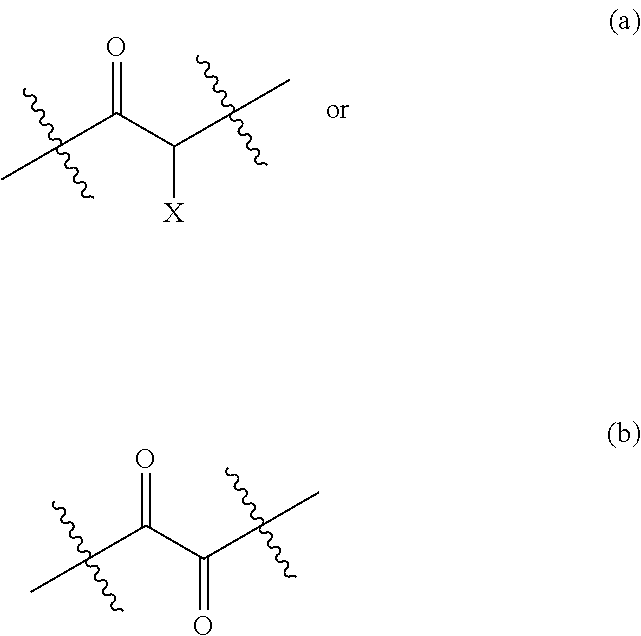



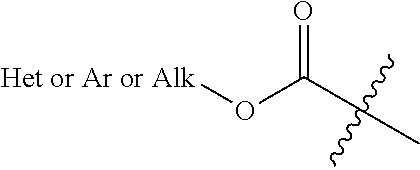
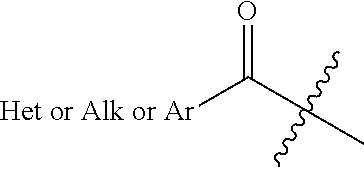









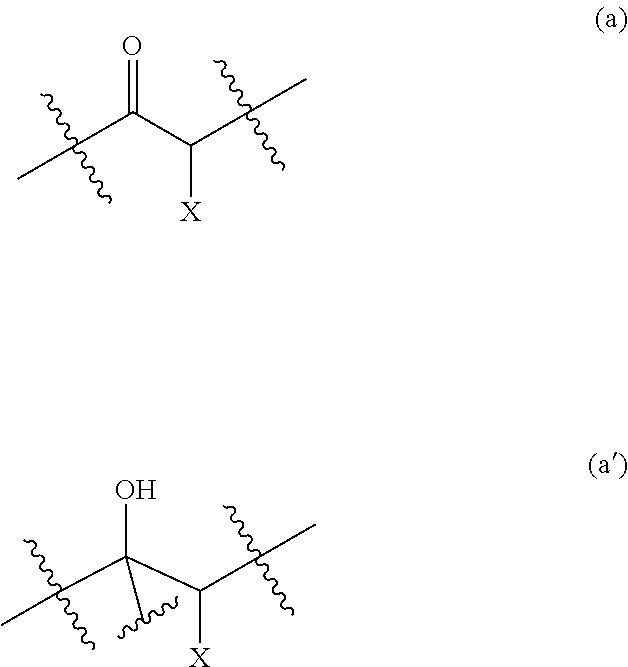


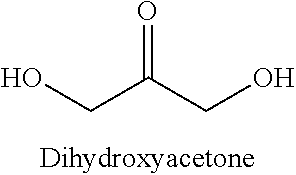

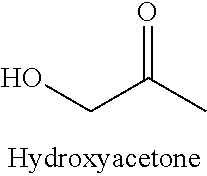

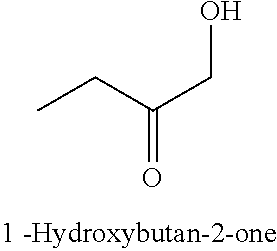



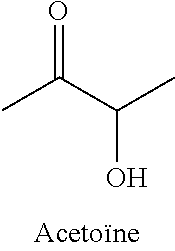
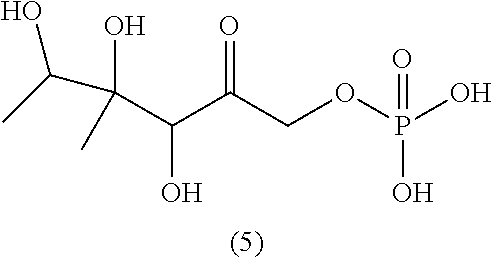


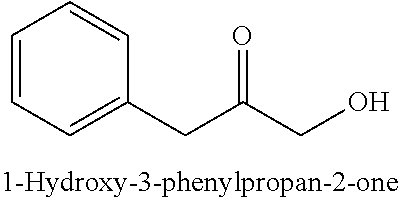




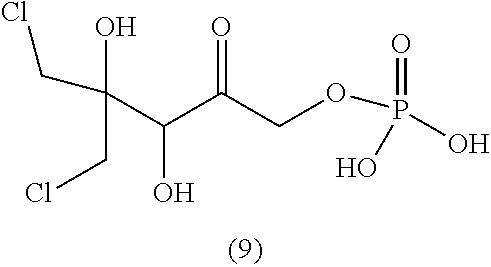
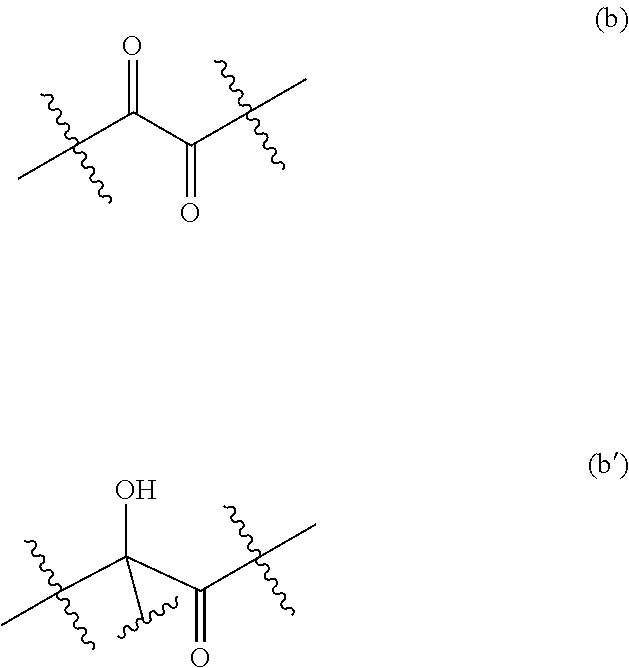



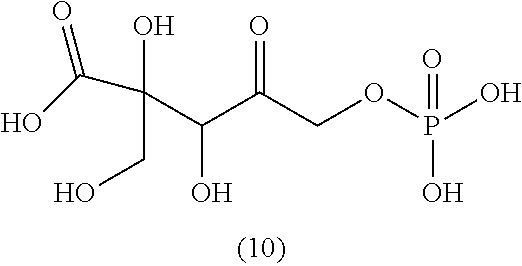

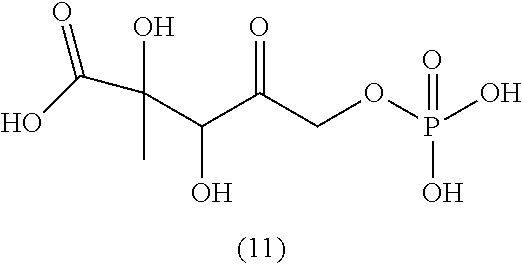





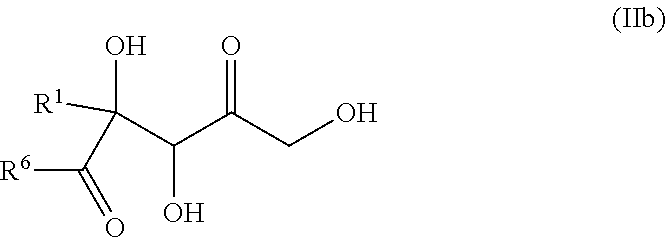






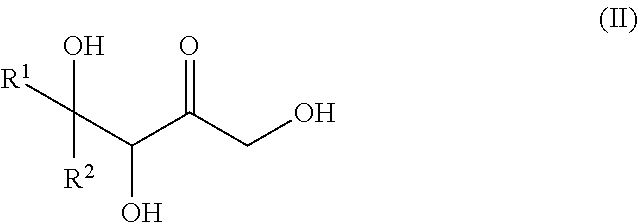

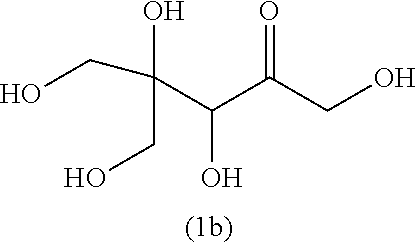






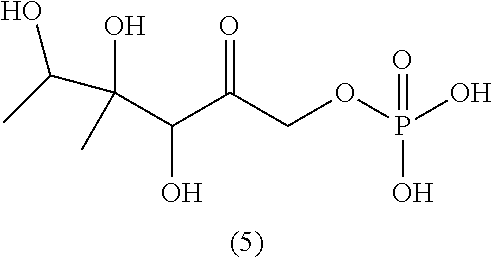

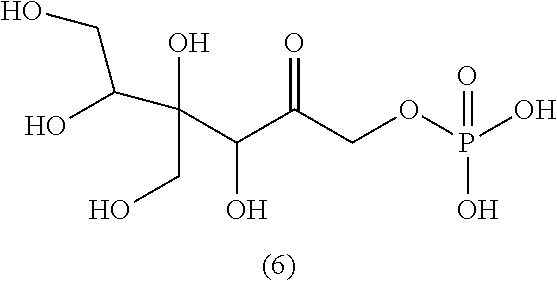

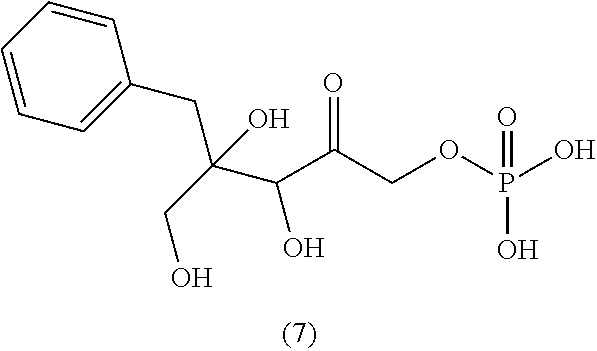








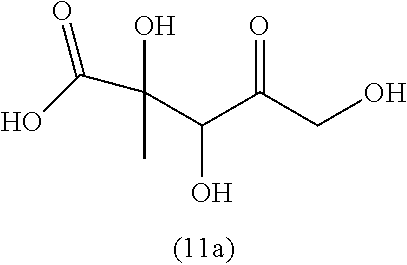
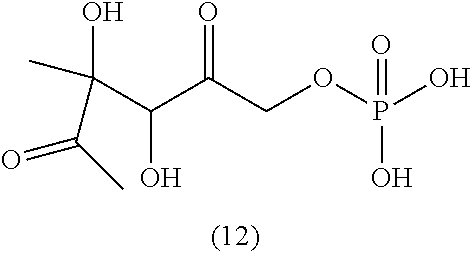

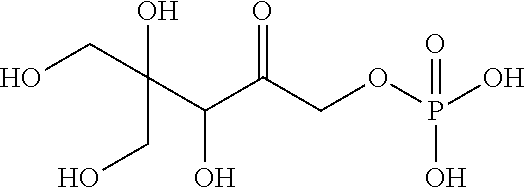




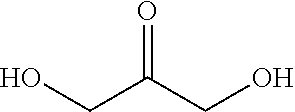

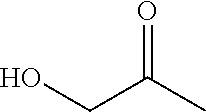





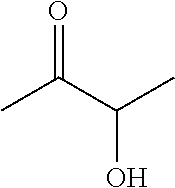
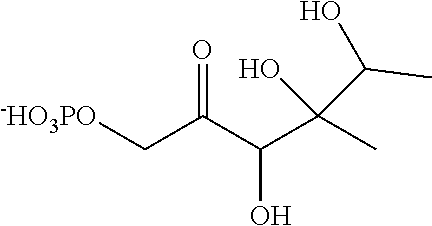

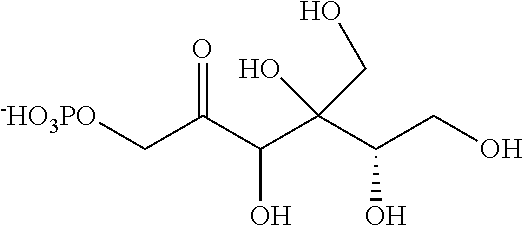
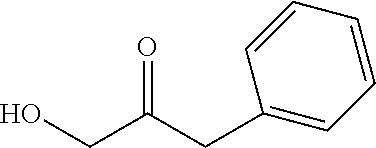




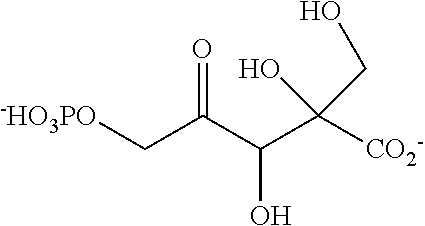

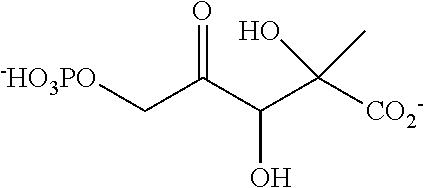







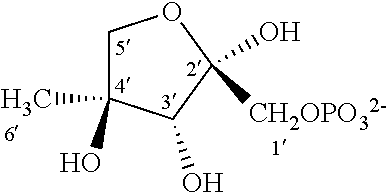


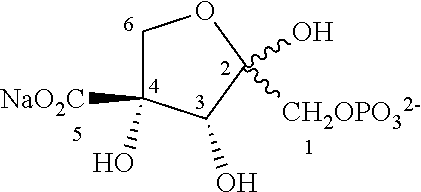
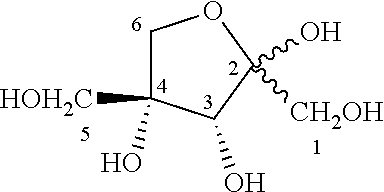





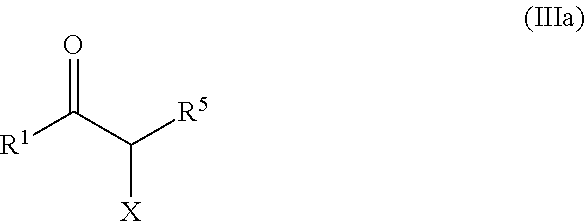

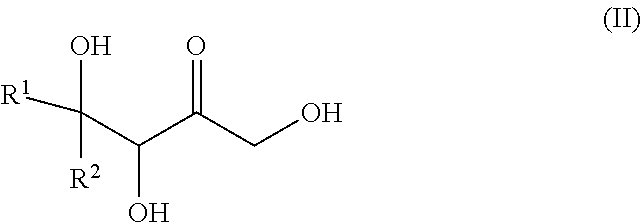



S00001
XML
uspto.report is an independent third-party trademark research tool that is not affiliated, endorsed, or sponsored by the United States Patent and Trademark Office (USPTO) or any other governmental organization. The information provided by uspto.report is based on publicly available data at the time of writing and is intended for informational purposes only.
While we strive to provide accurate and up-to-date information, we do not guarantee the accuracy, completeness, reliability, or suitability of the information displayed on this site. The use of this site is at your own risk. Any reliance you place on such information is therefore strictly at your own risk.
All official trademark data, including owner information, should be verified by visiting the official USPTO website at www.uspto.gov. This site is not intended to replace professional legal advice and should not be used as a substitute for consulting with a legal professional who is knowledgeable about trademark law.